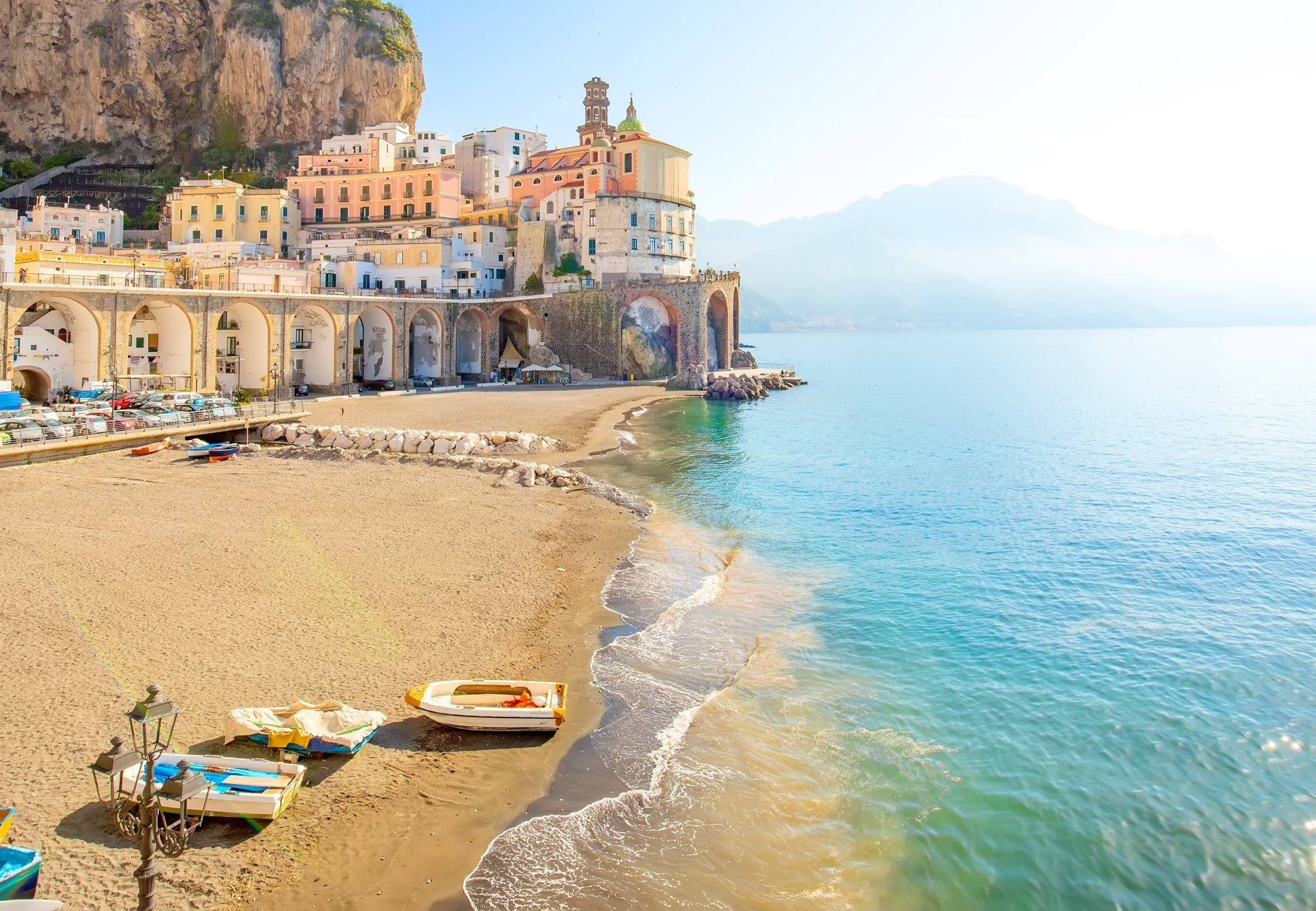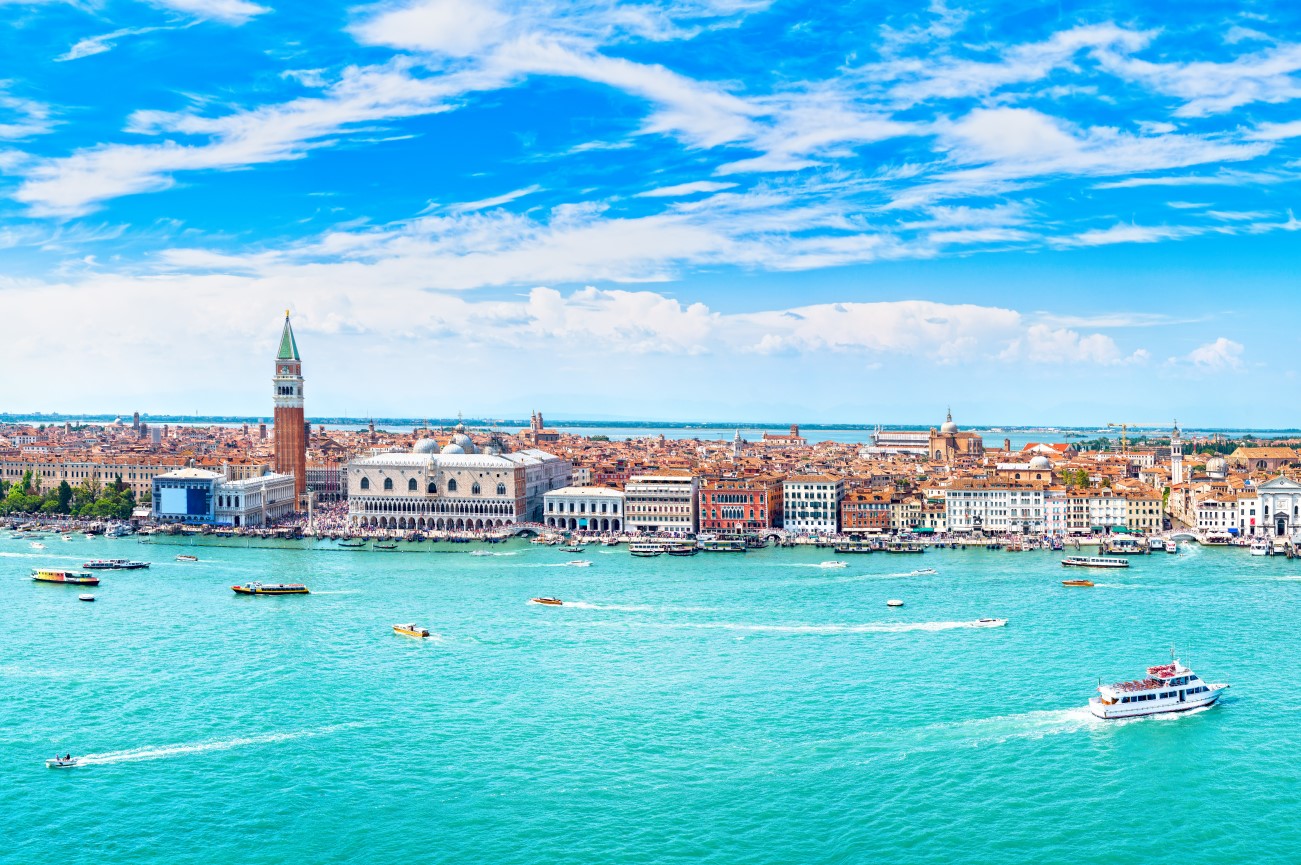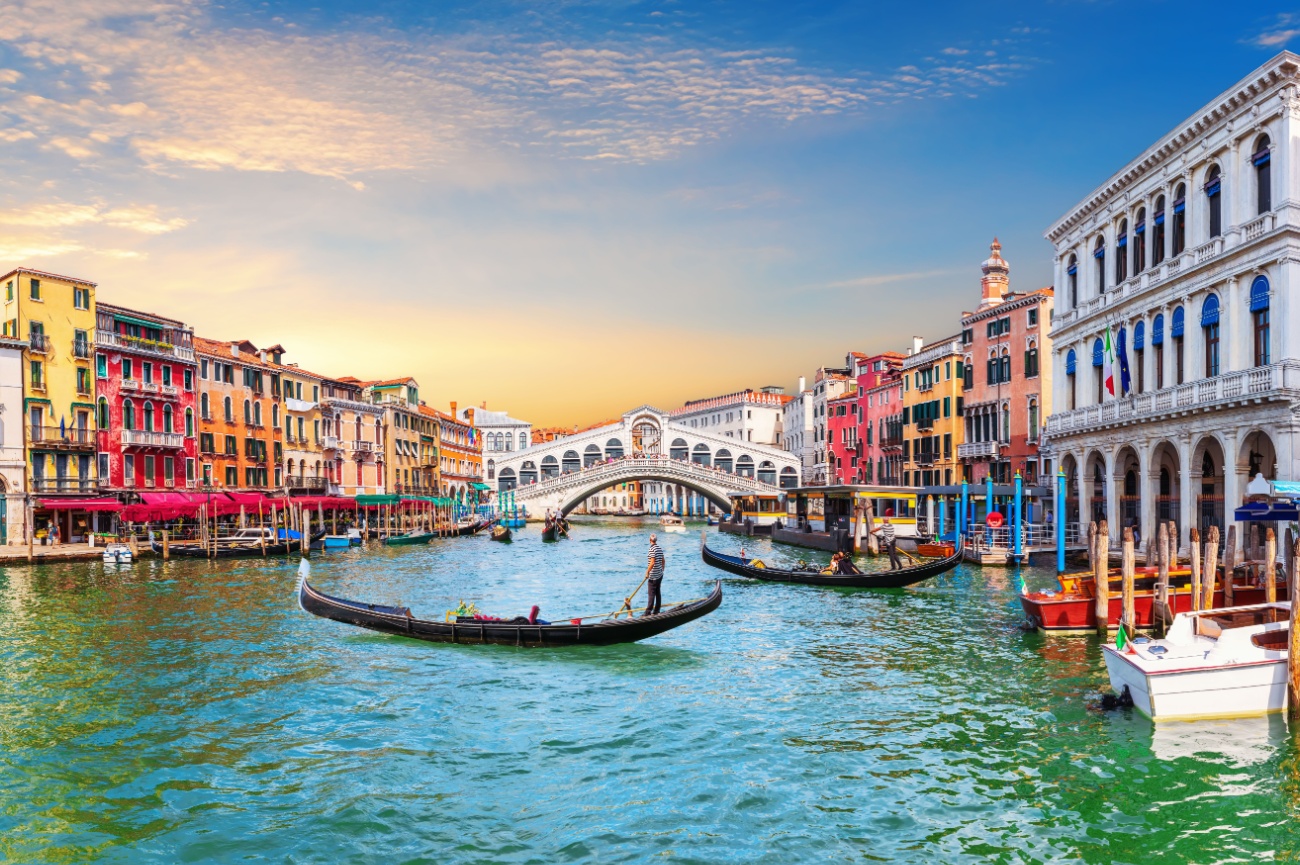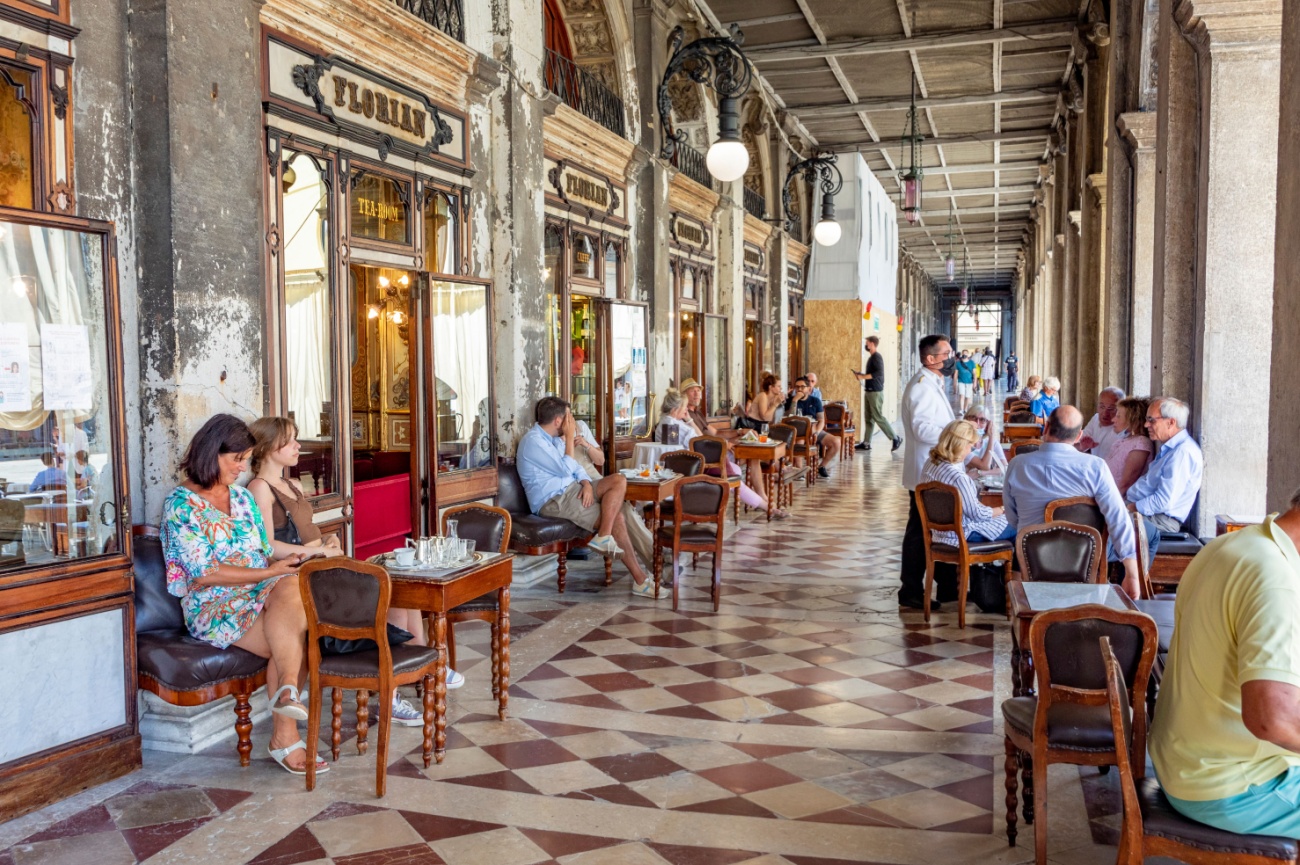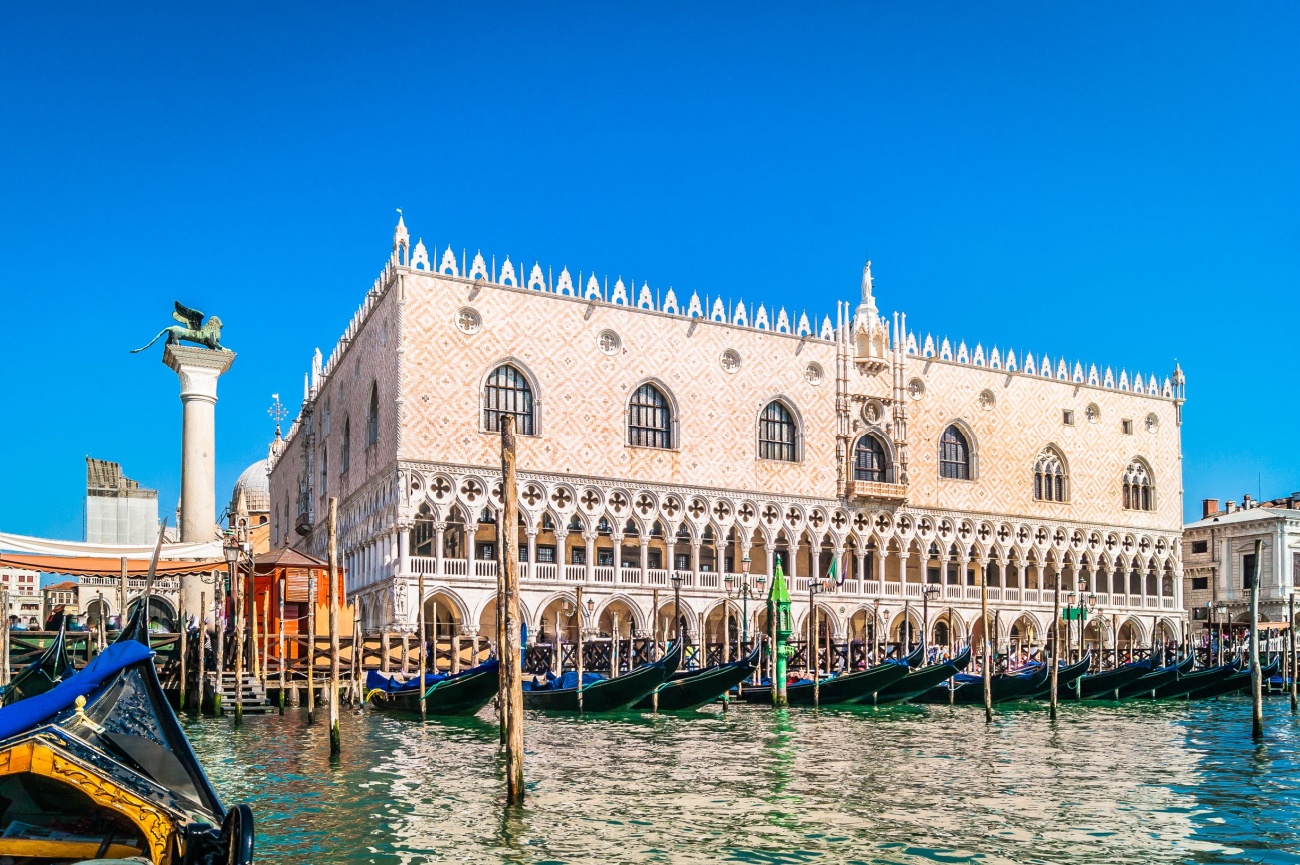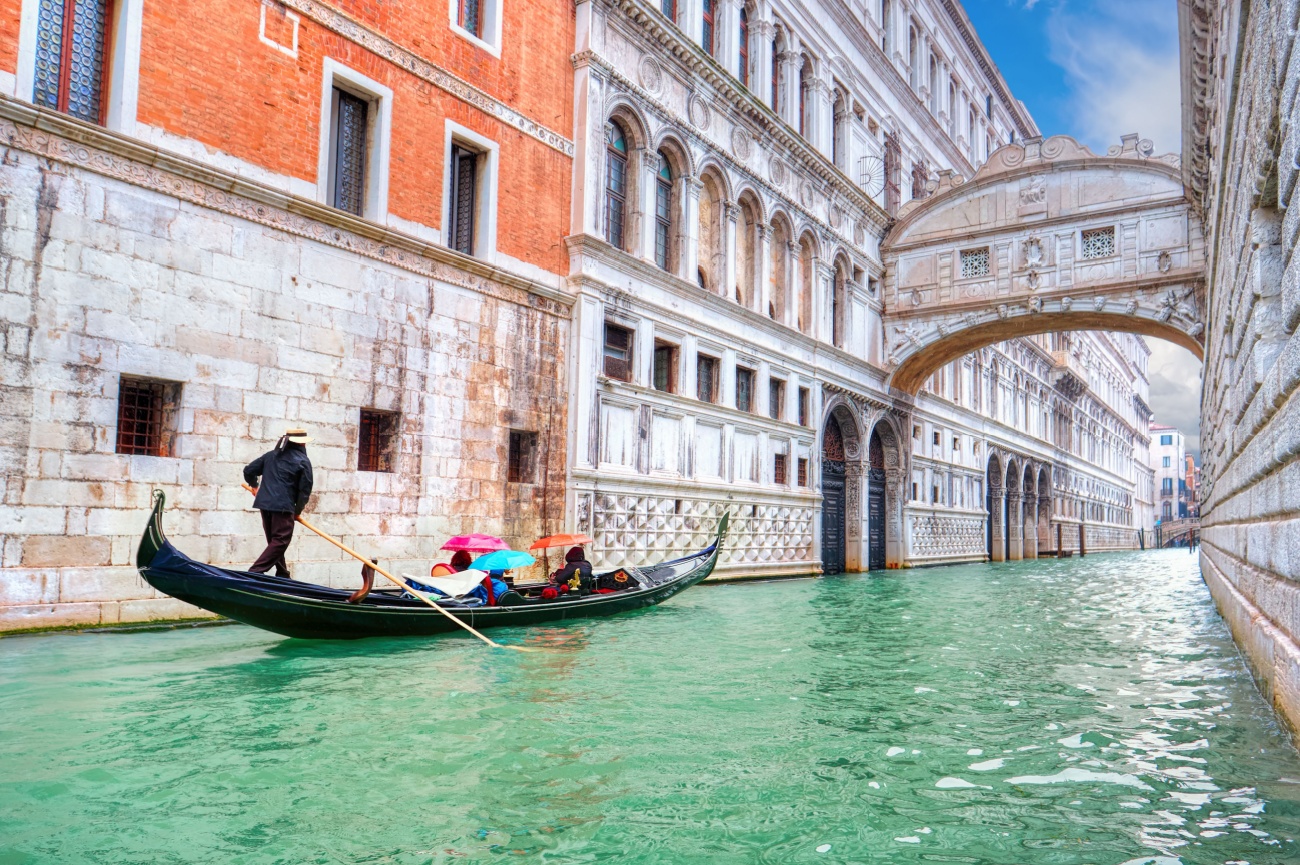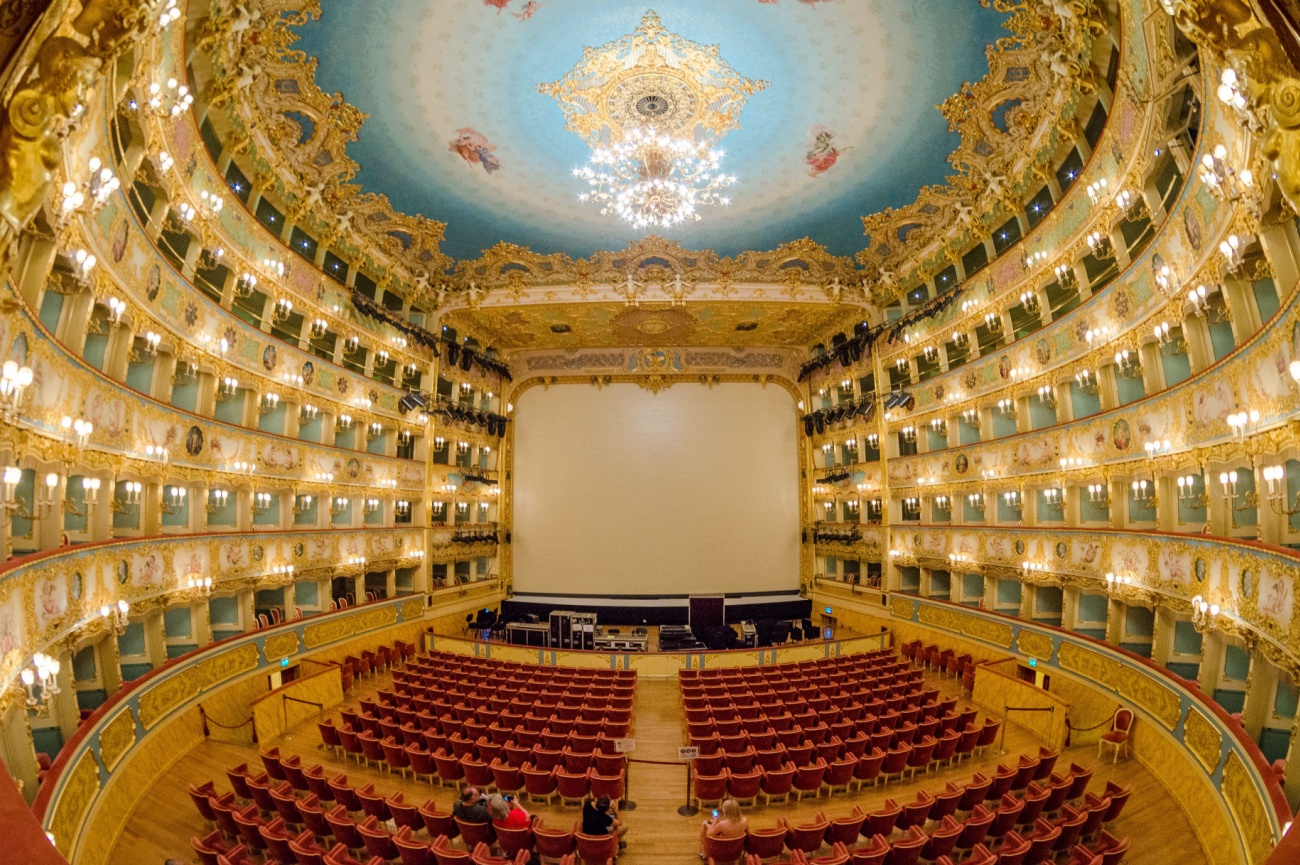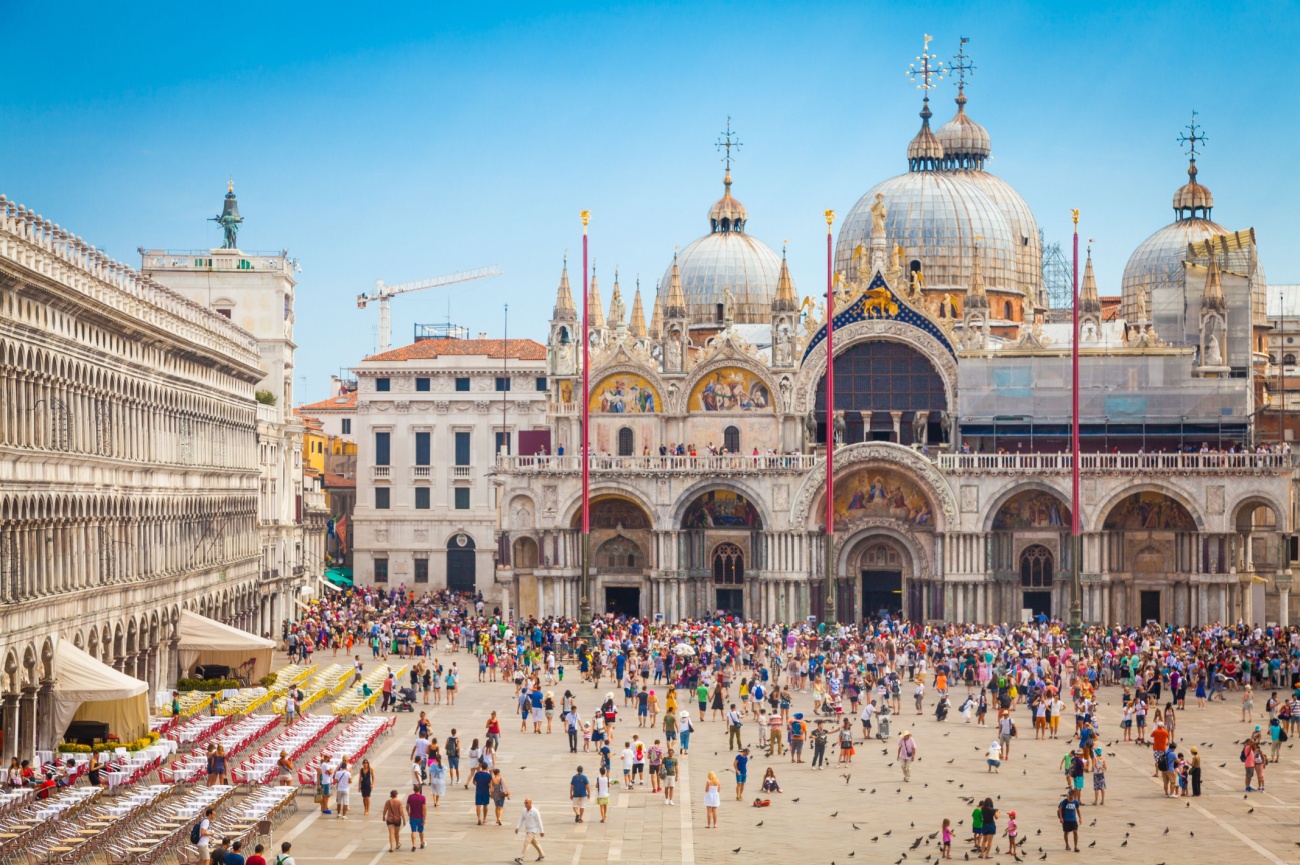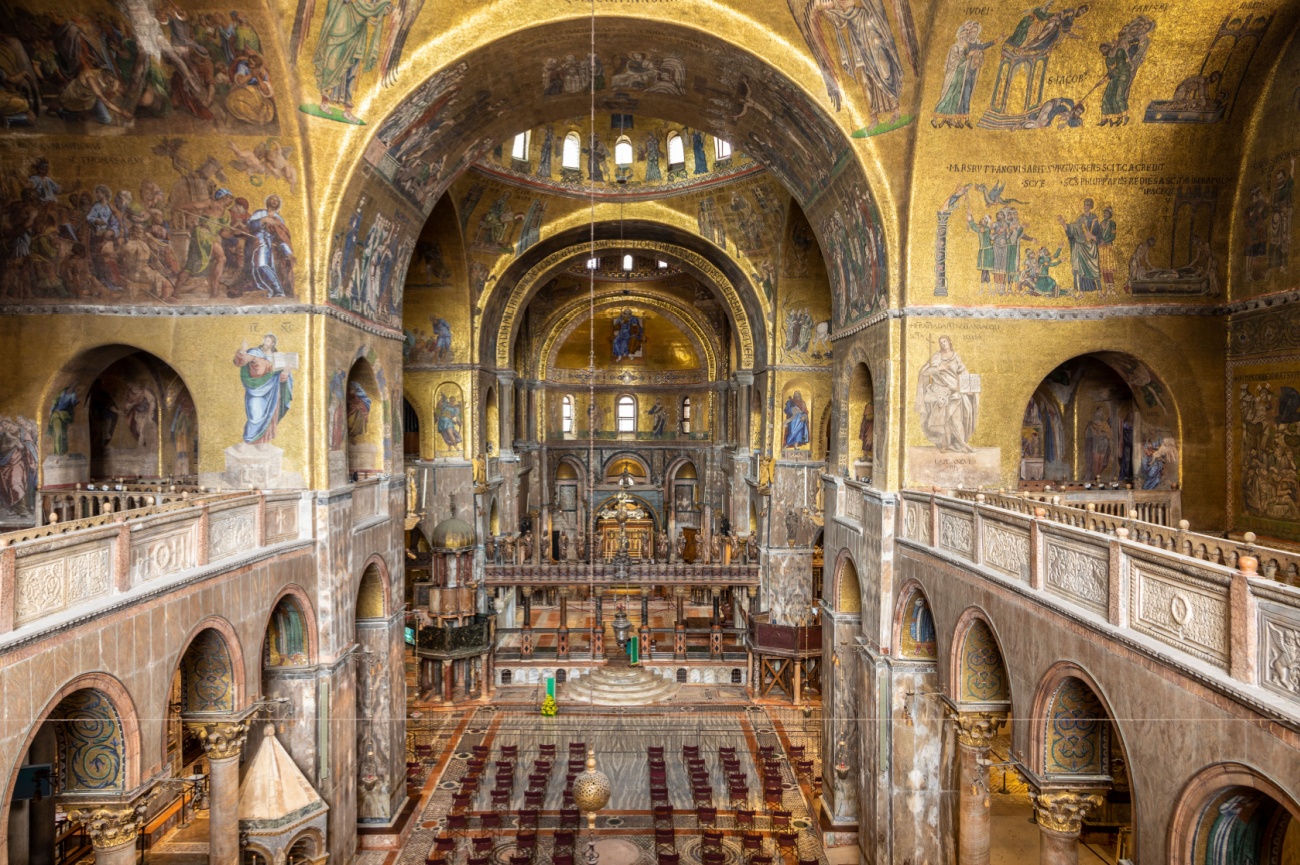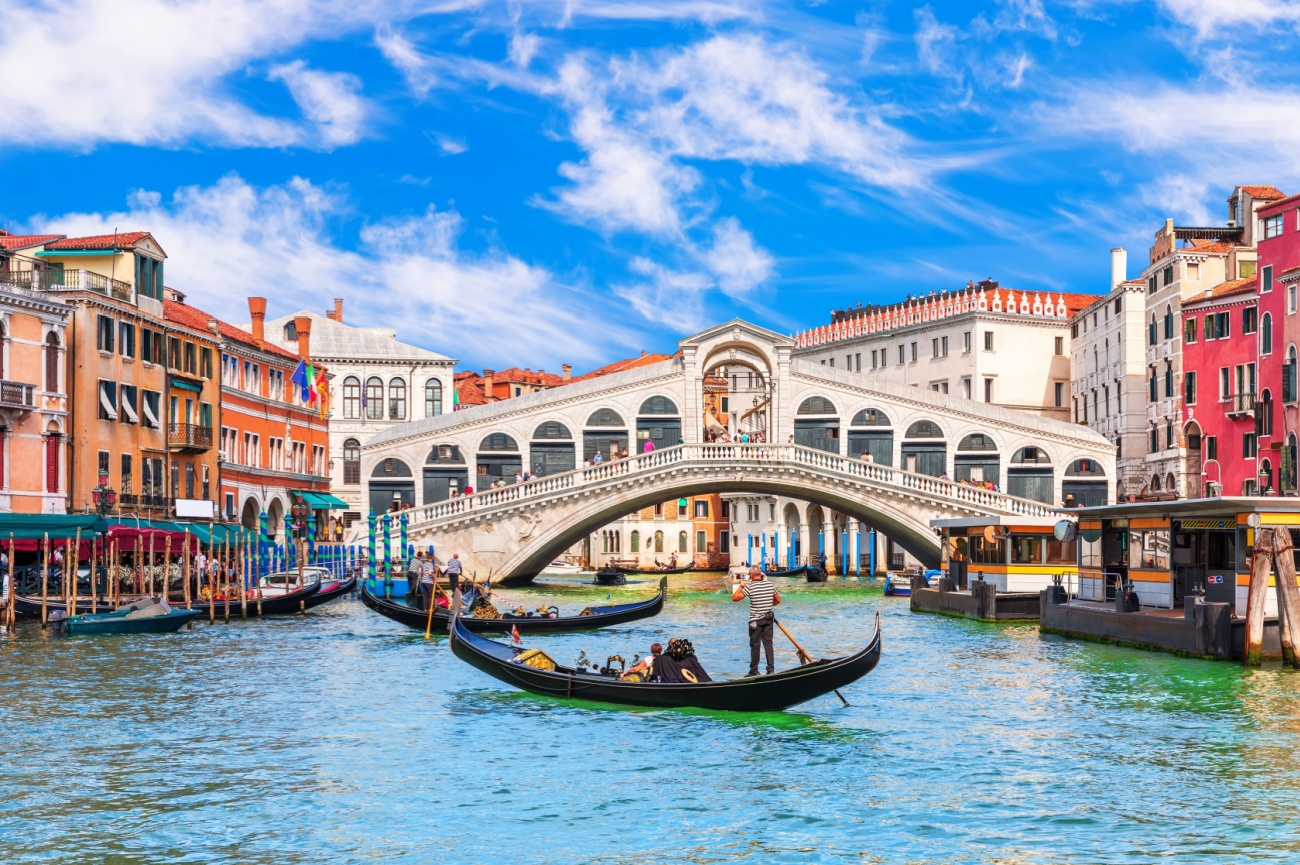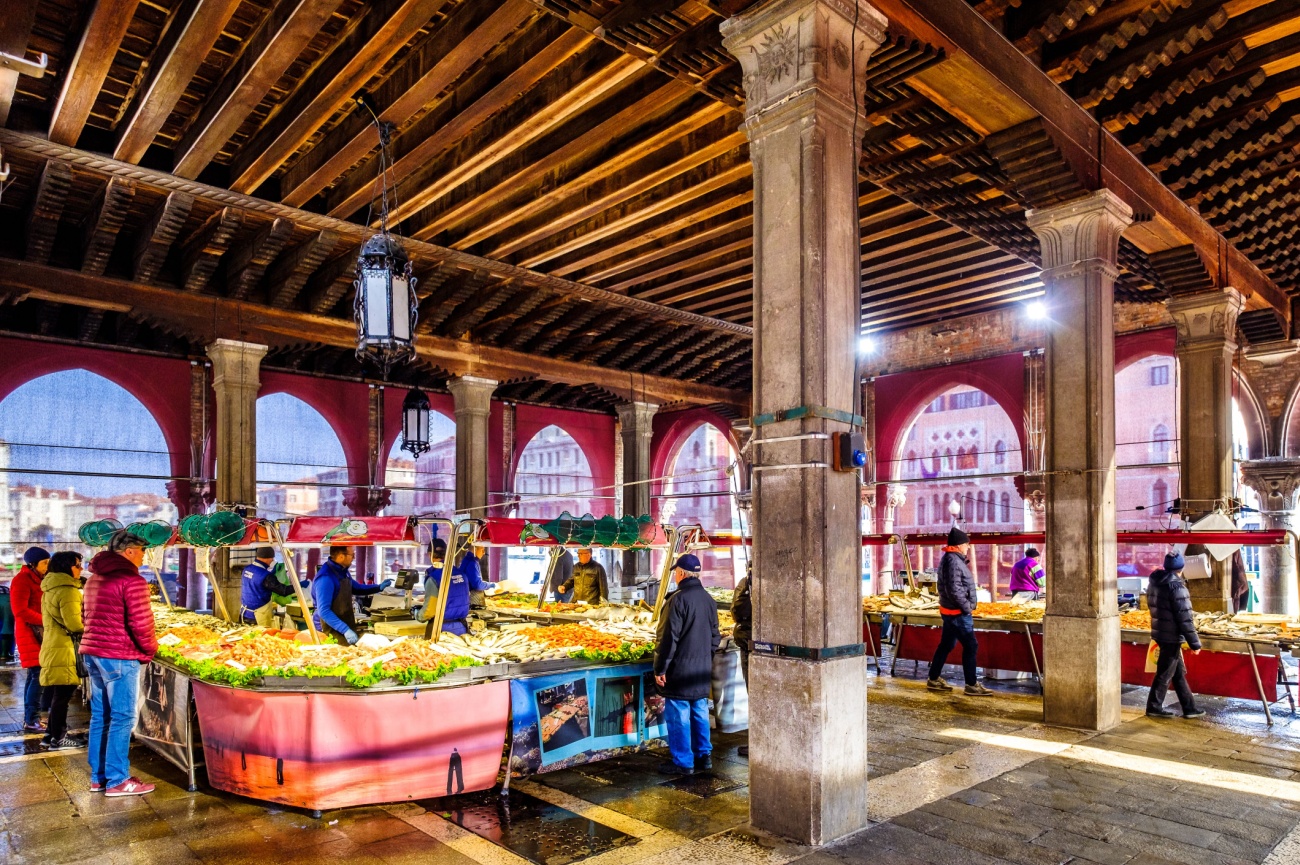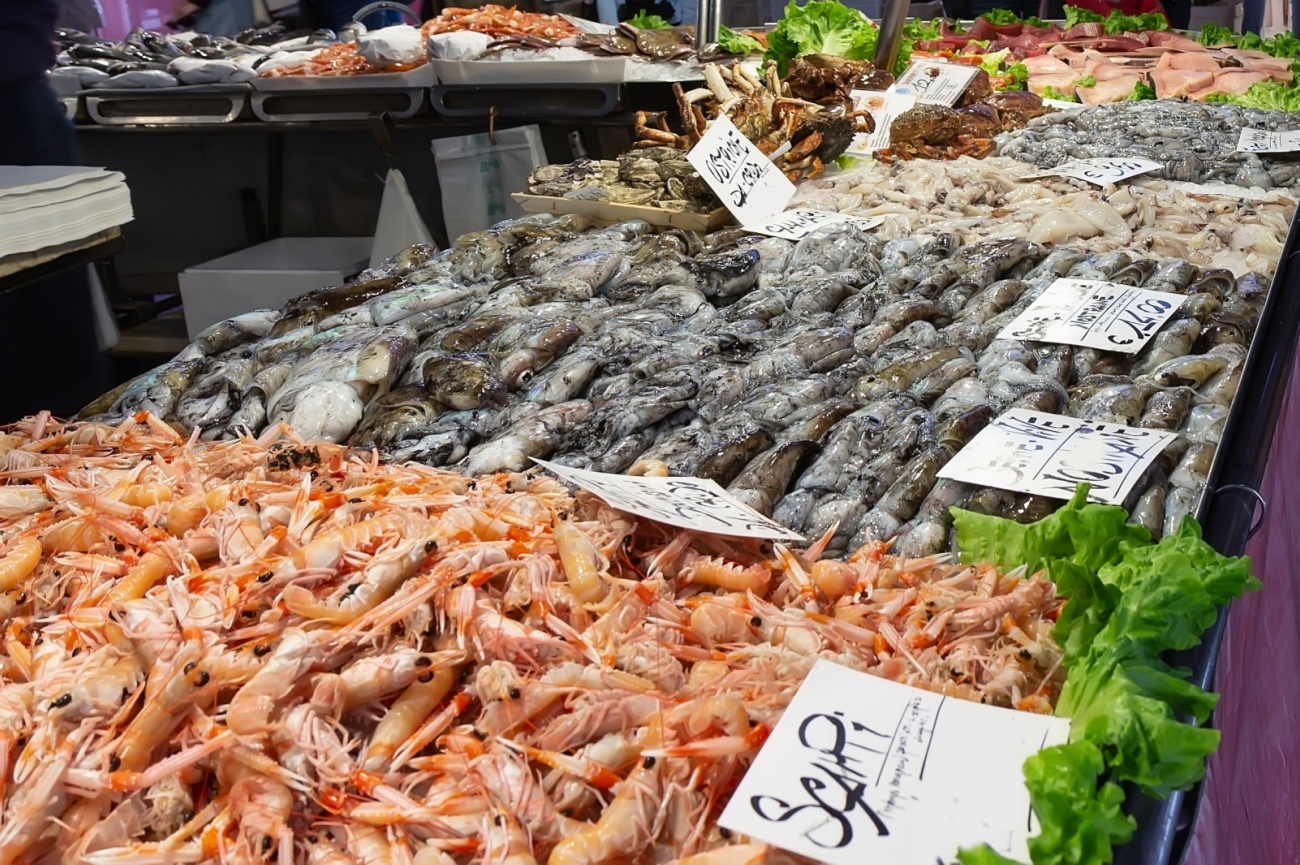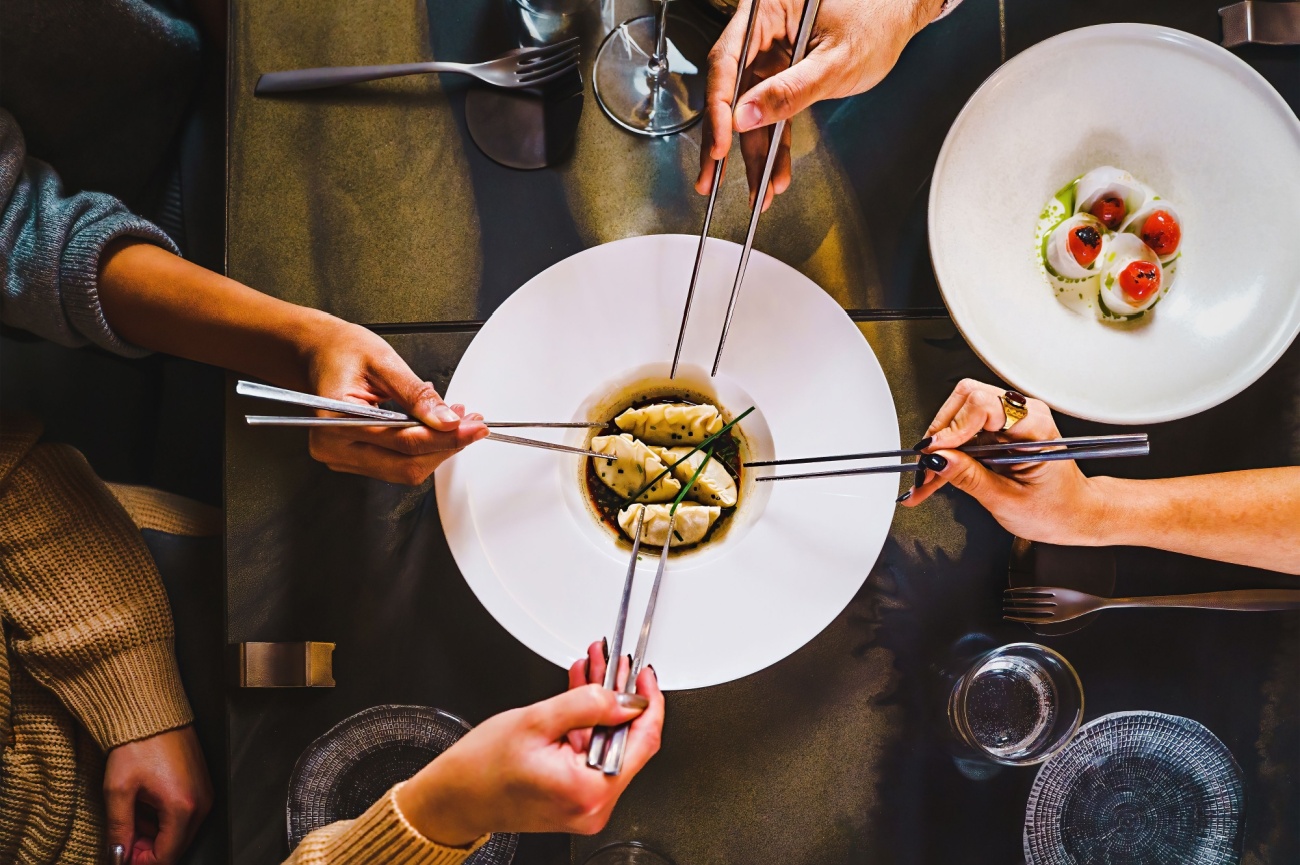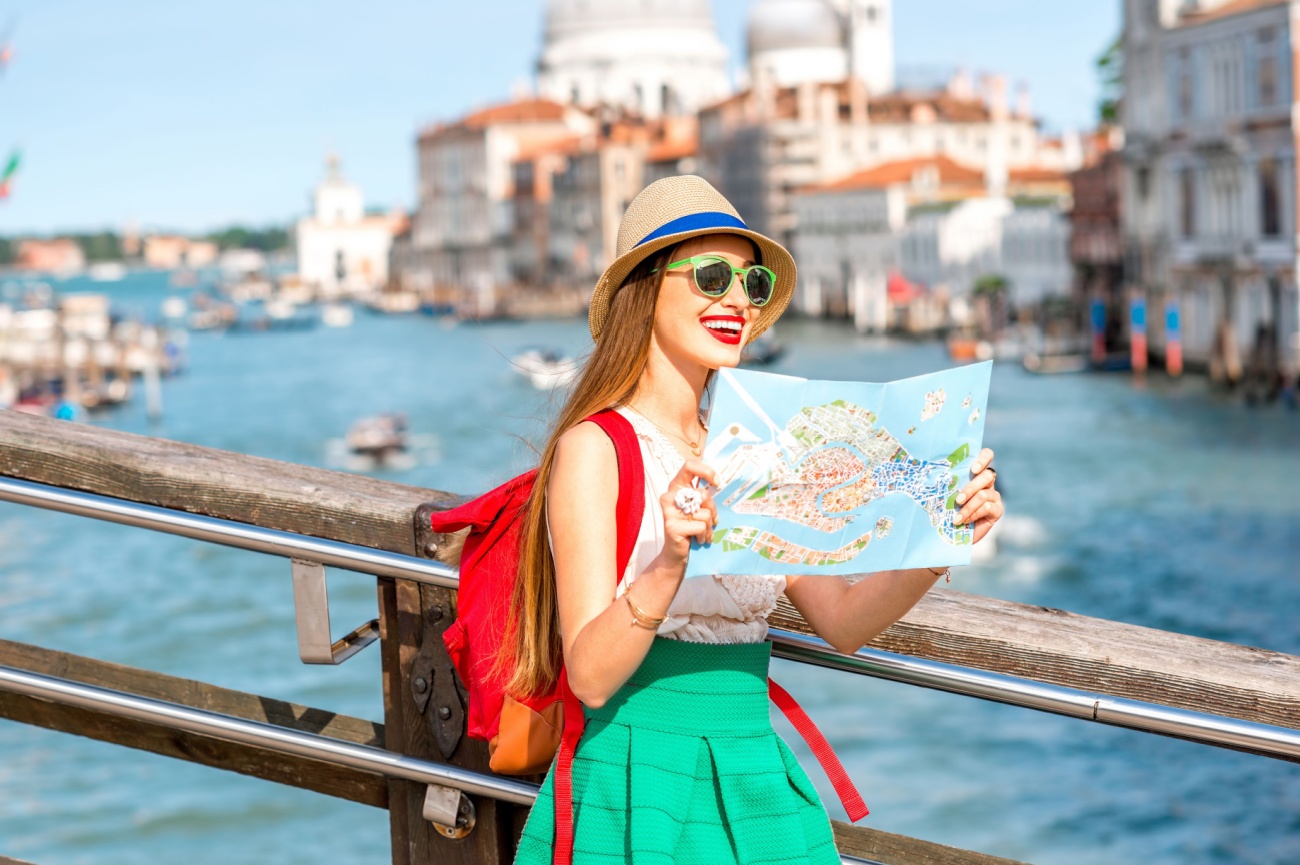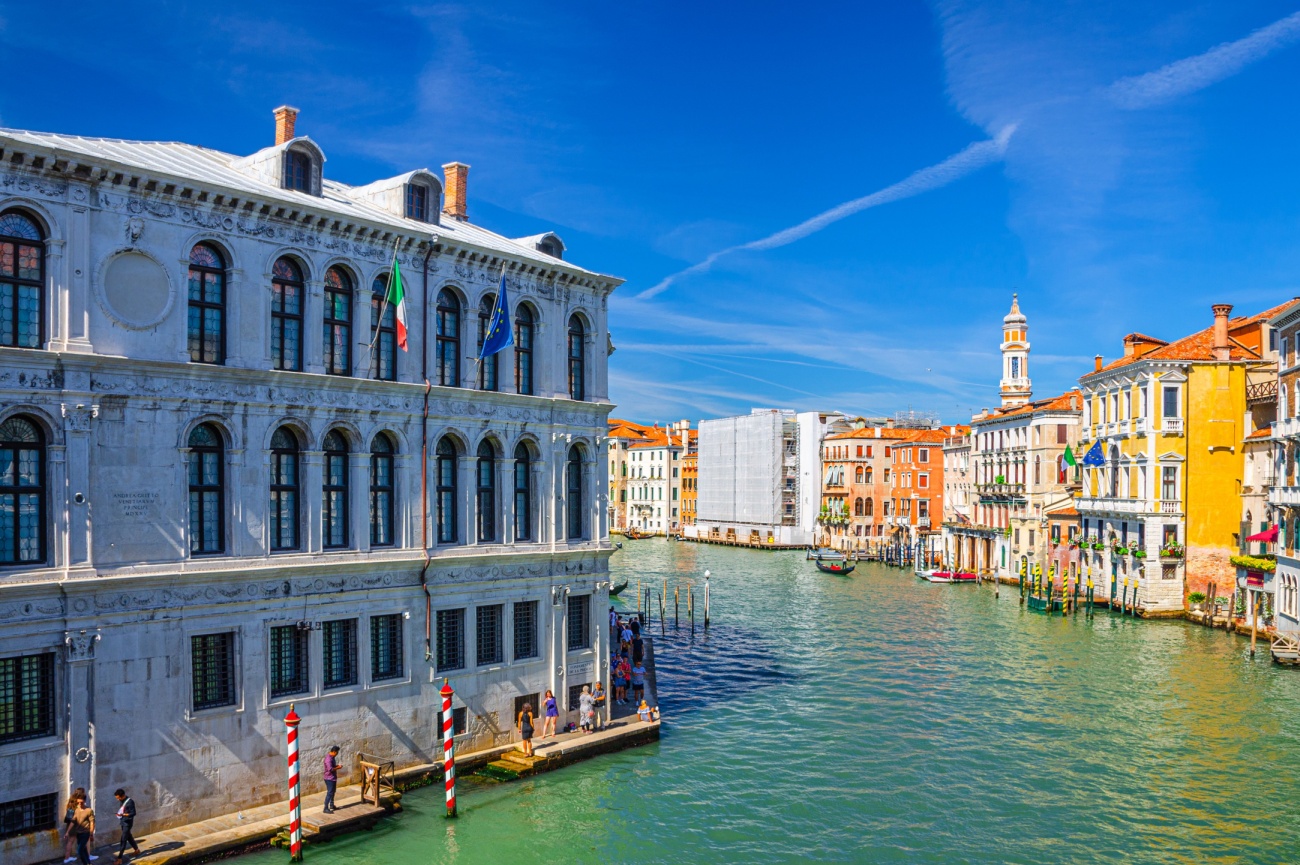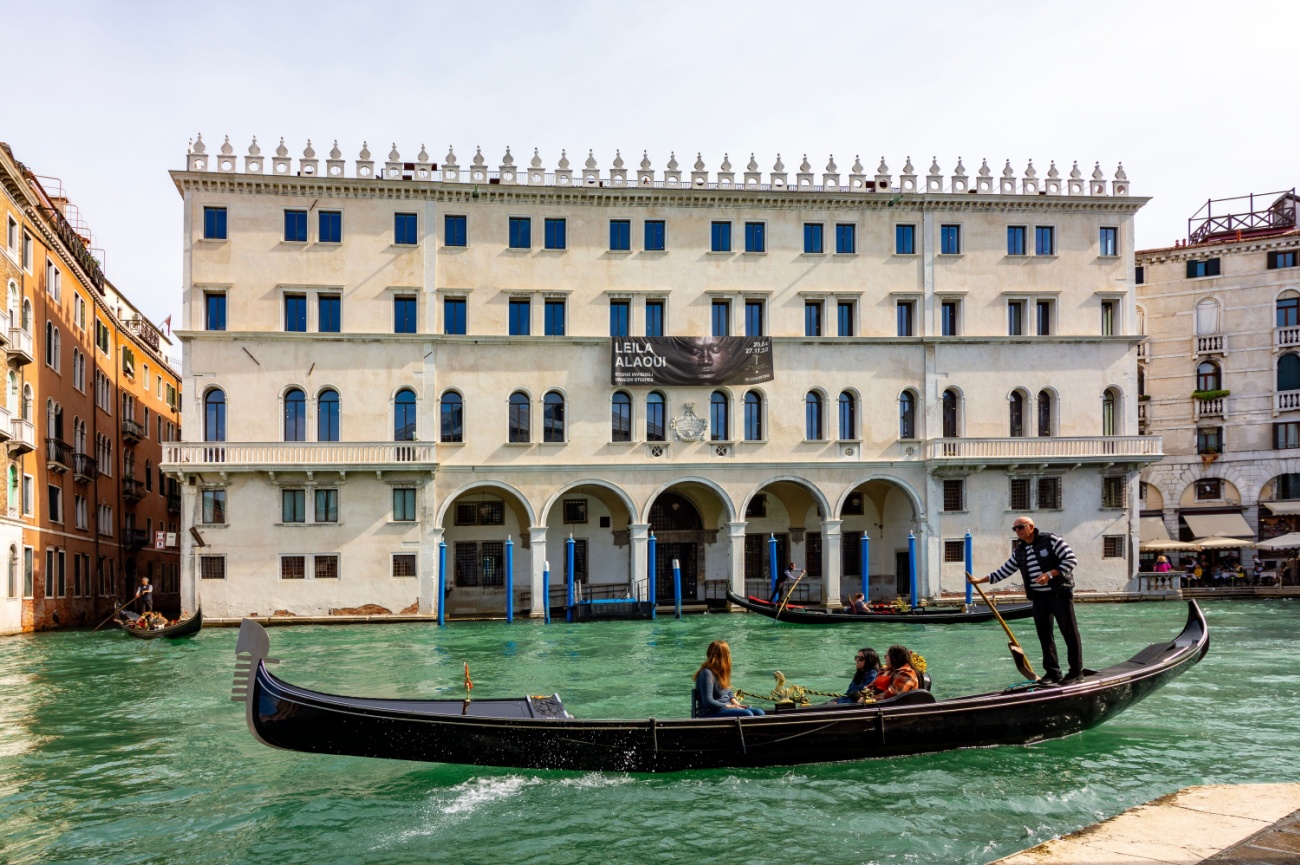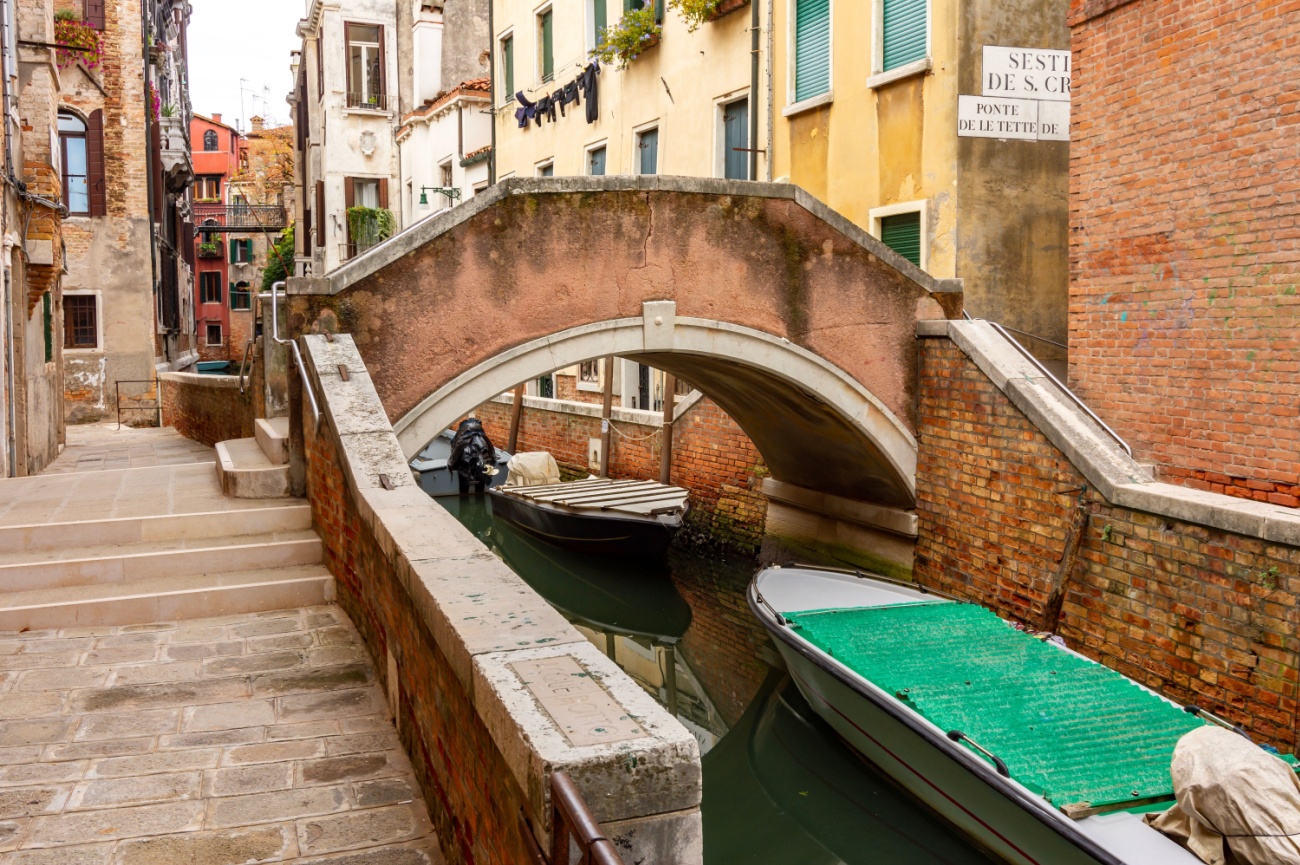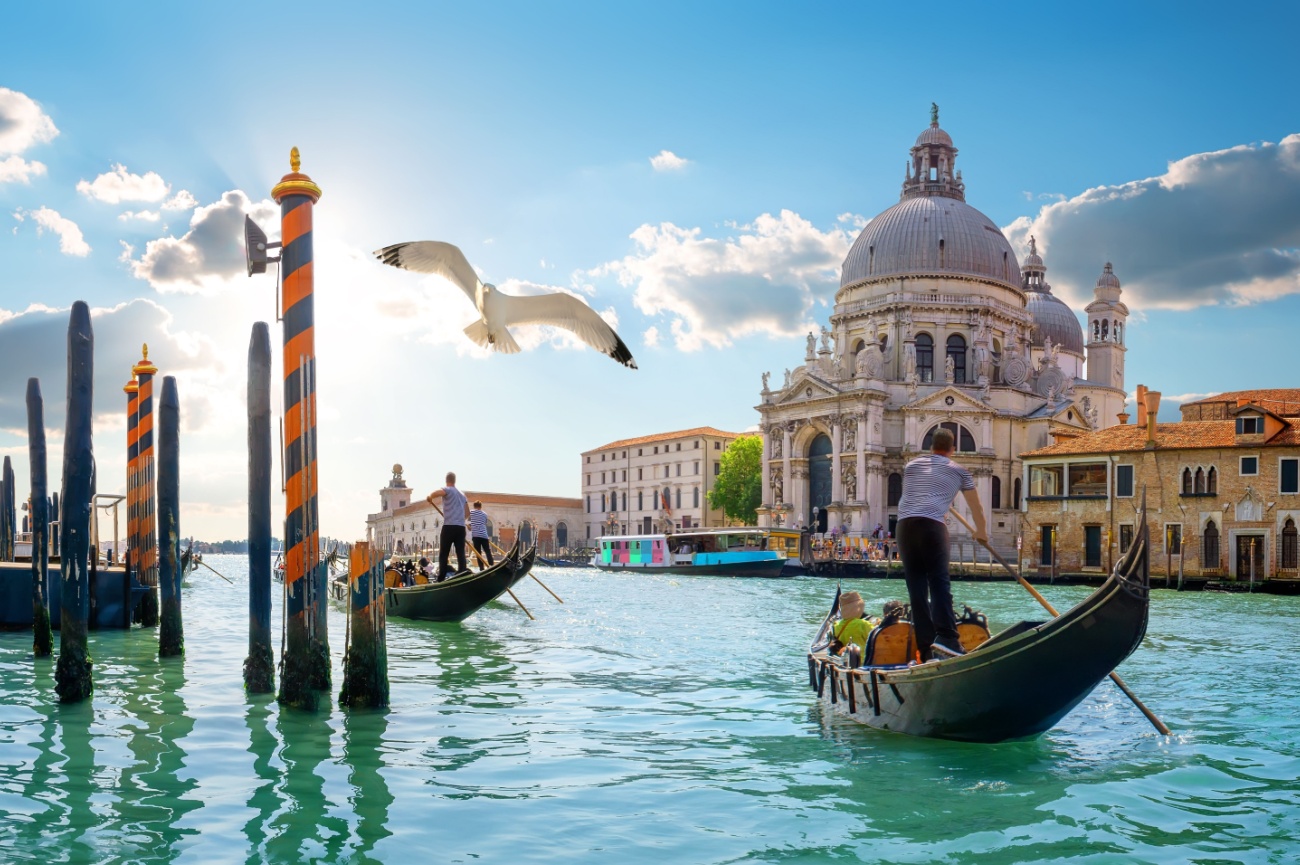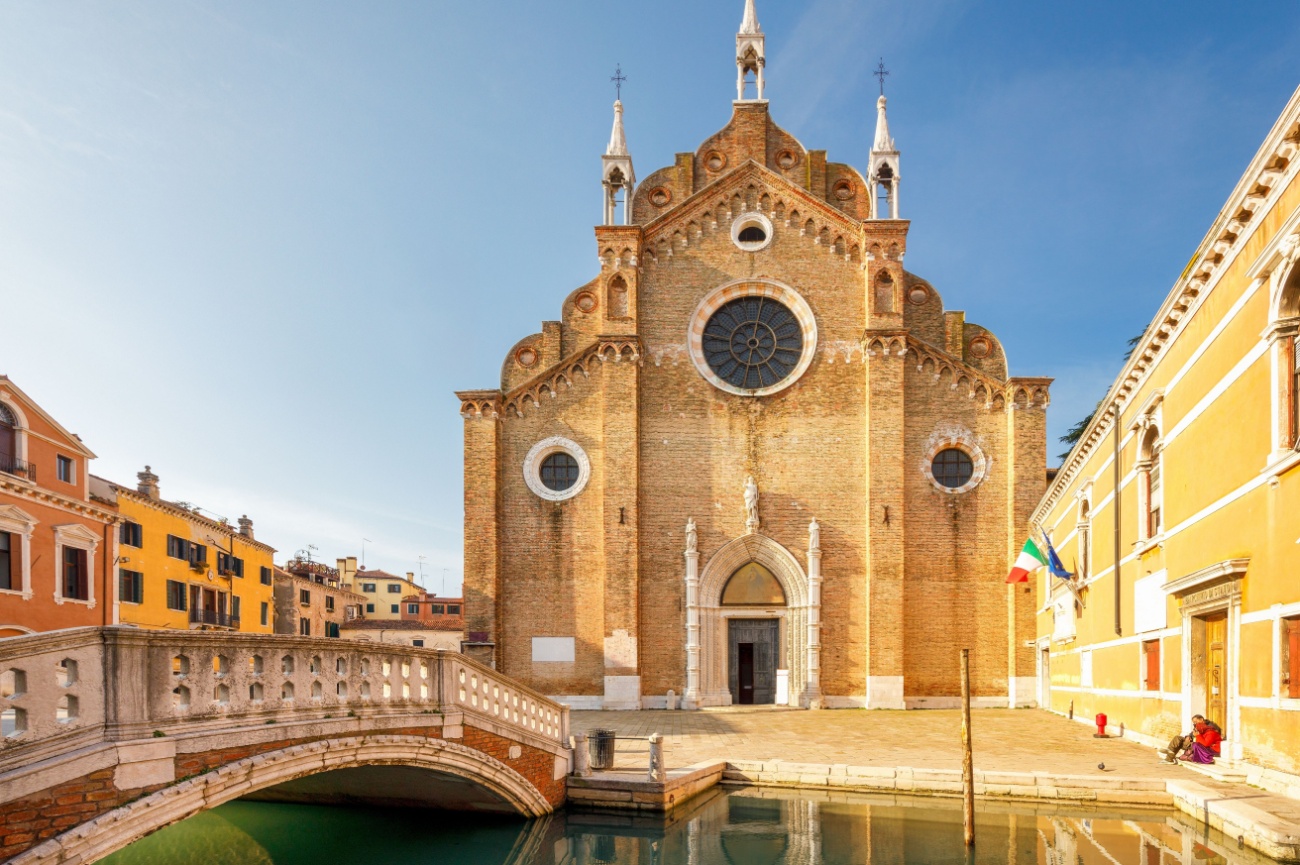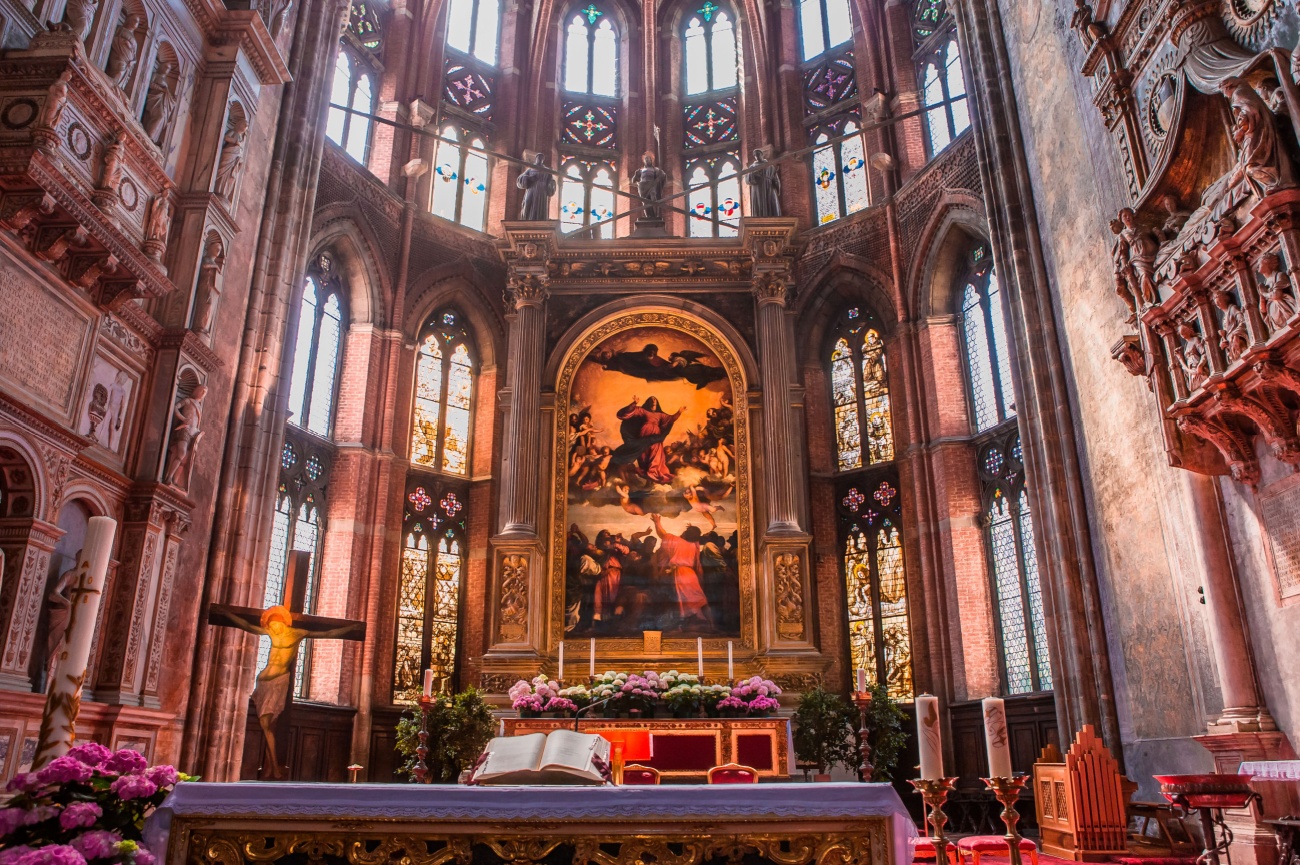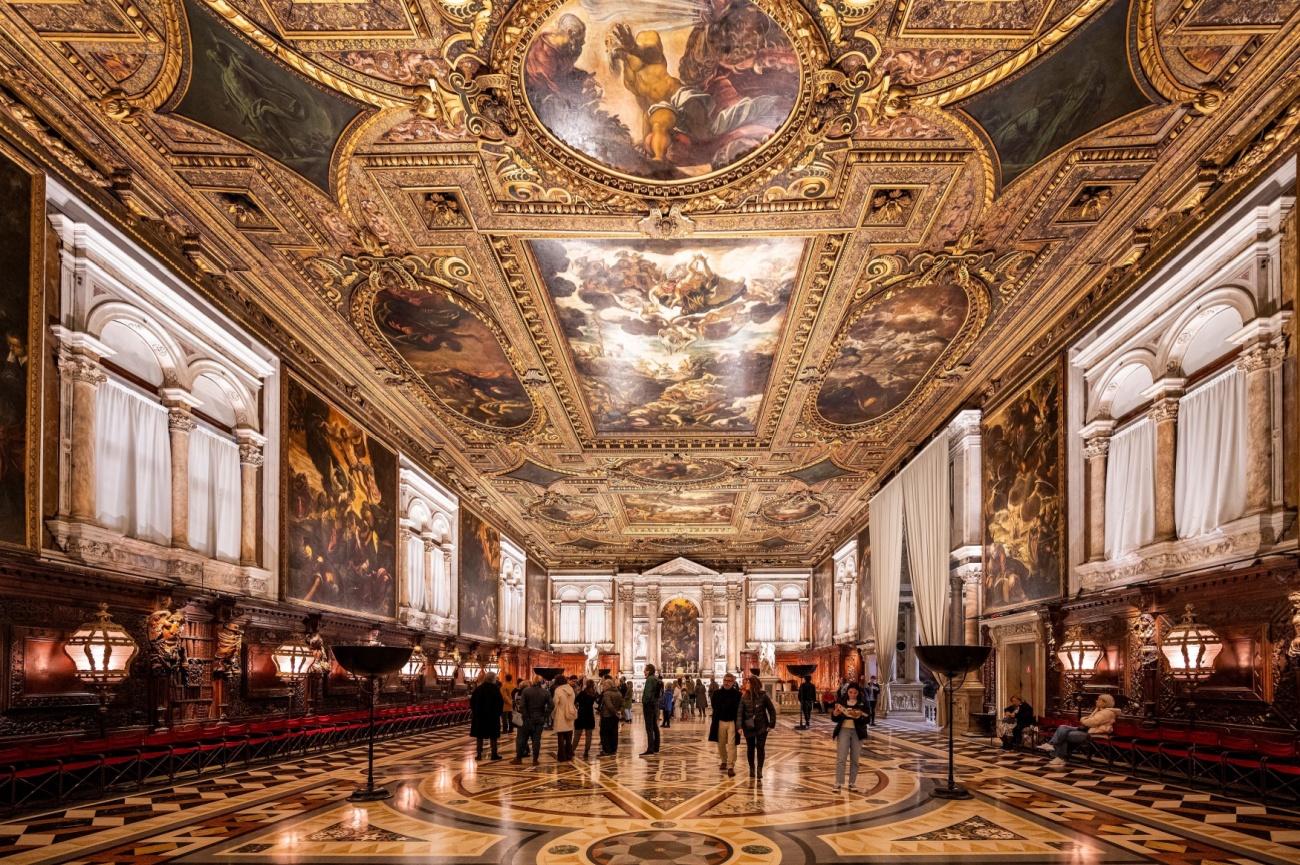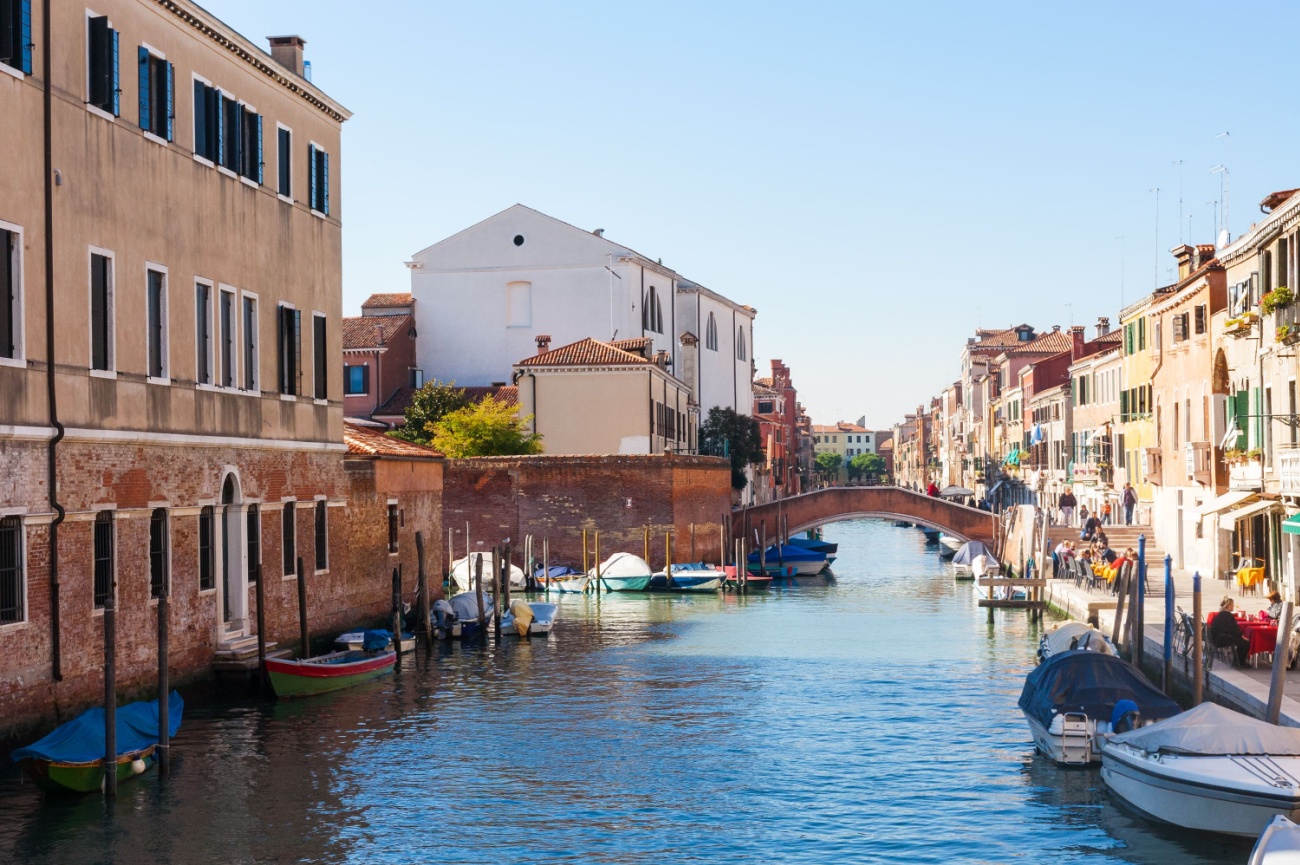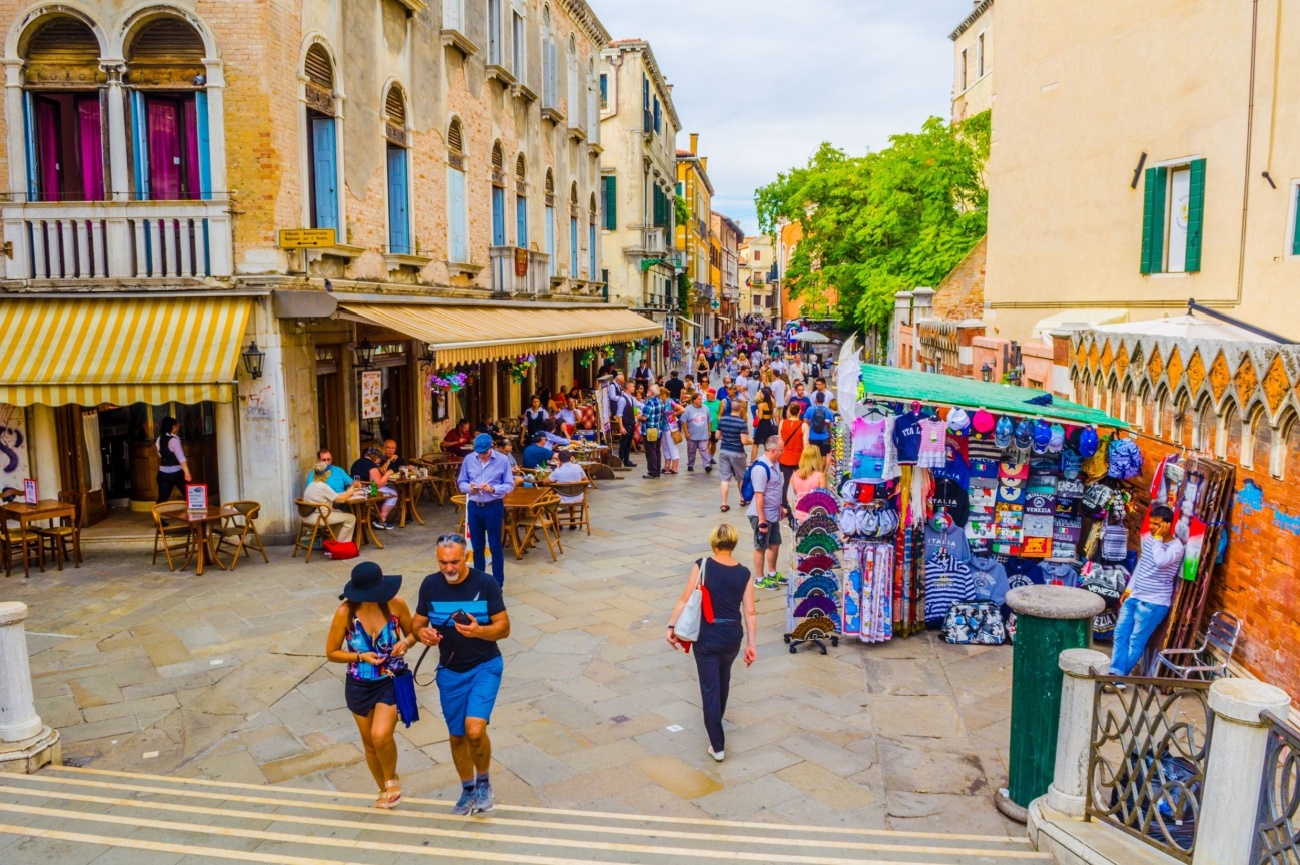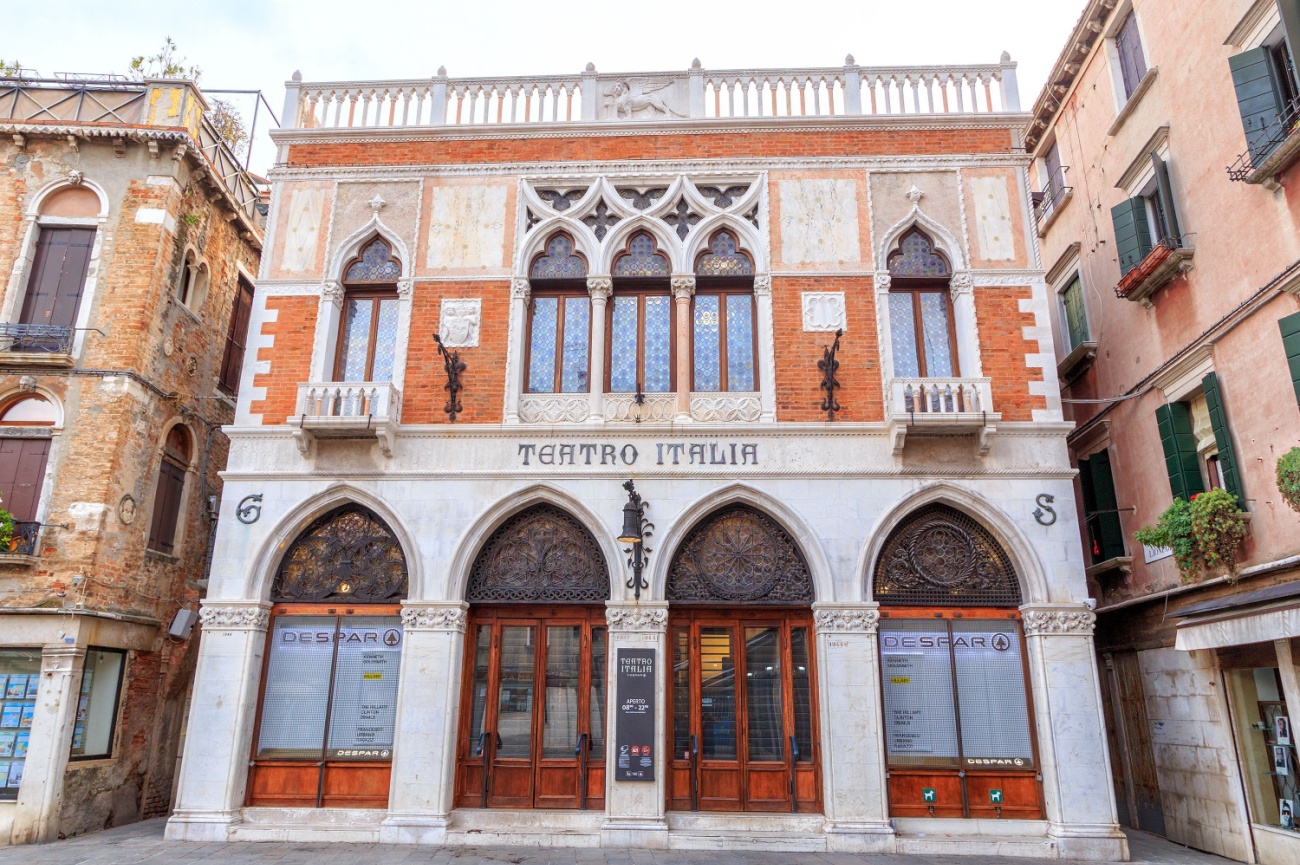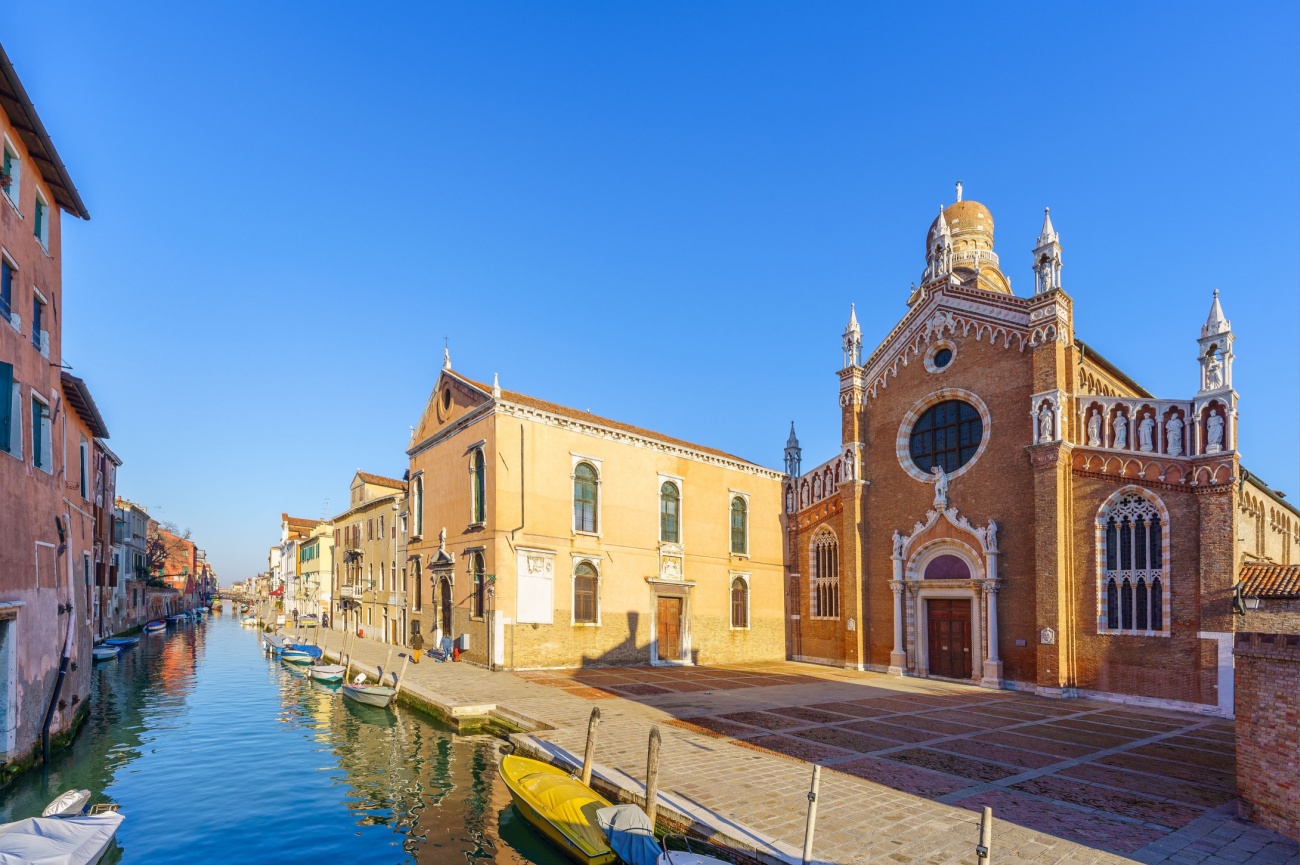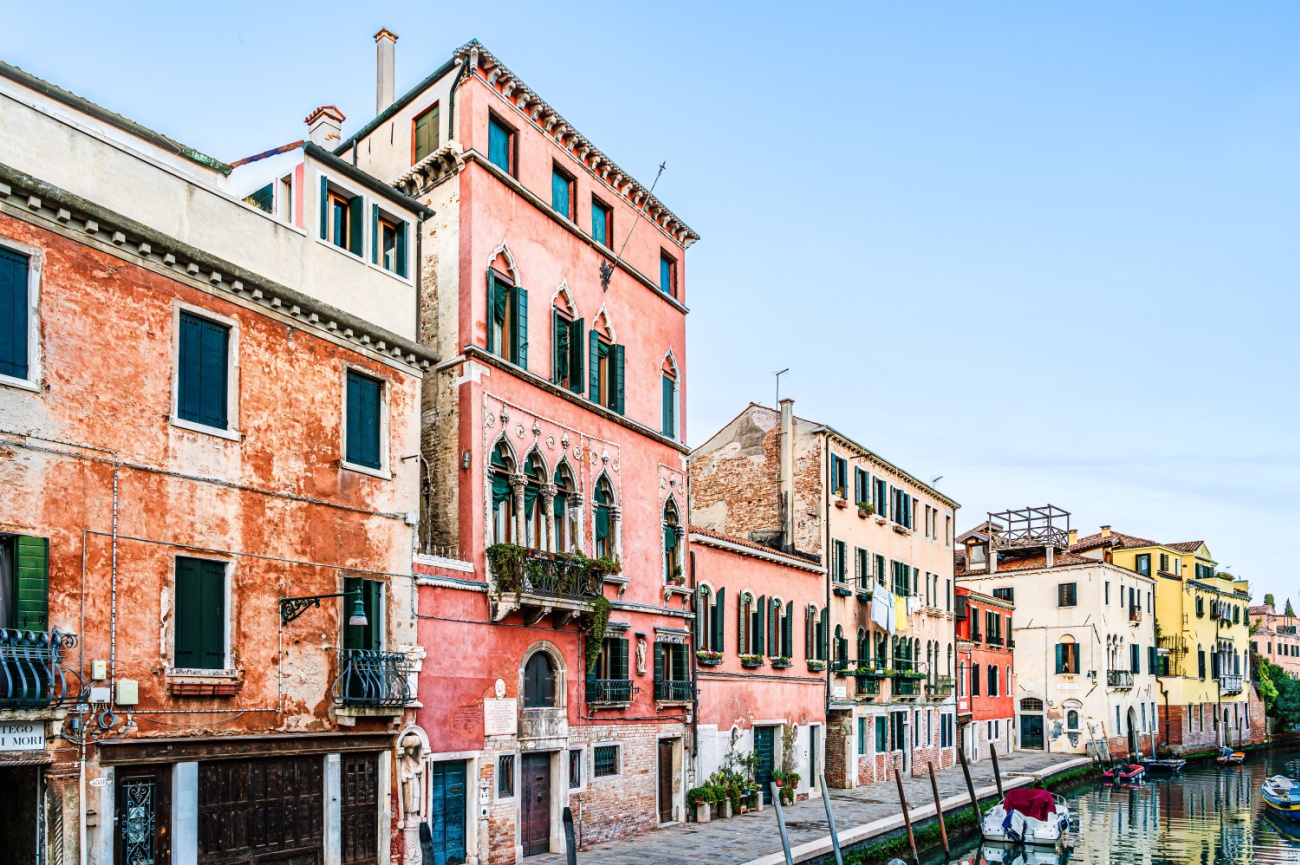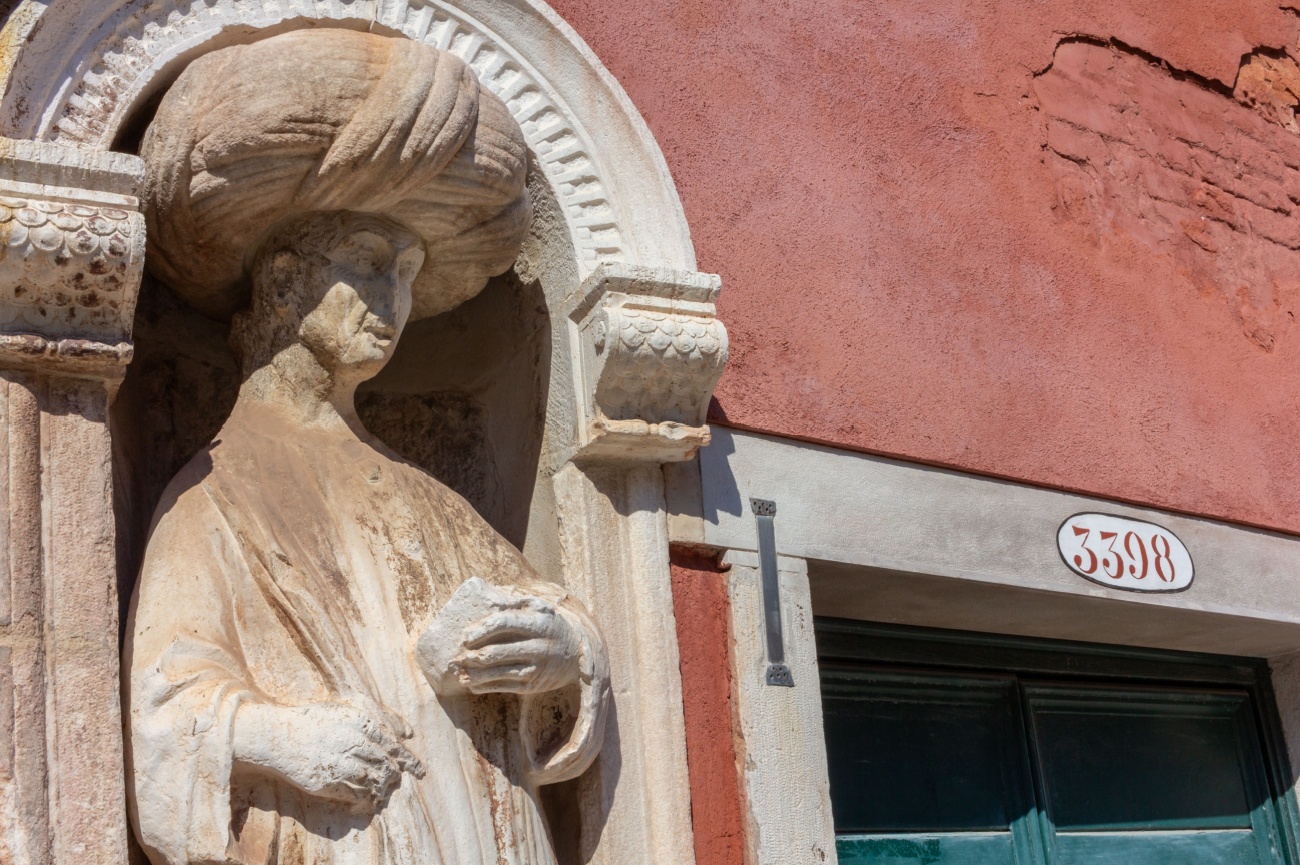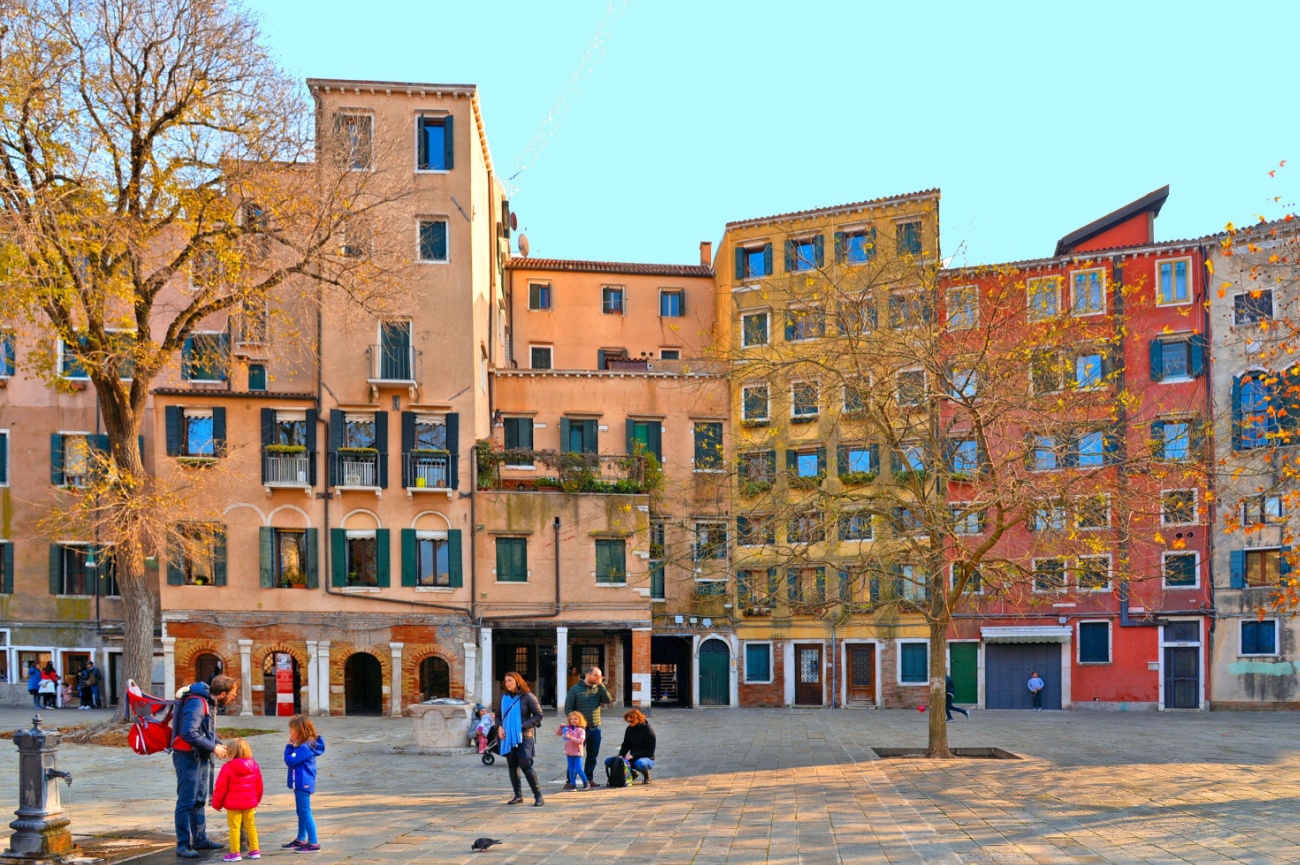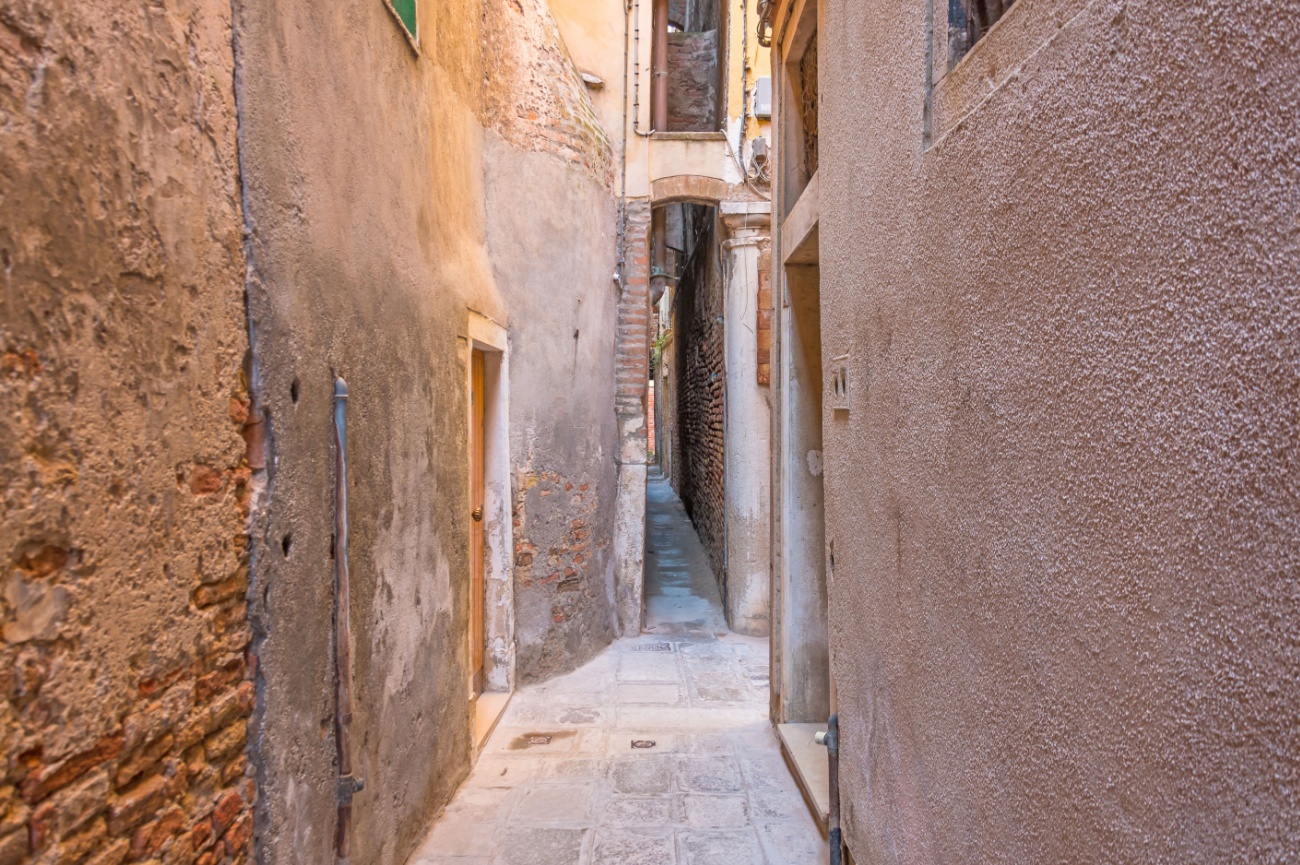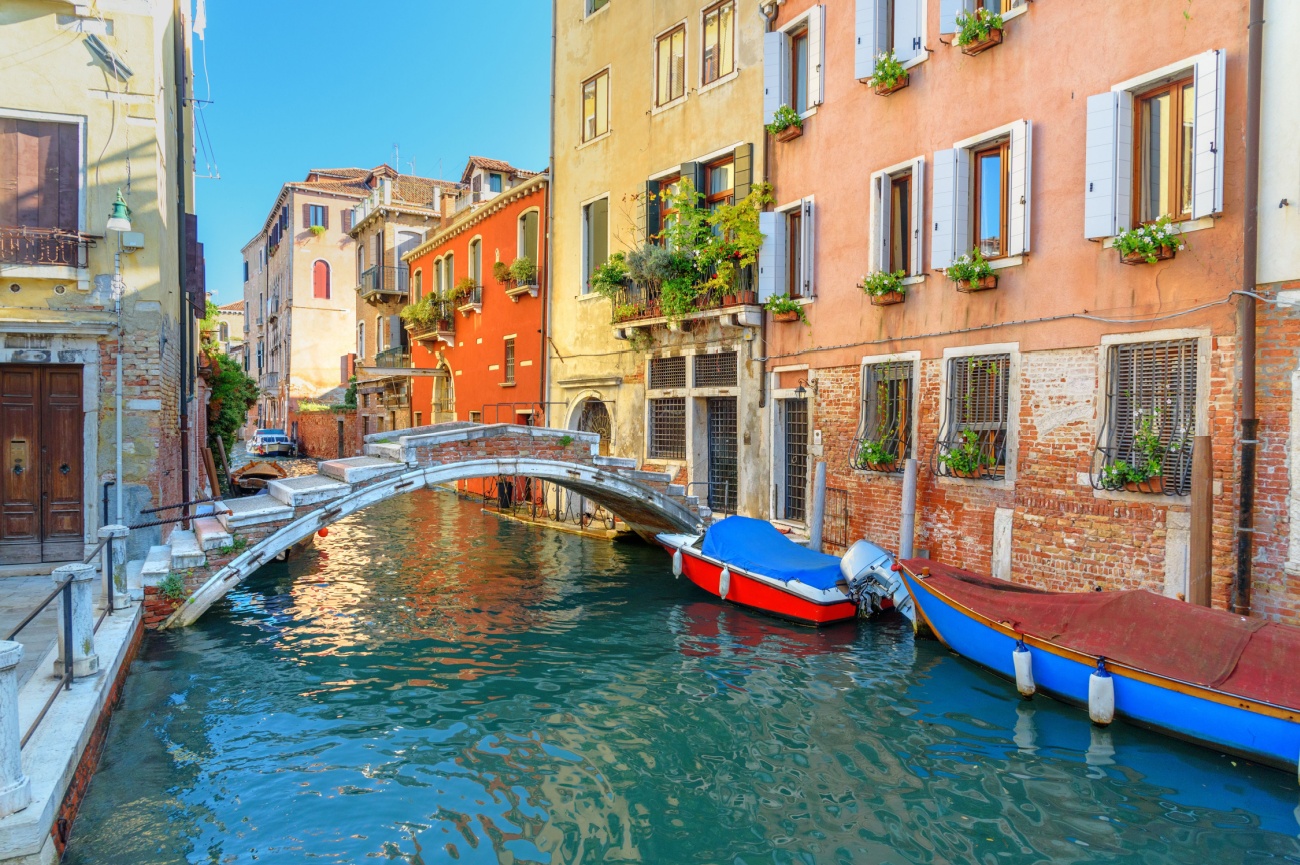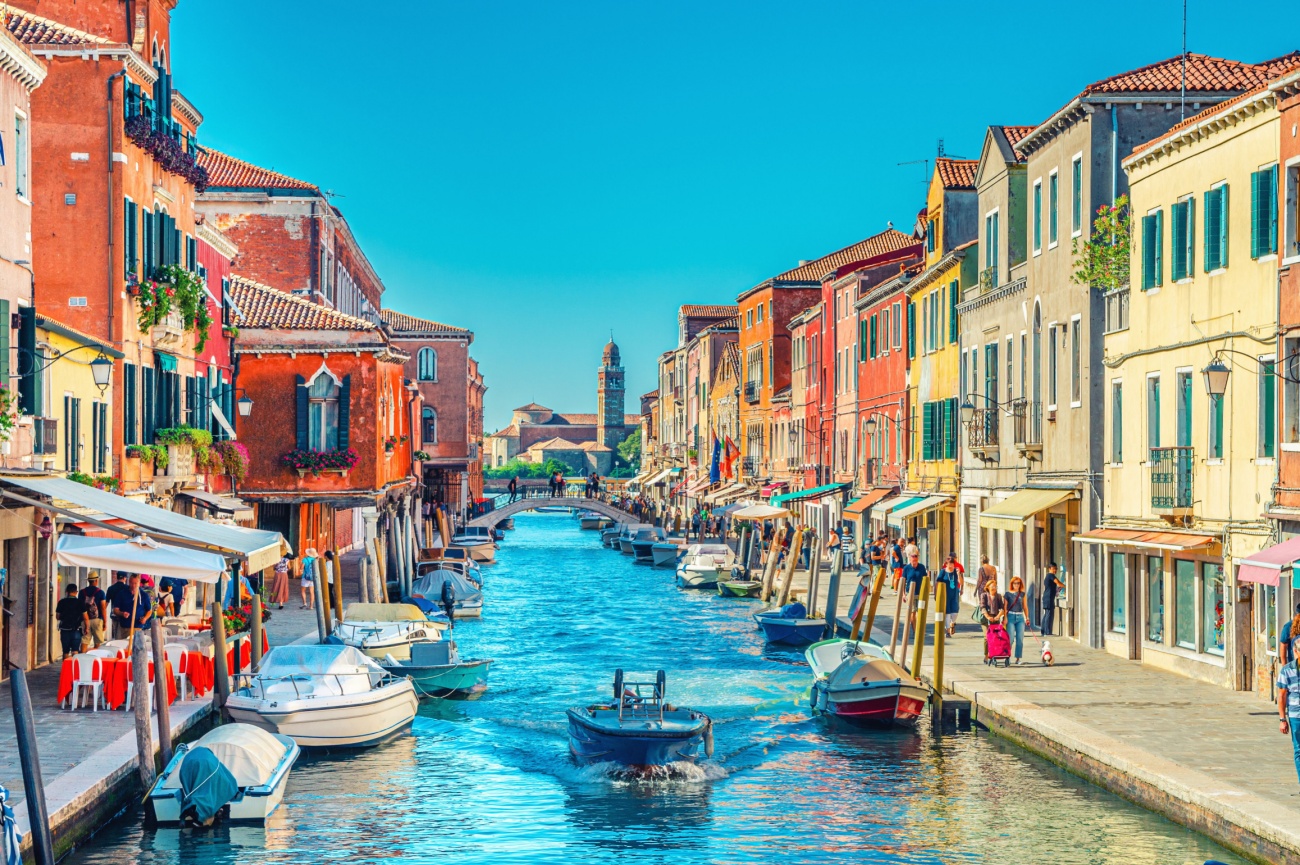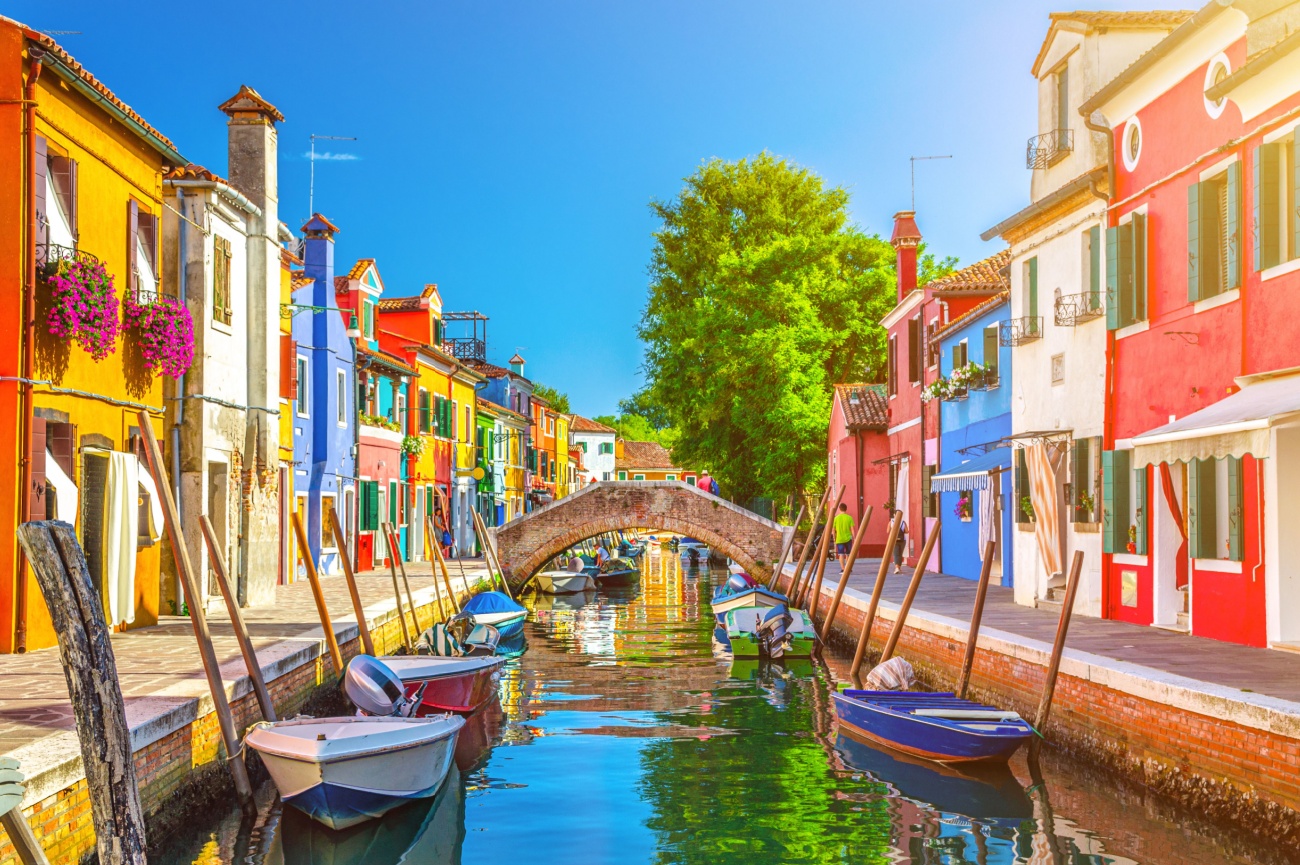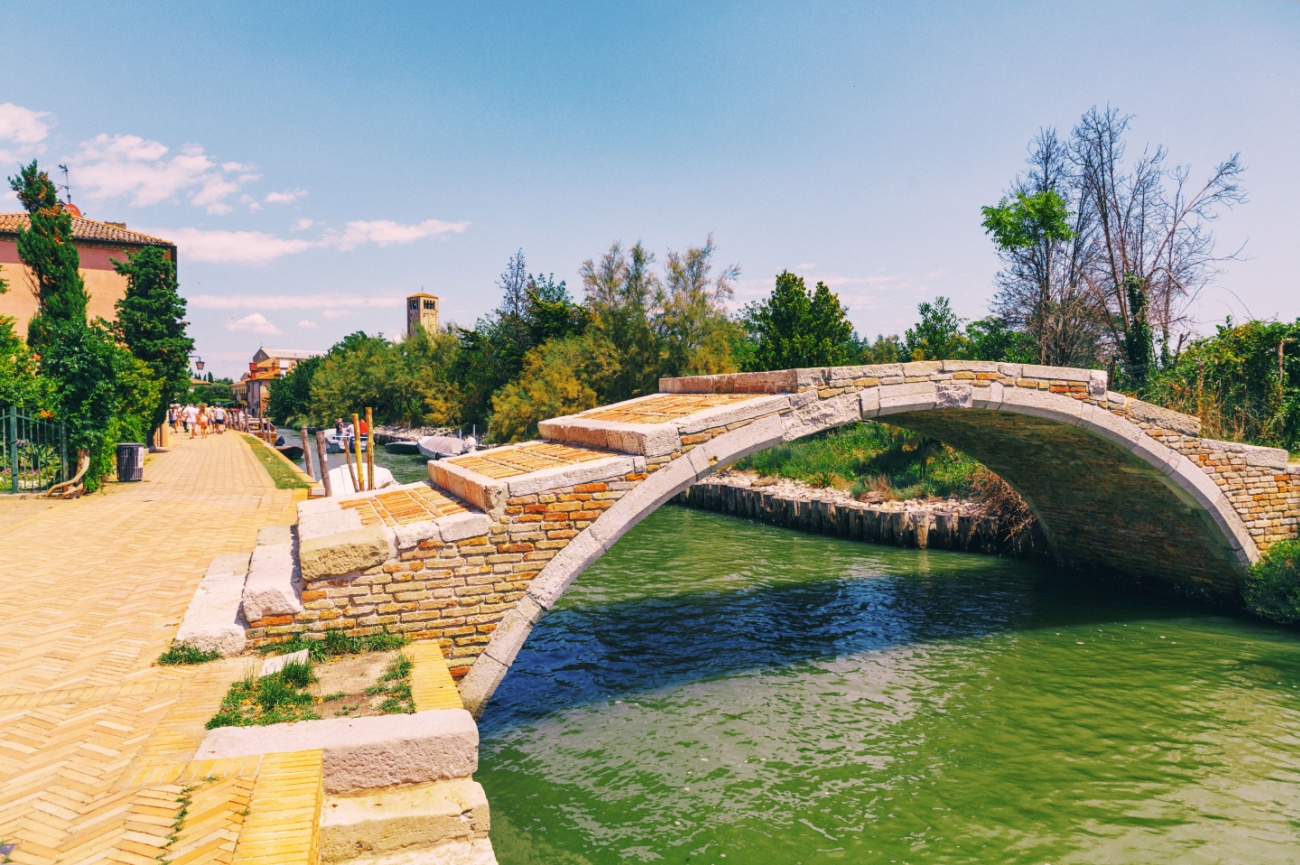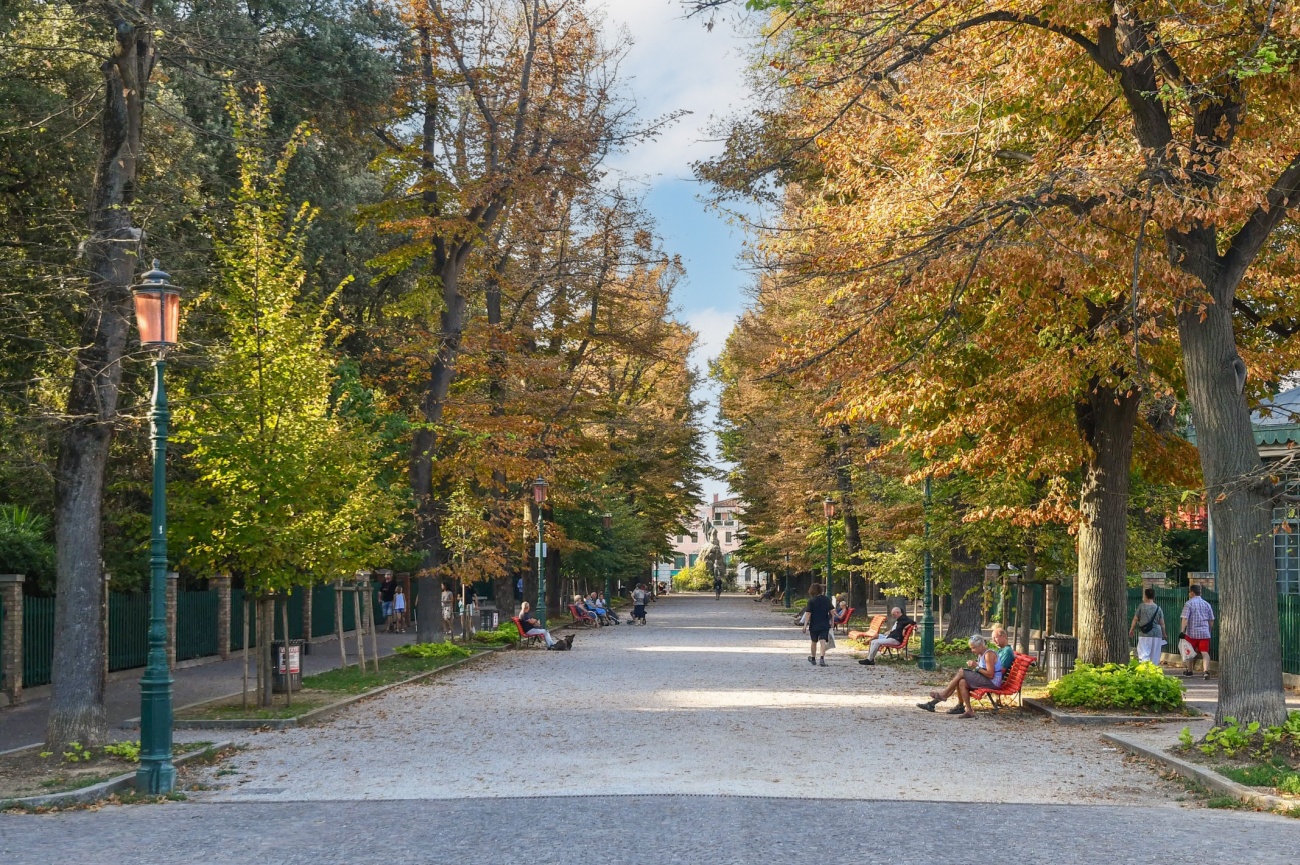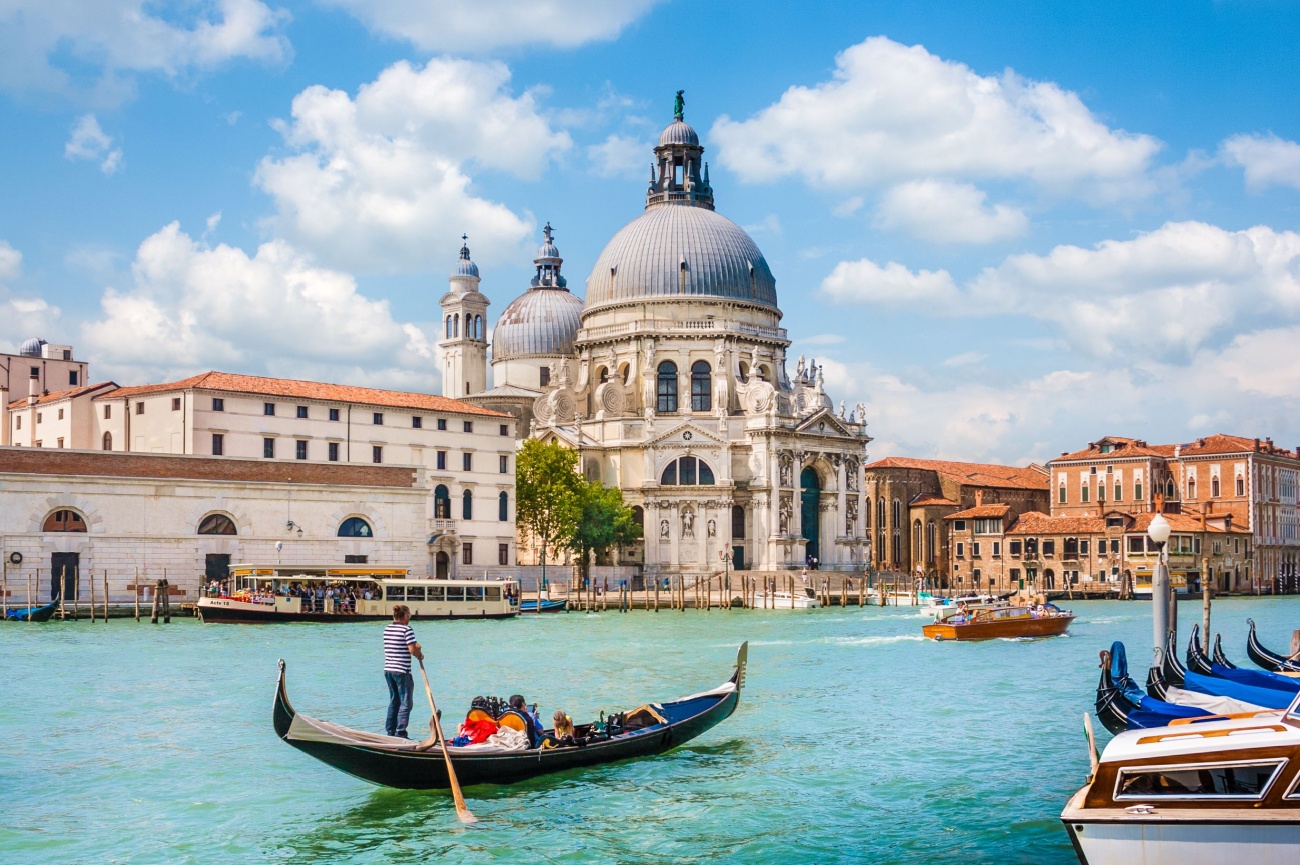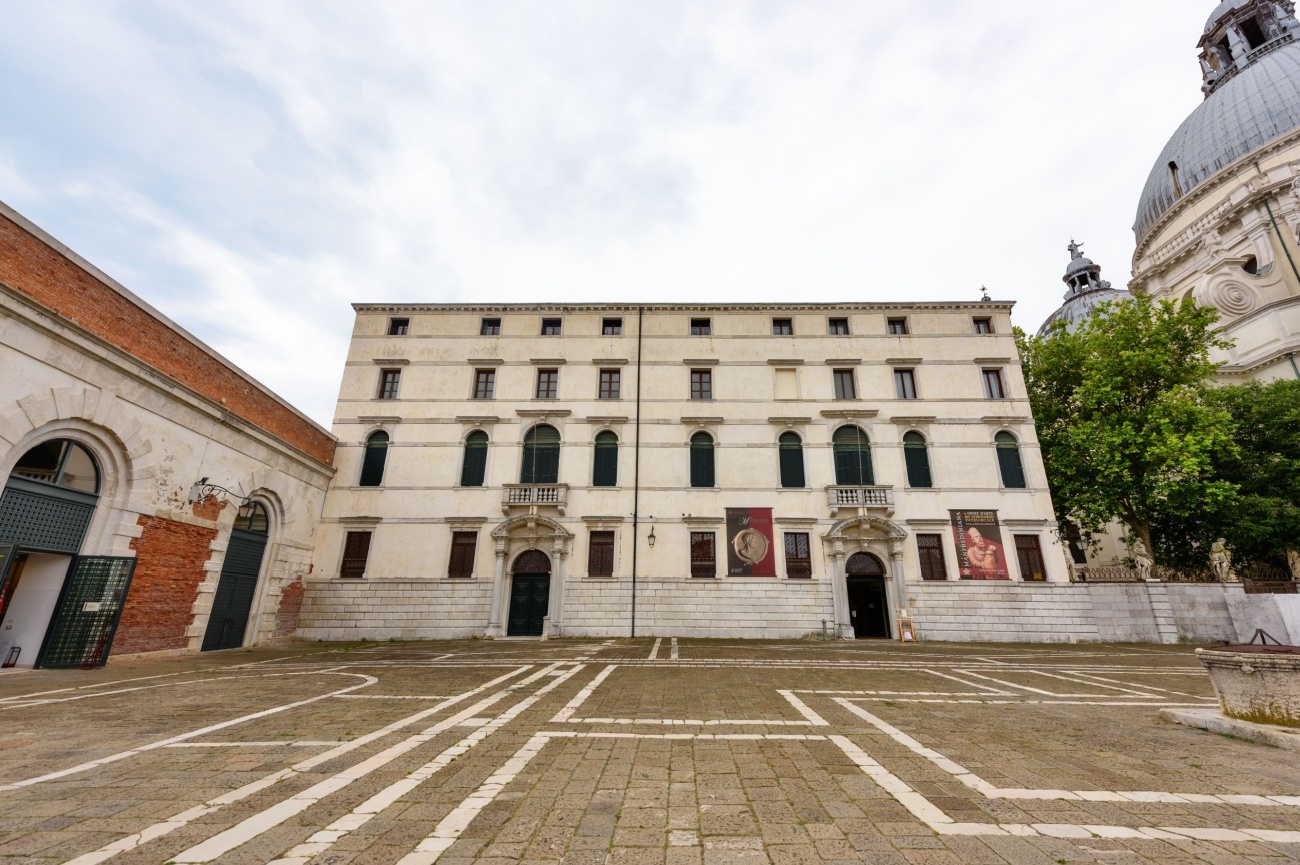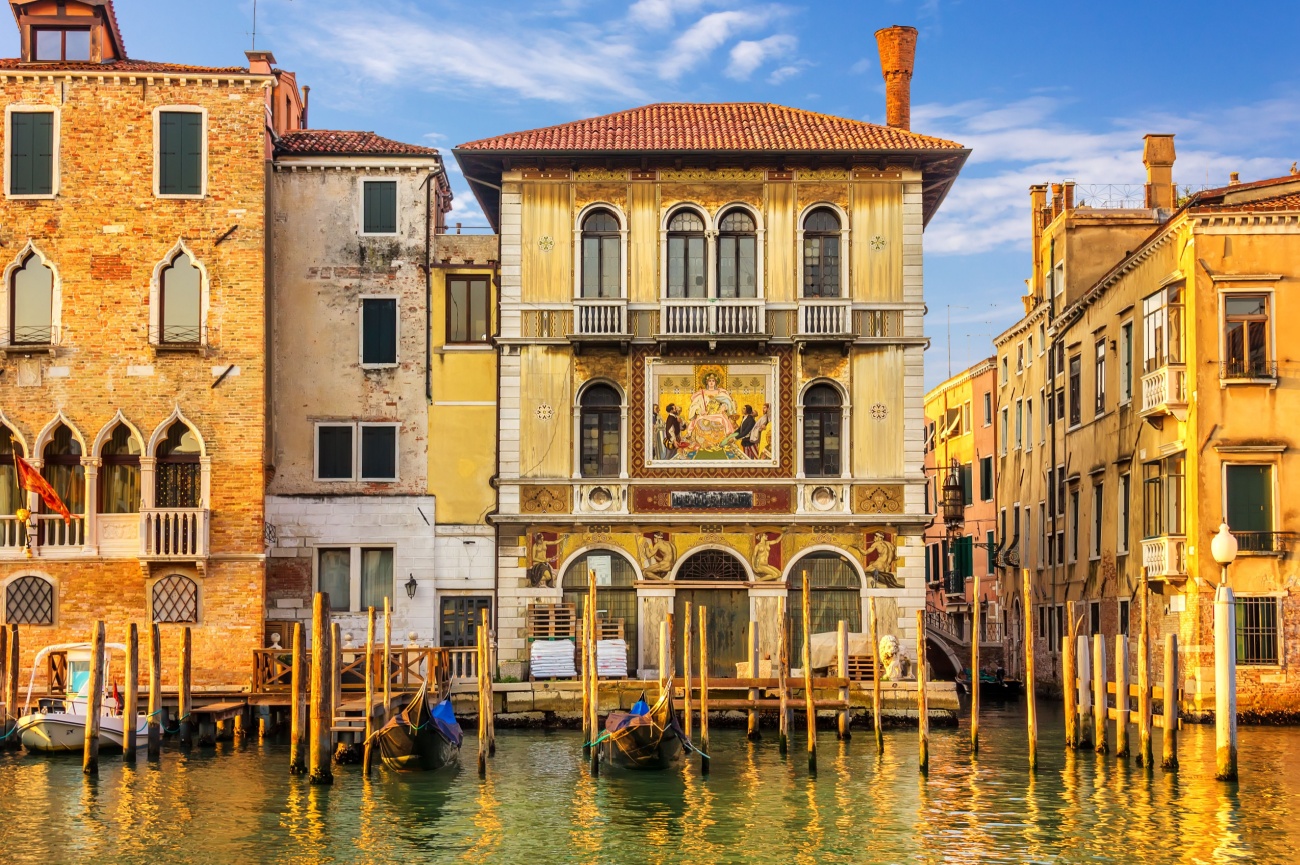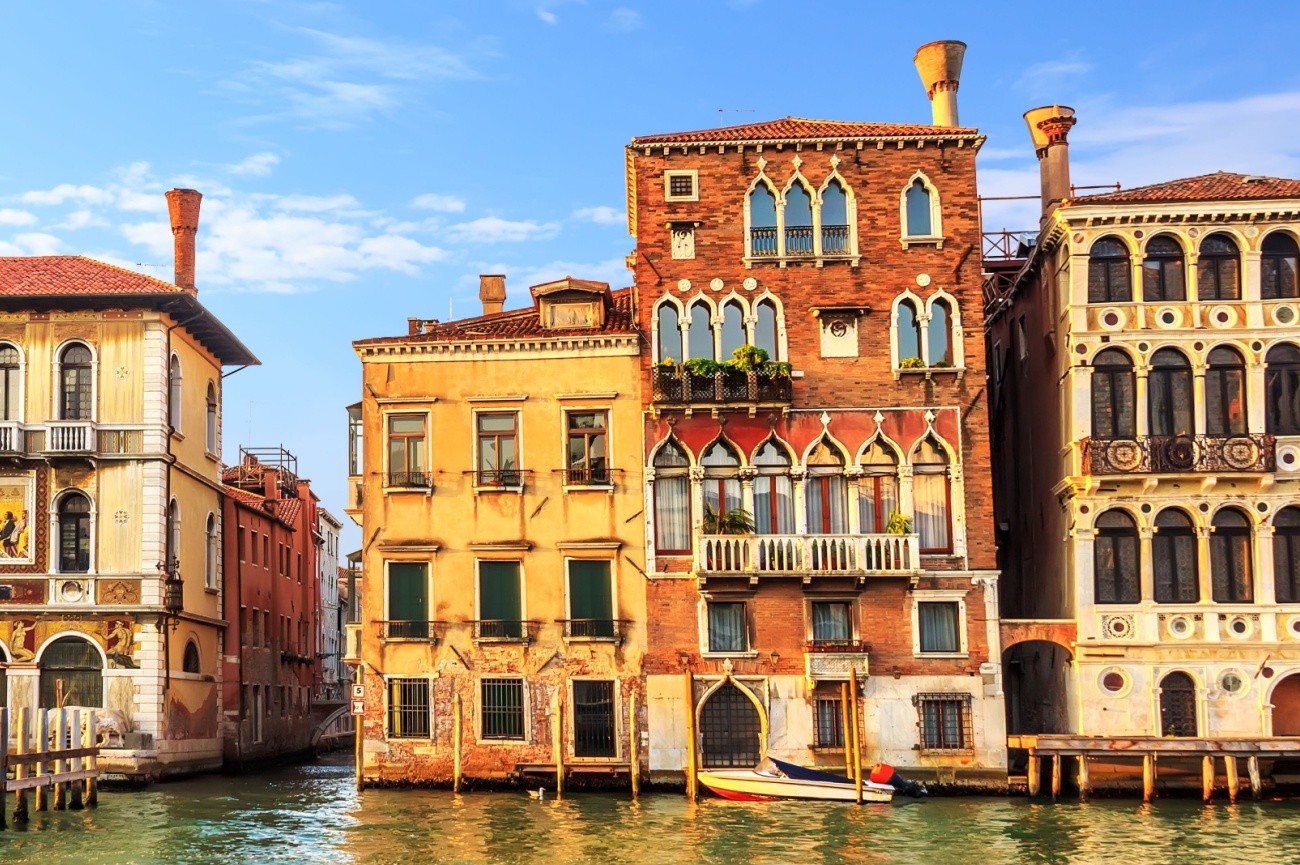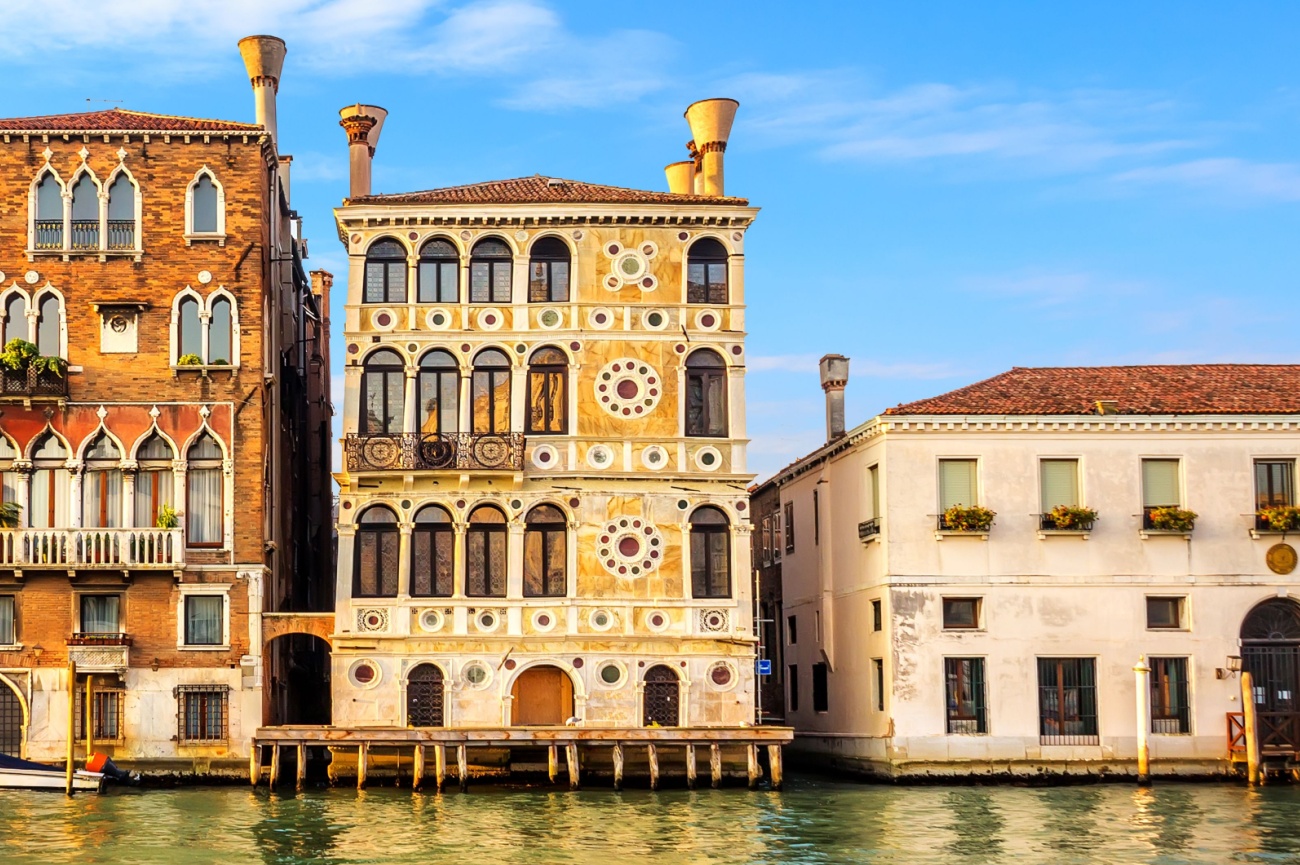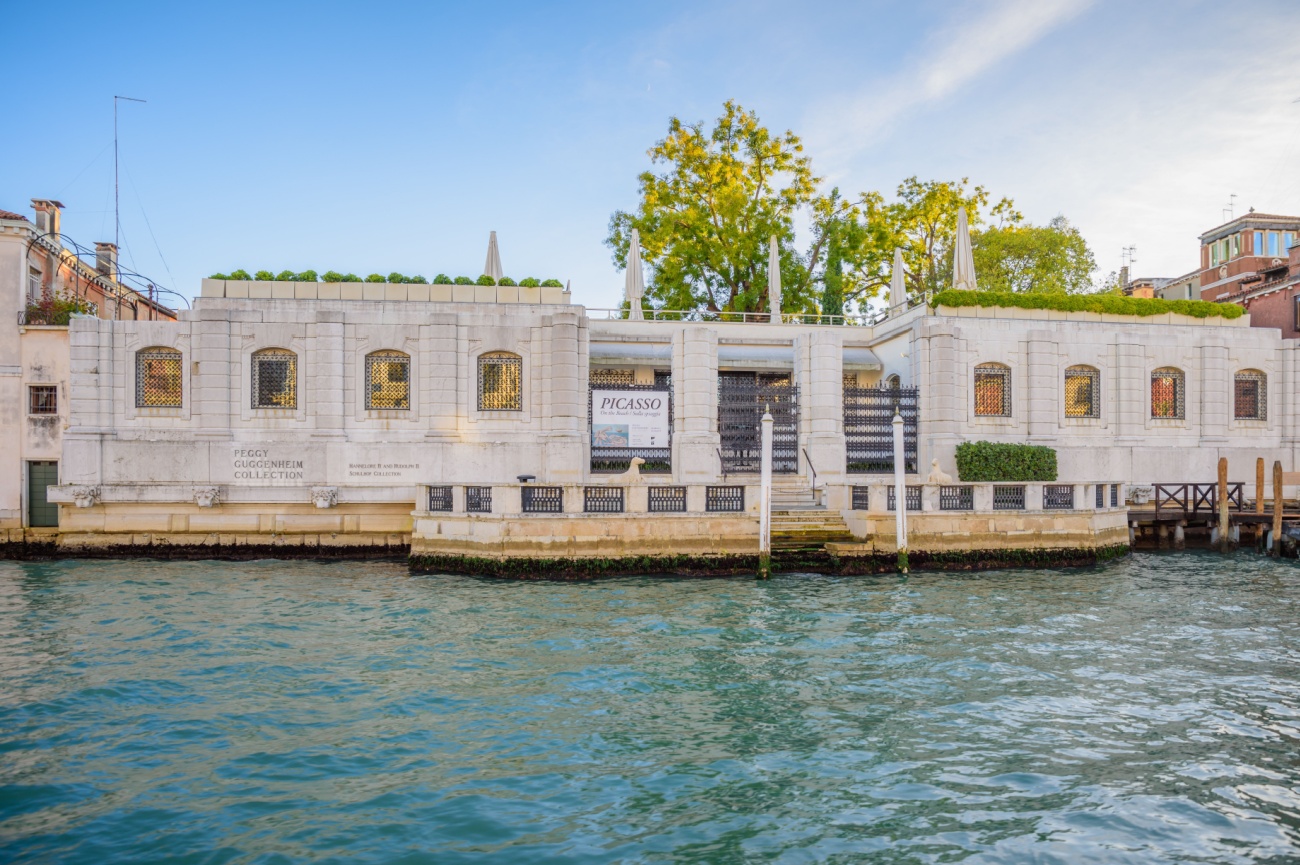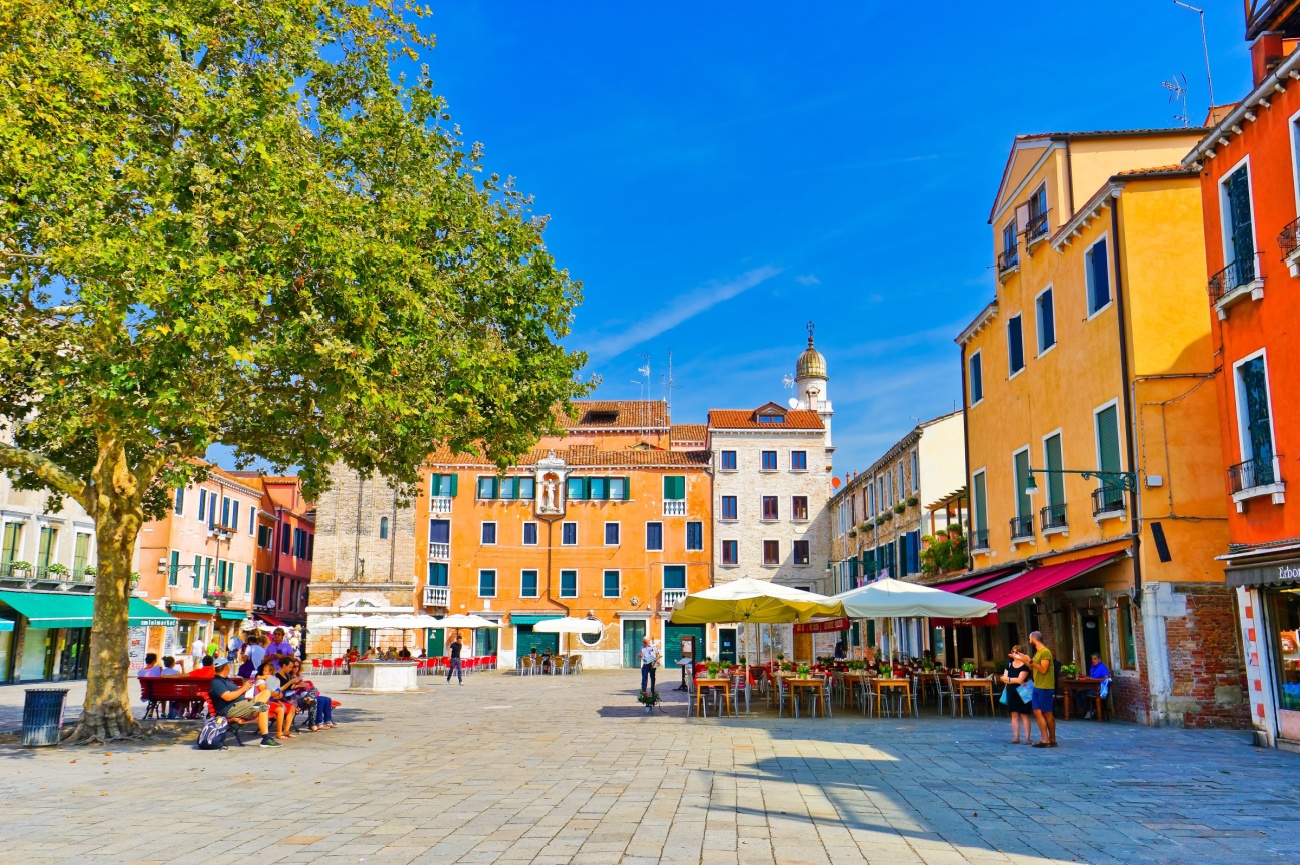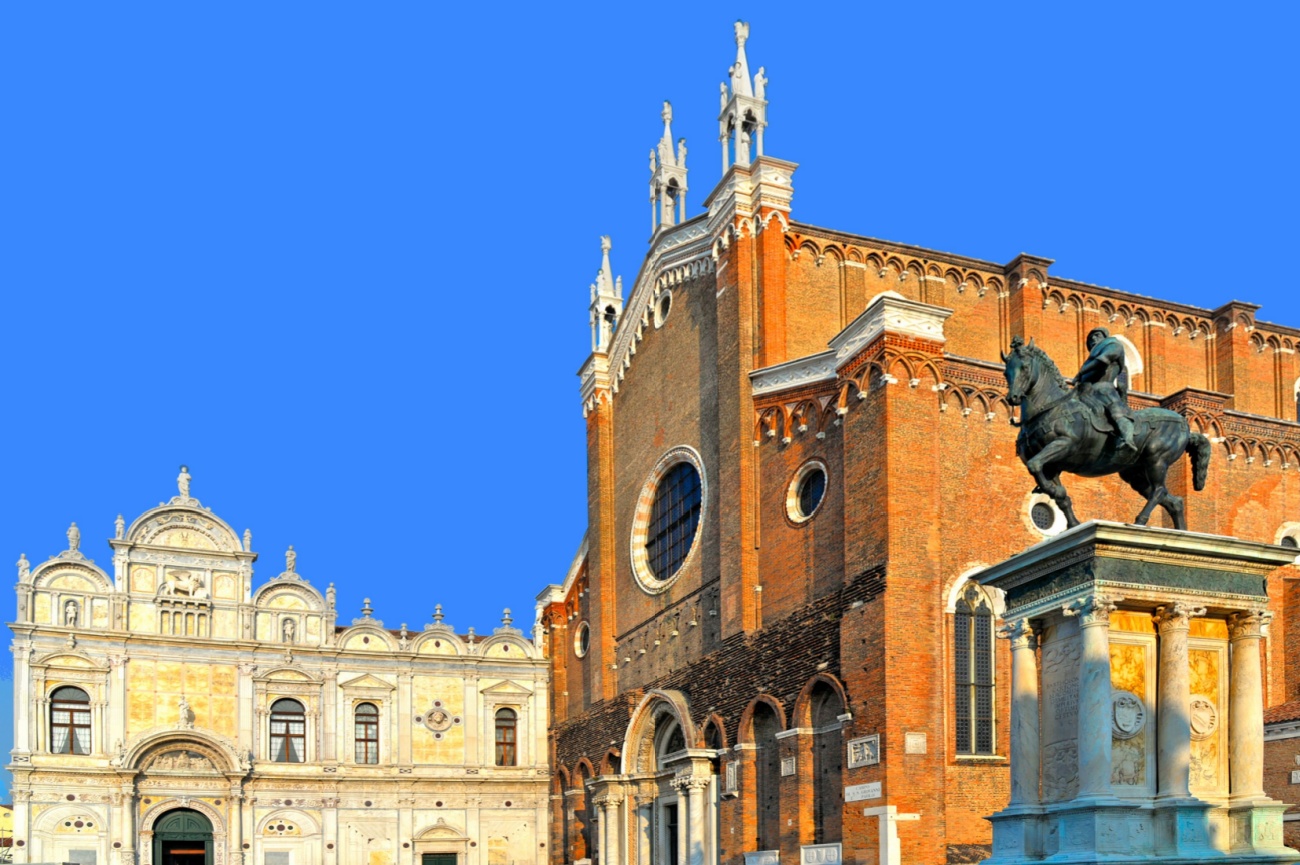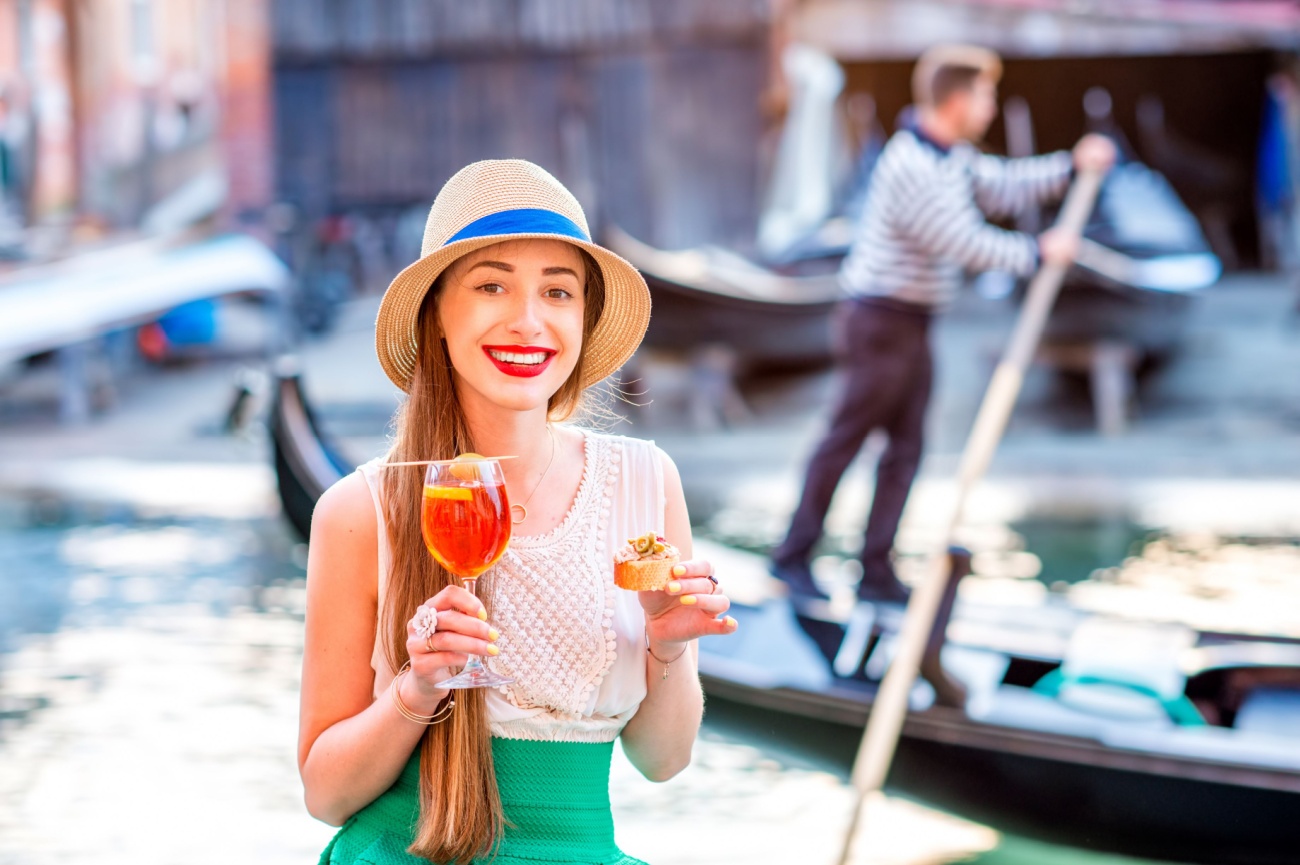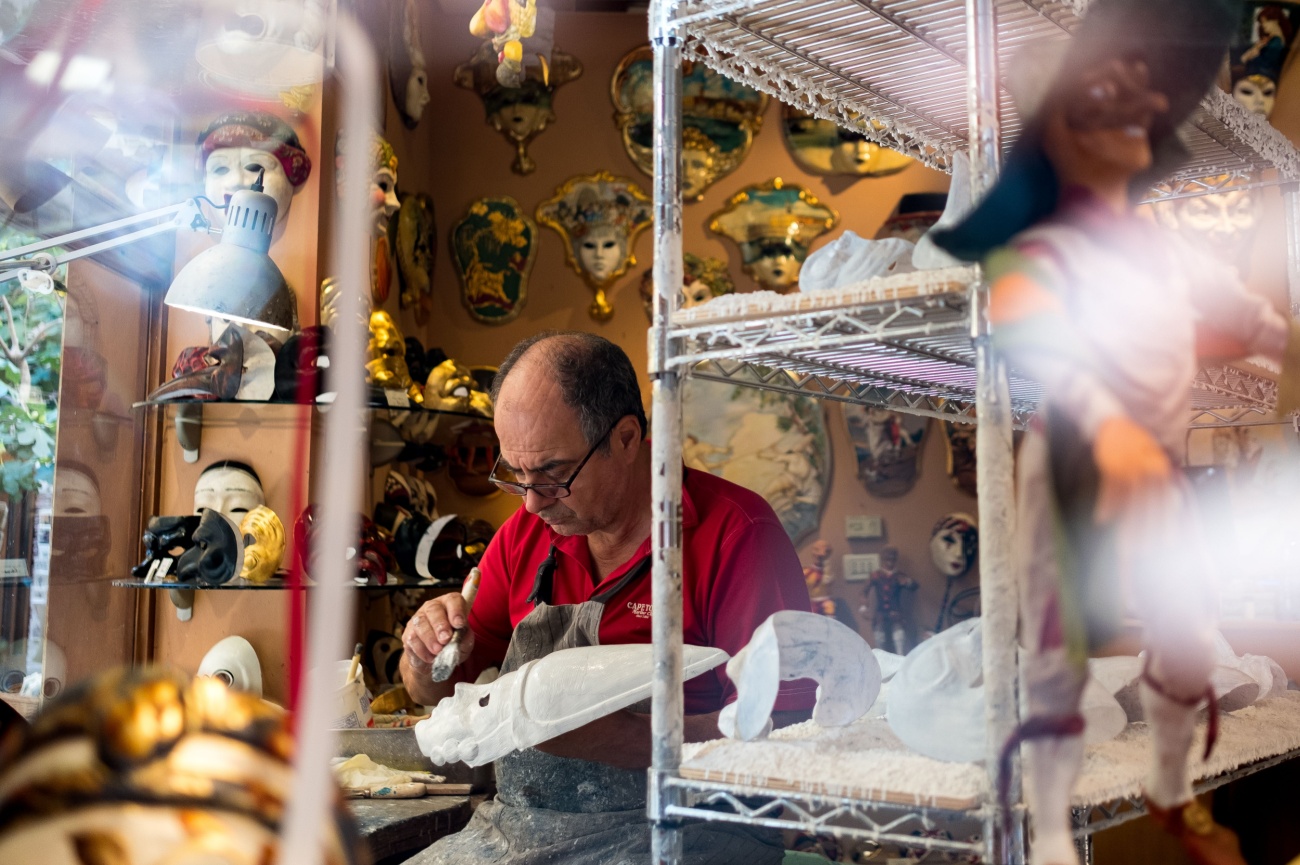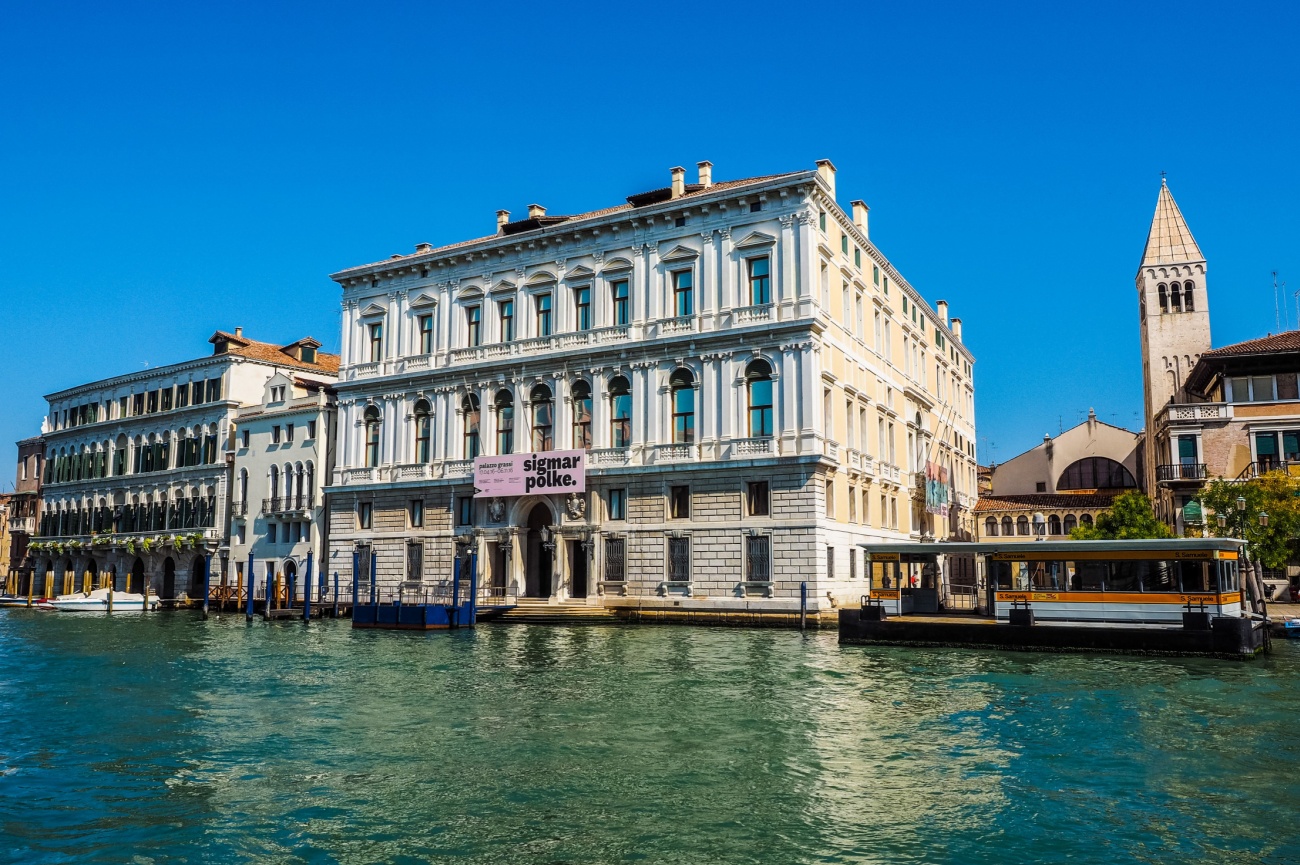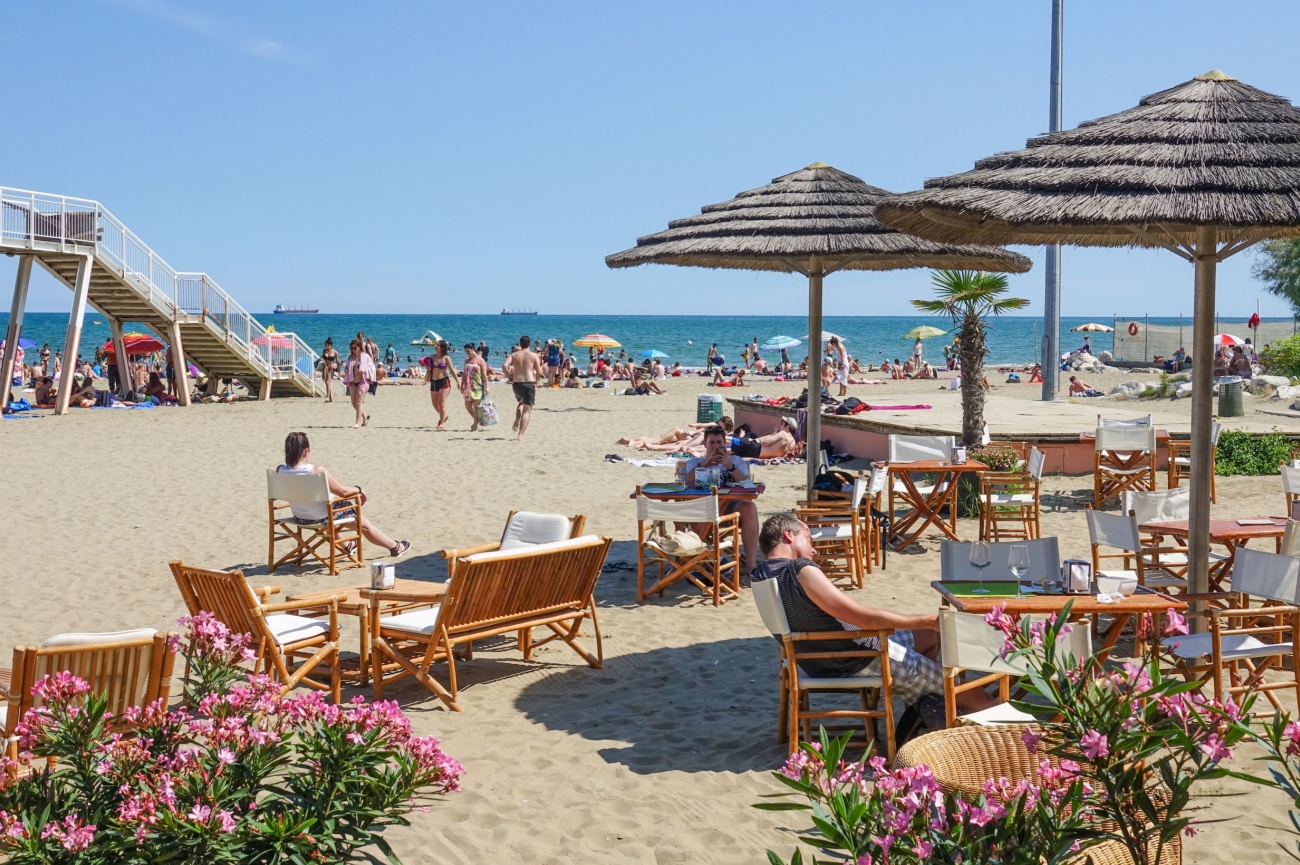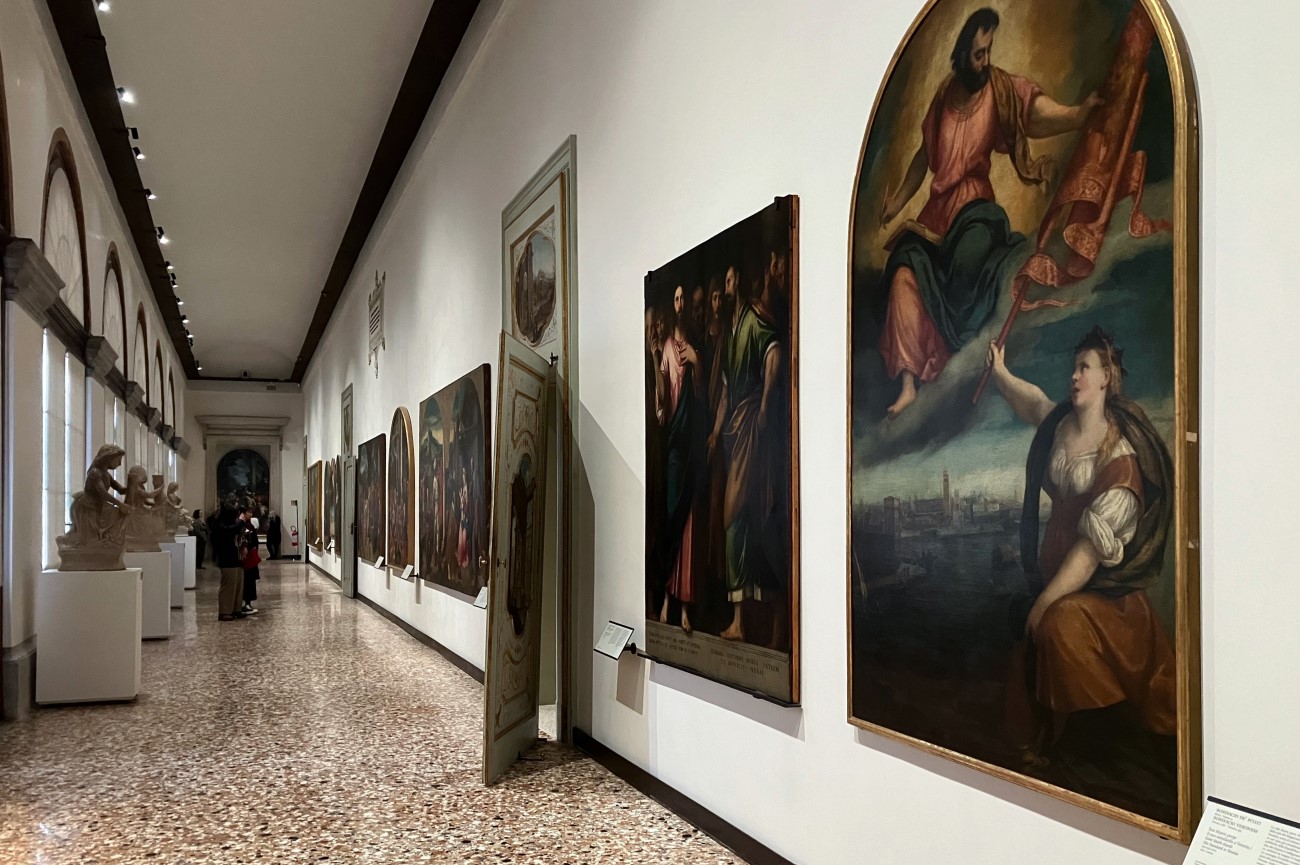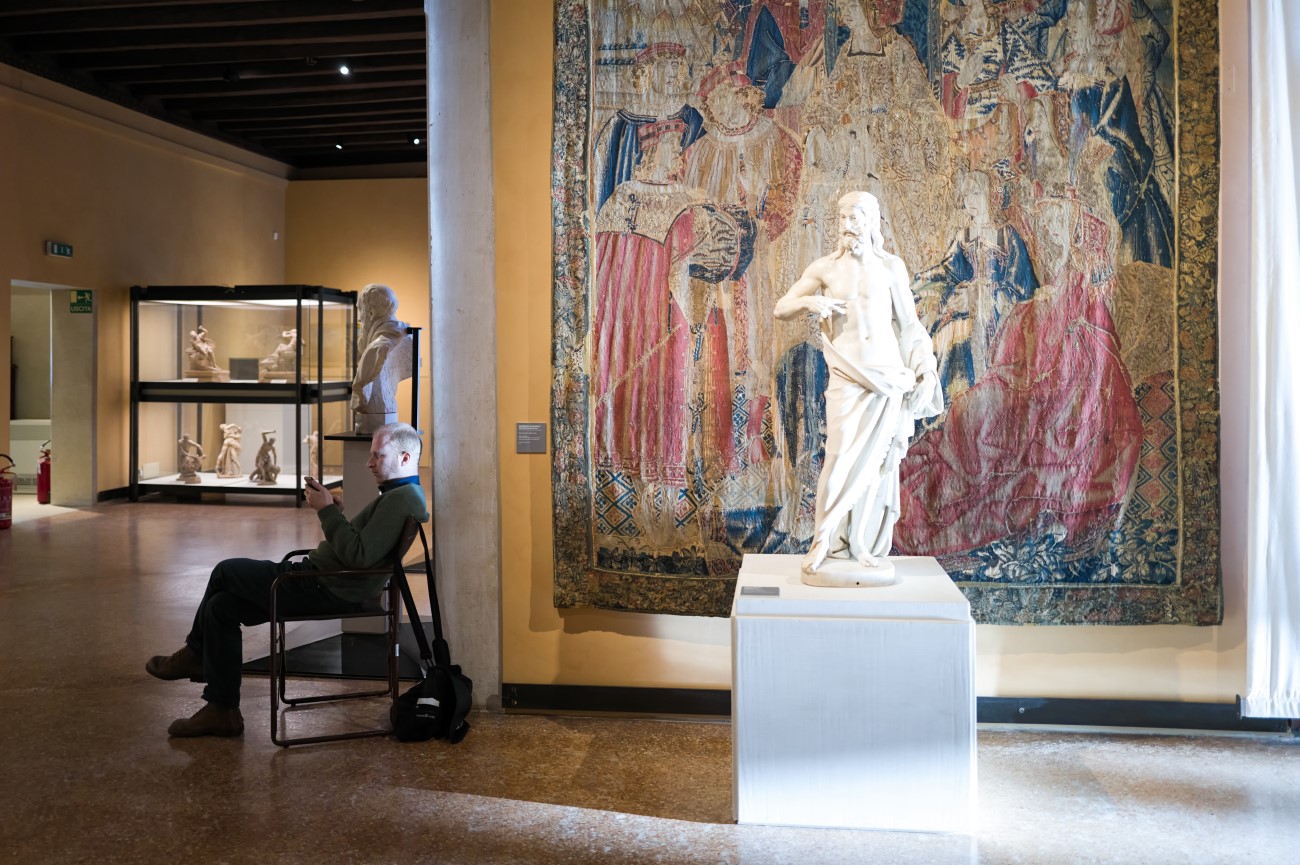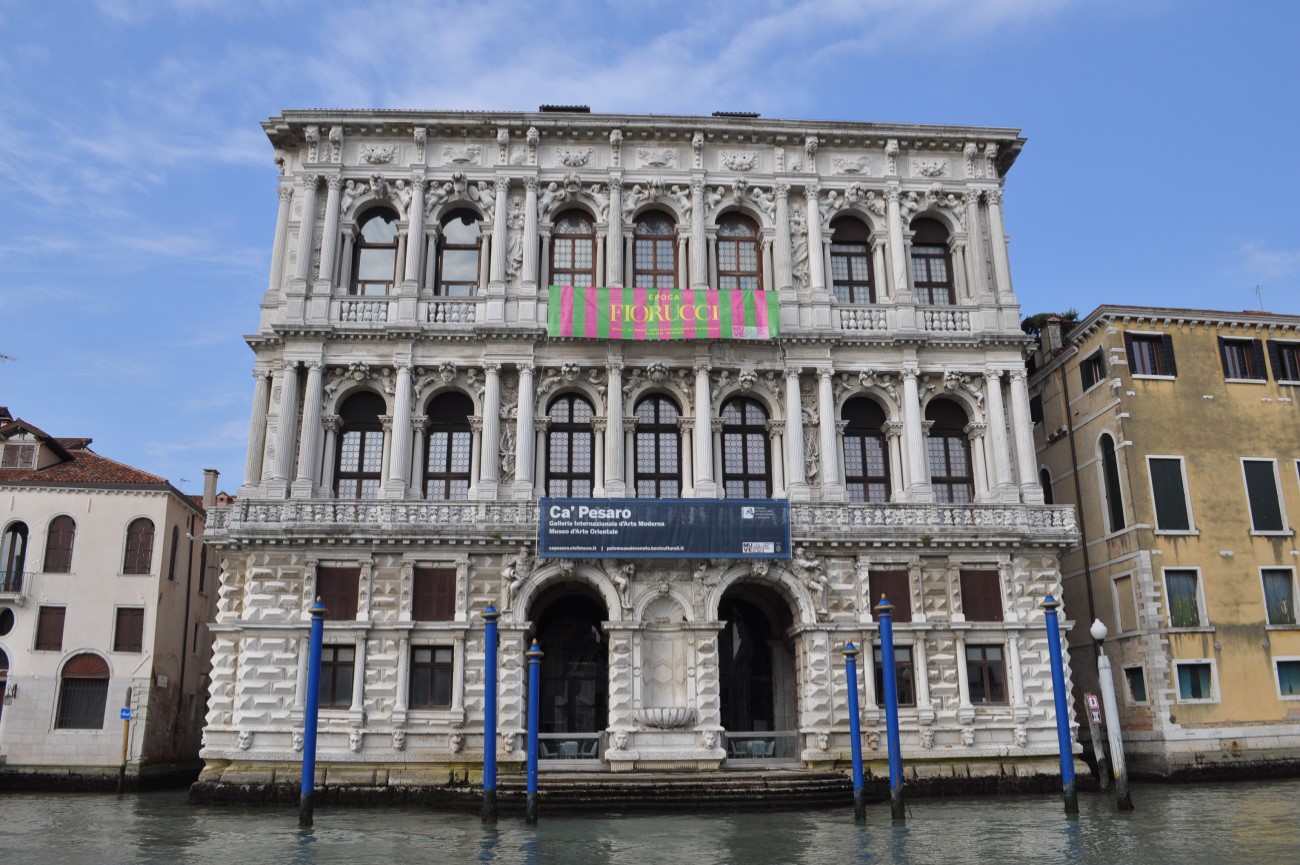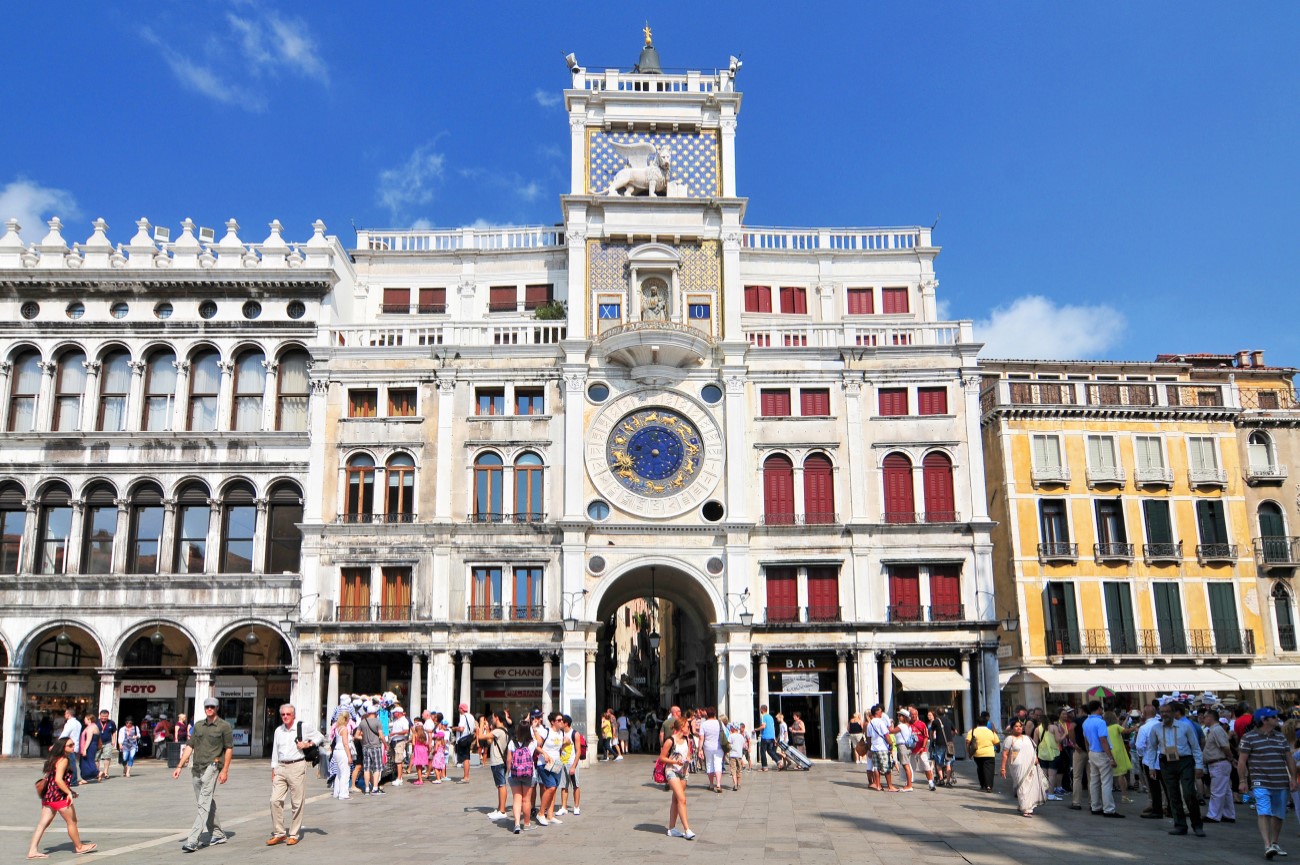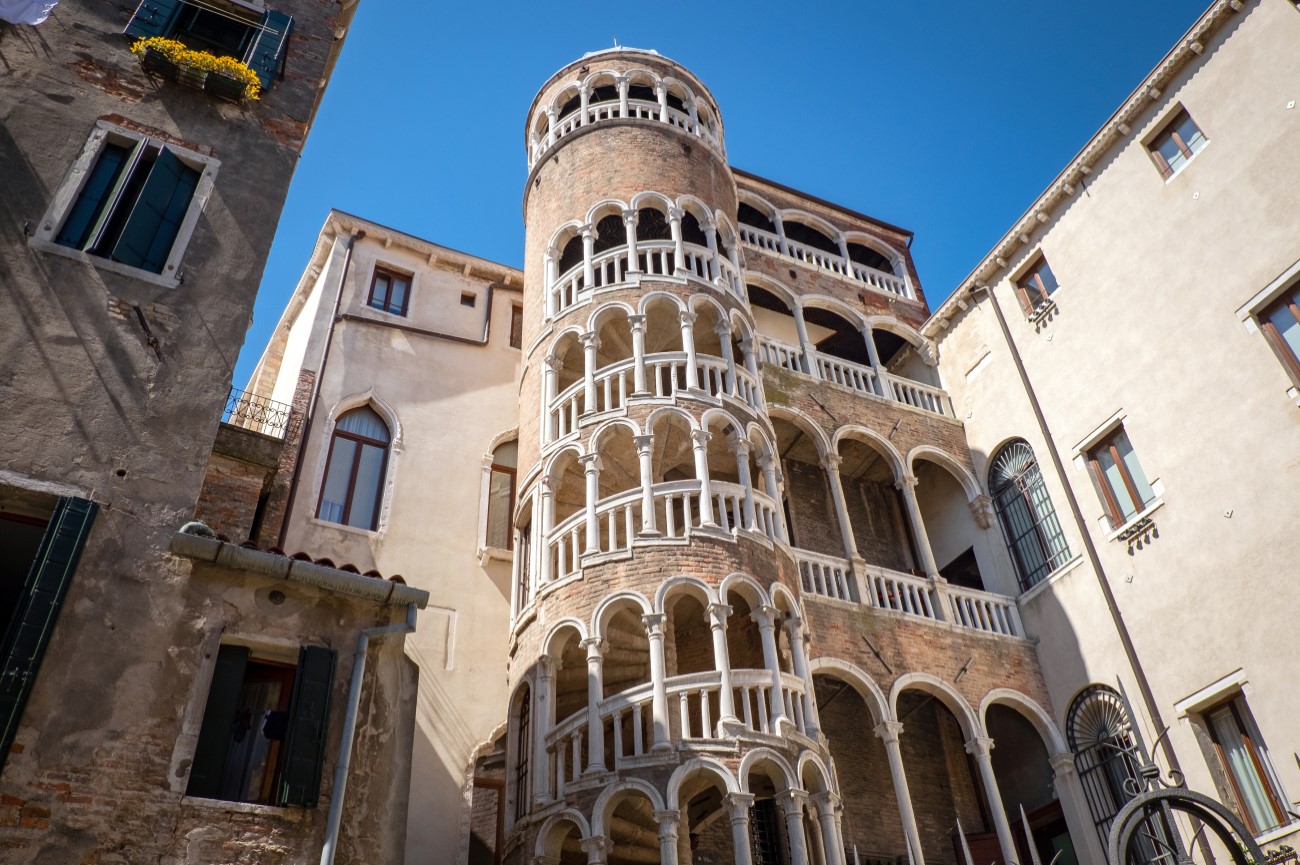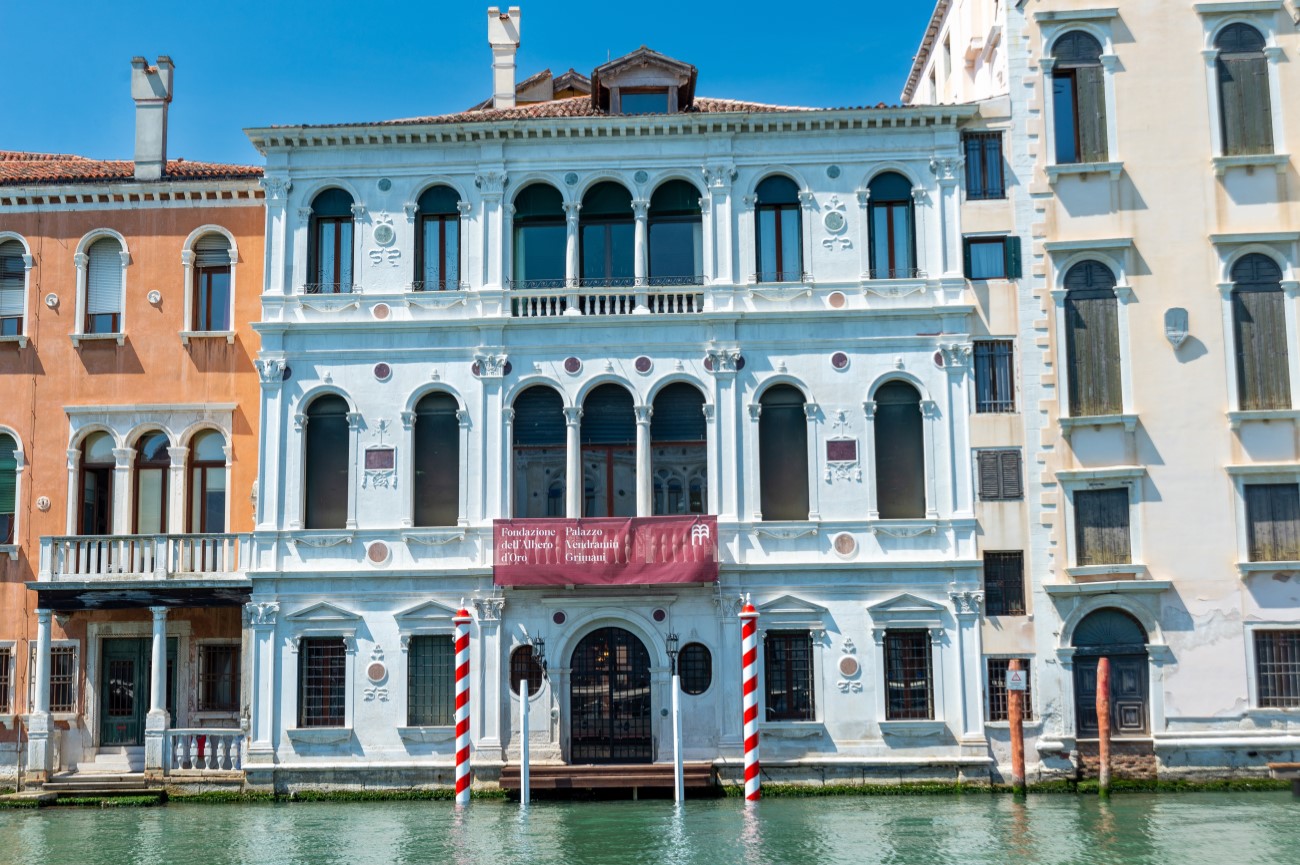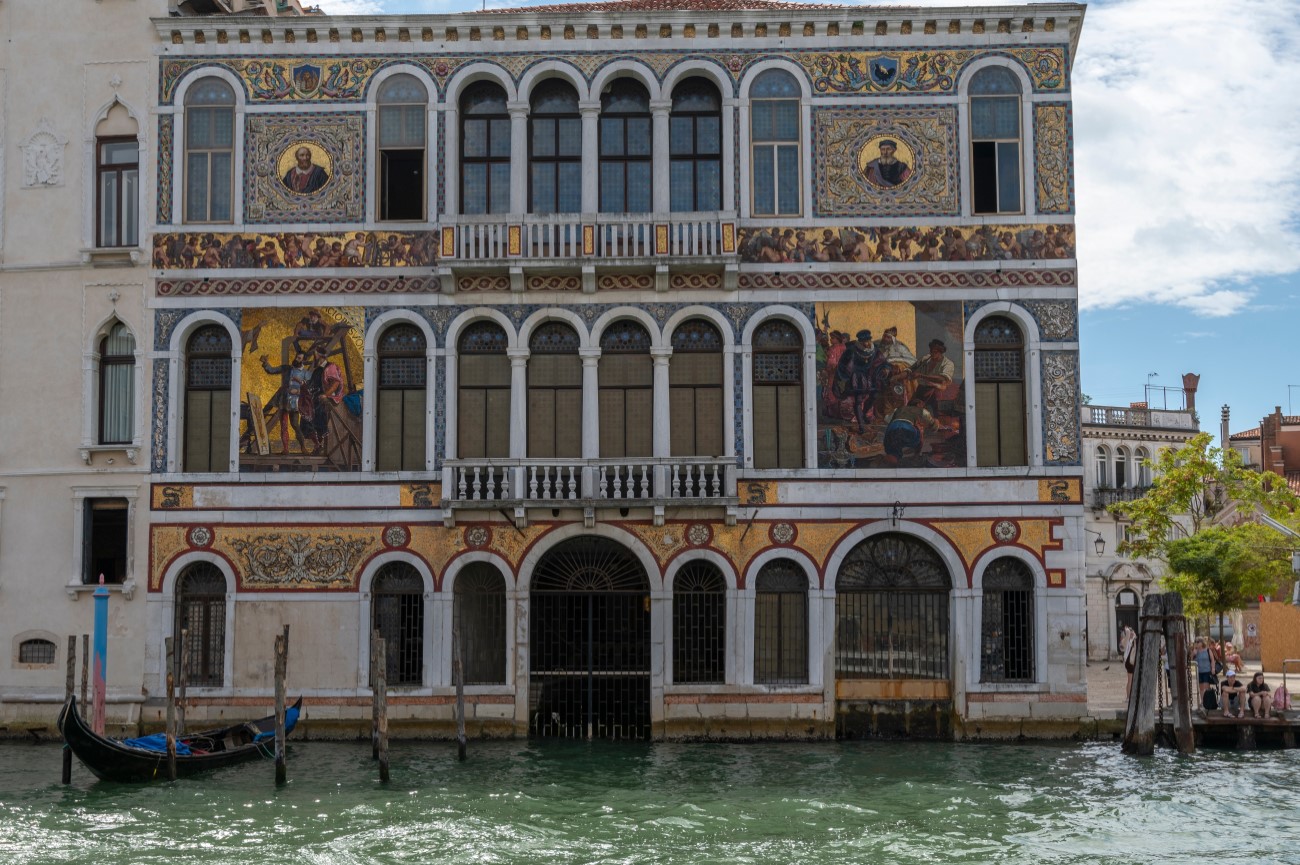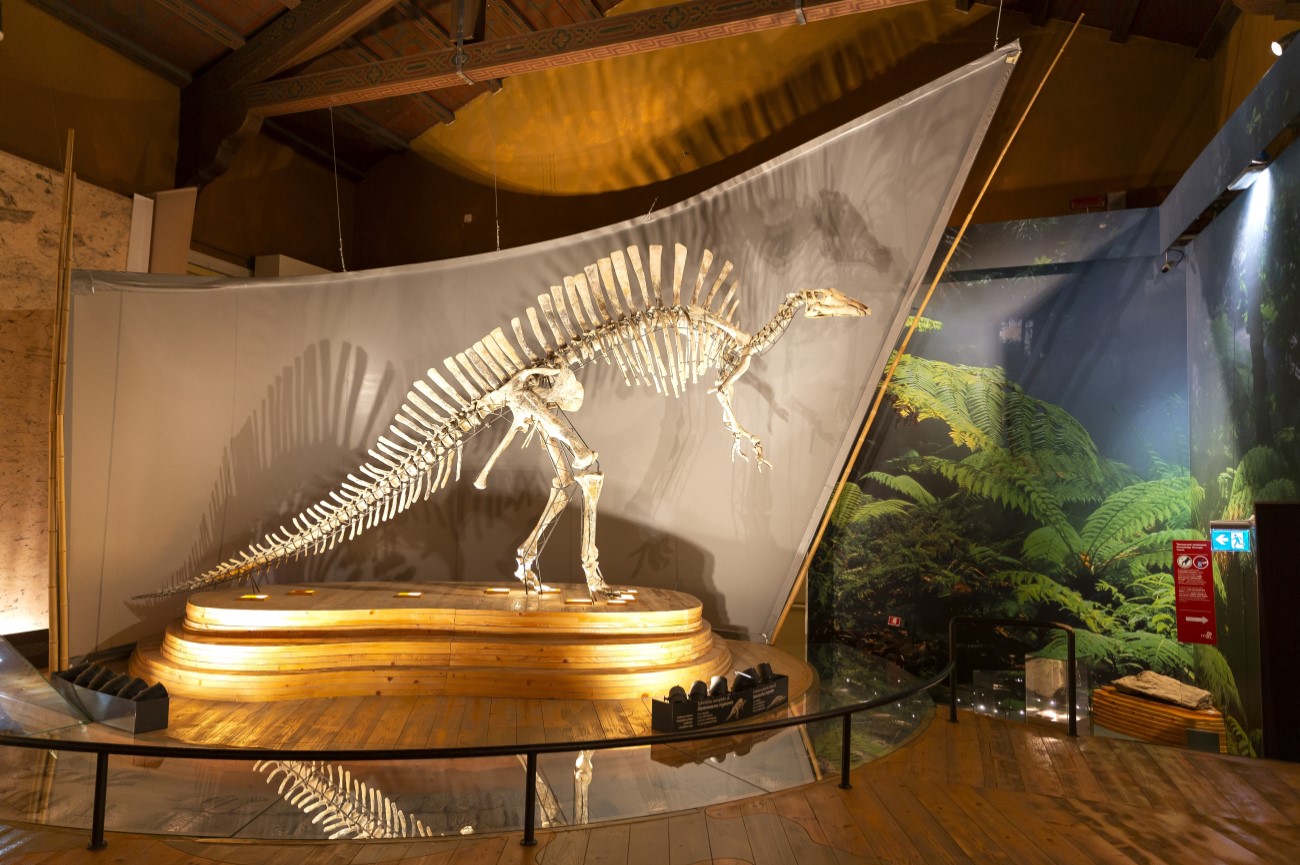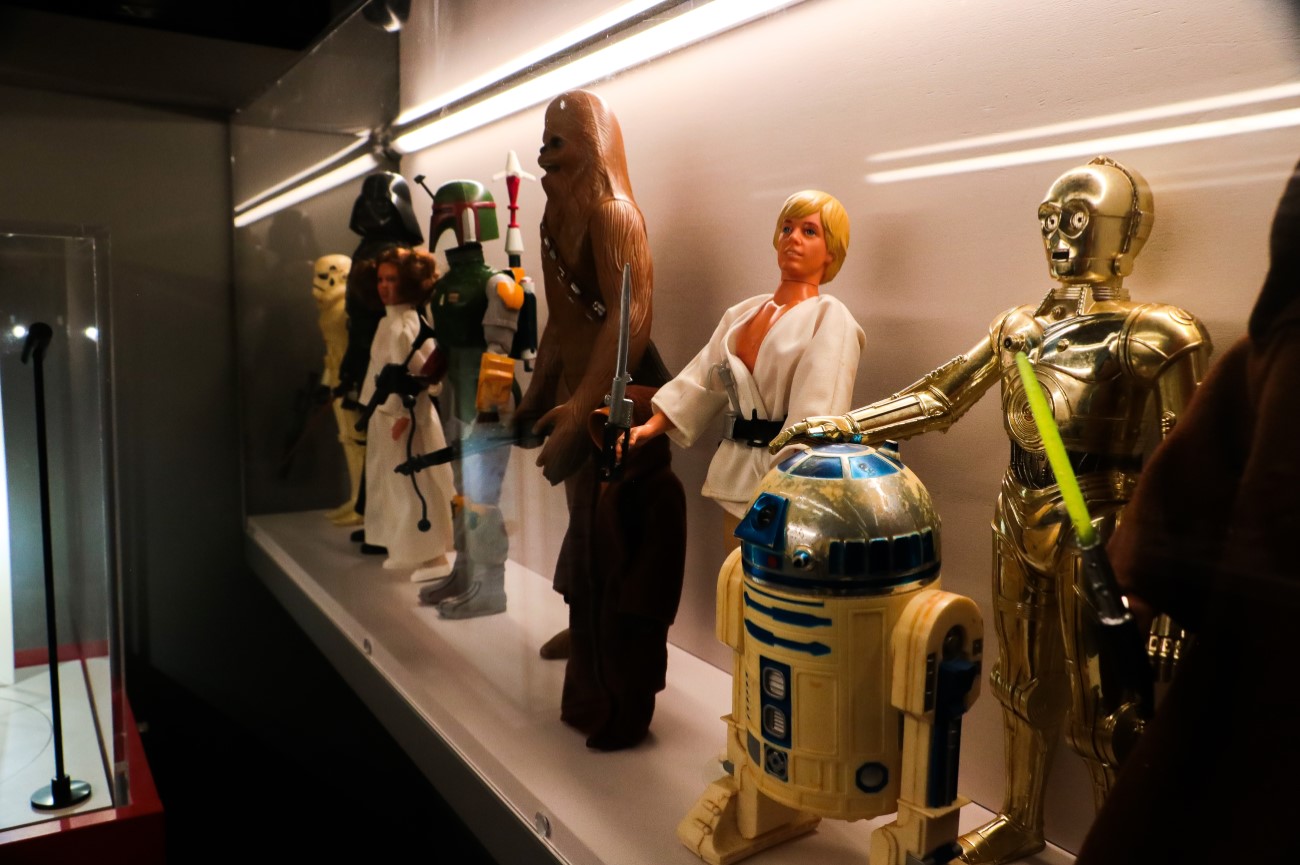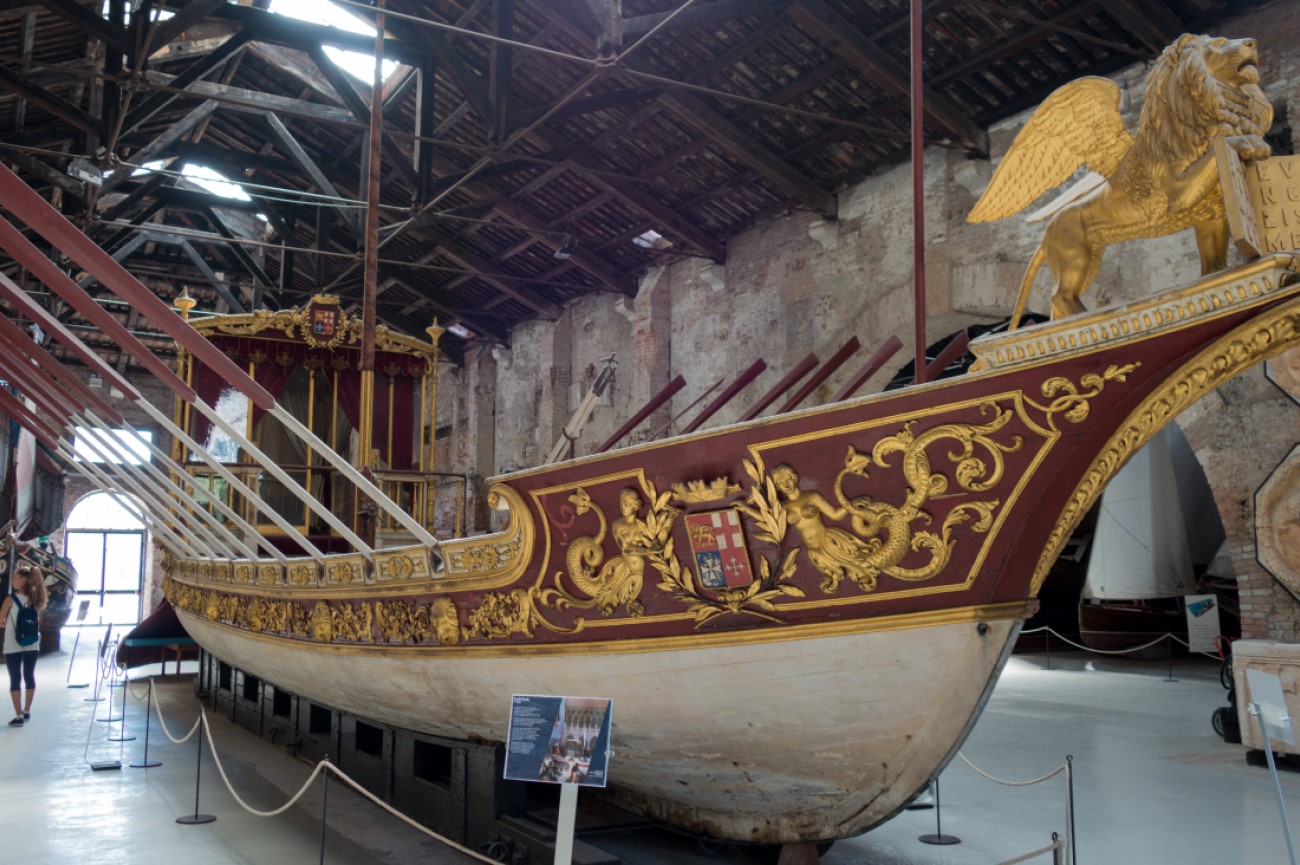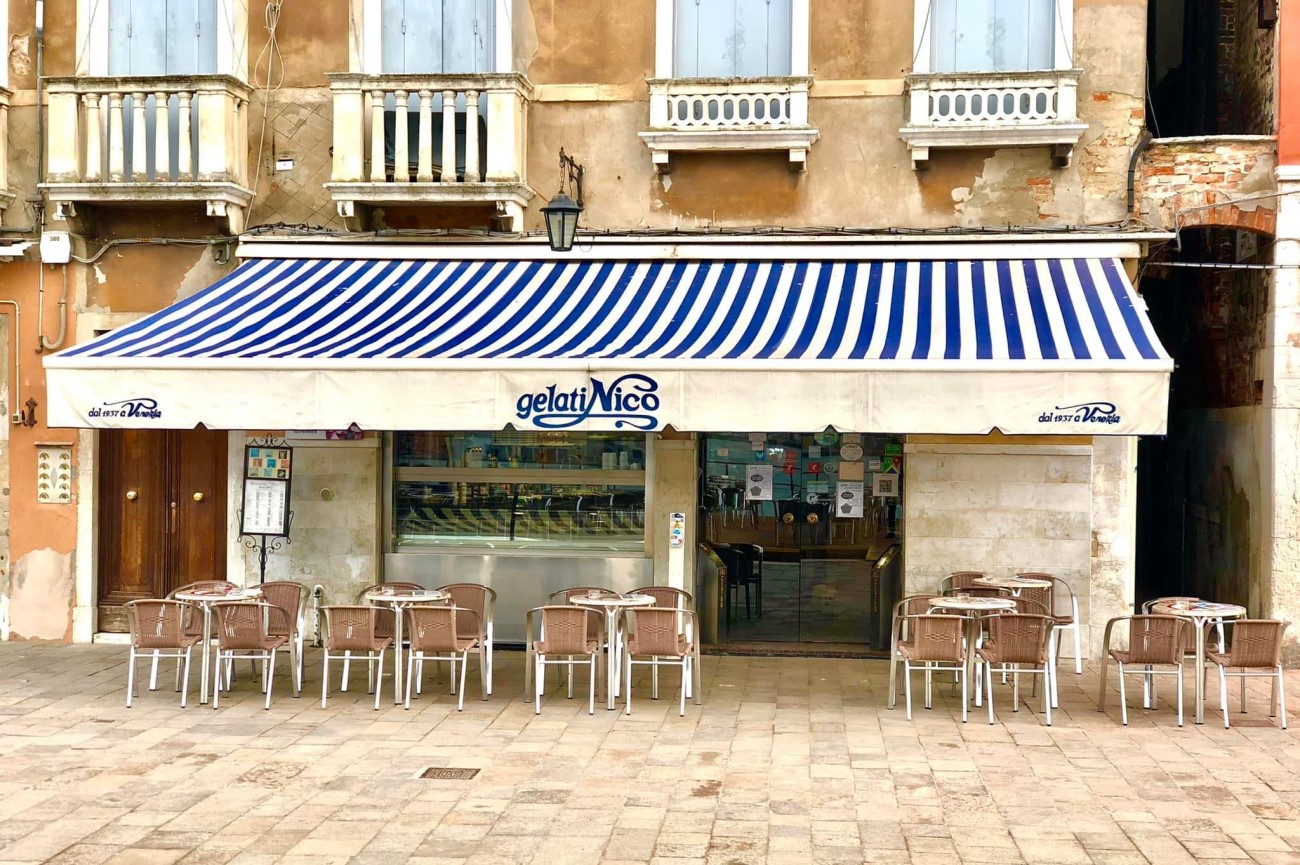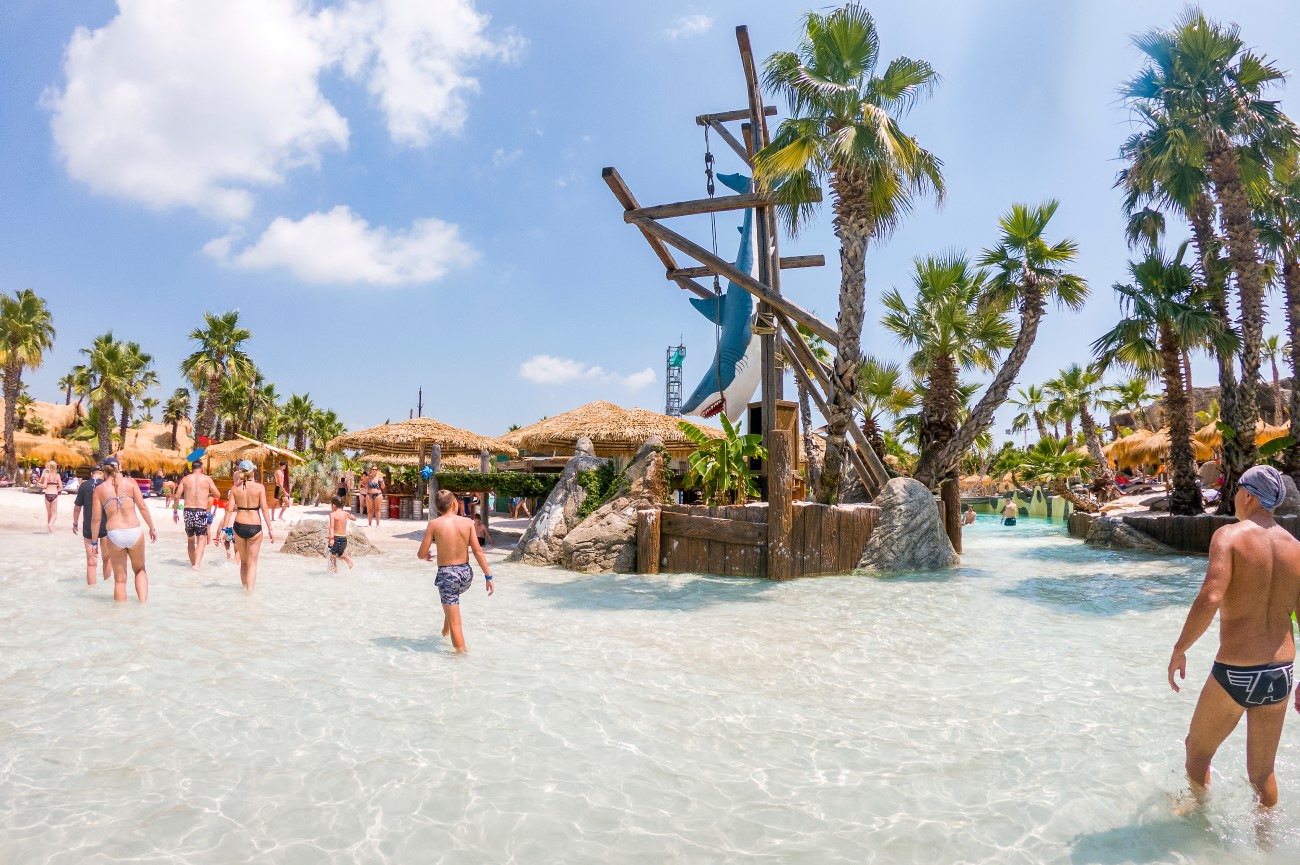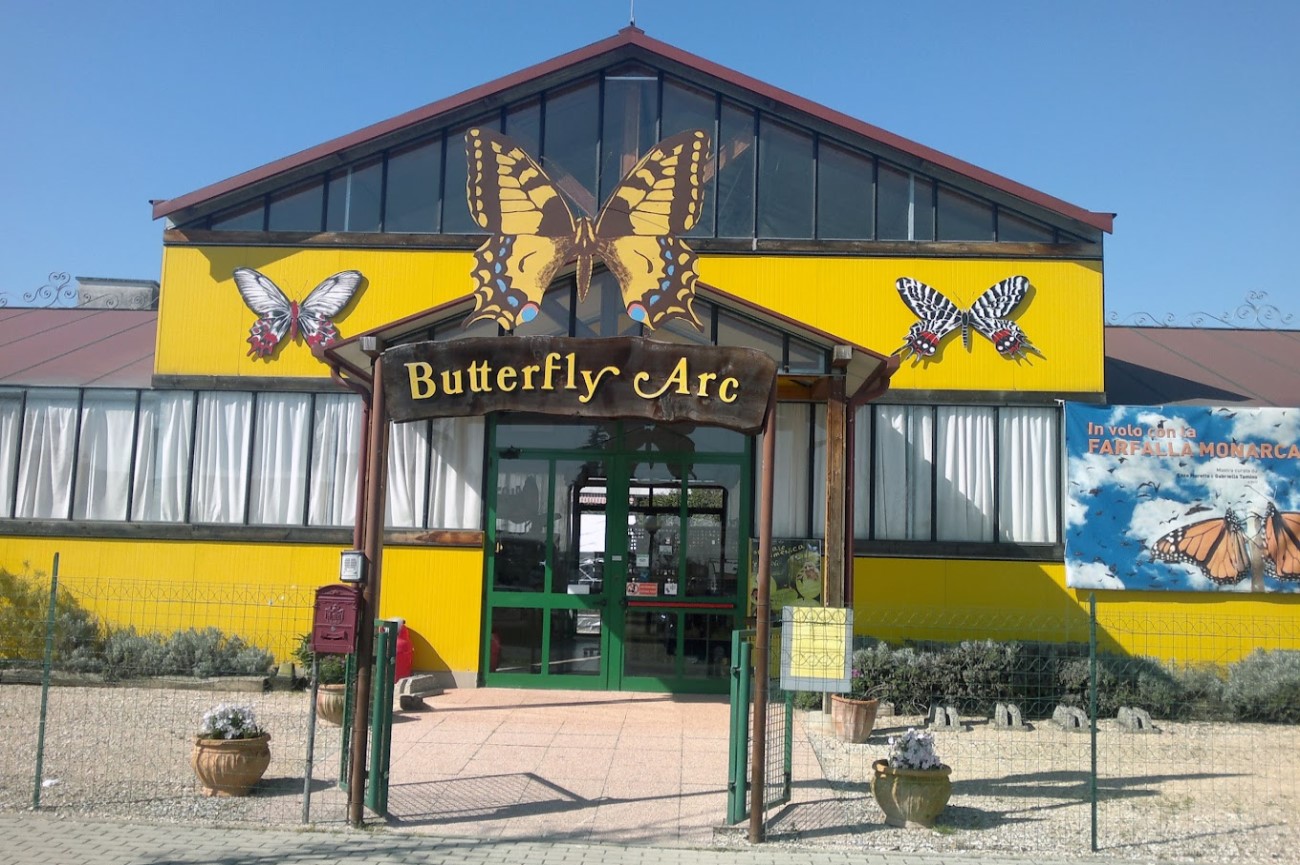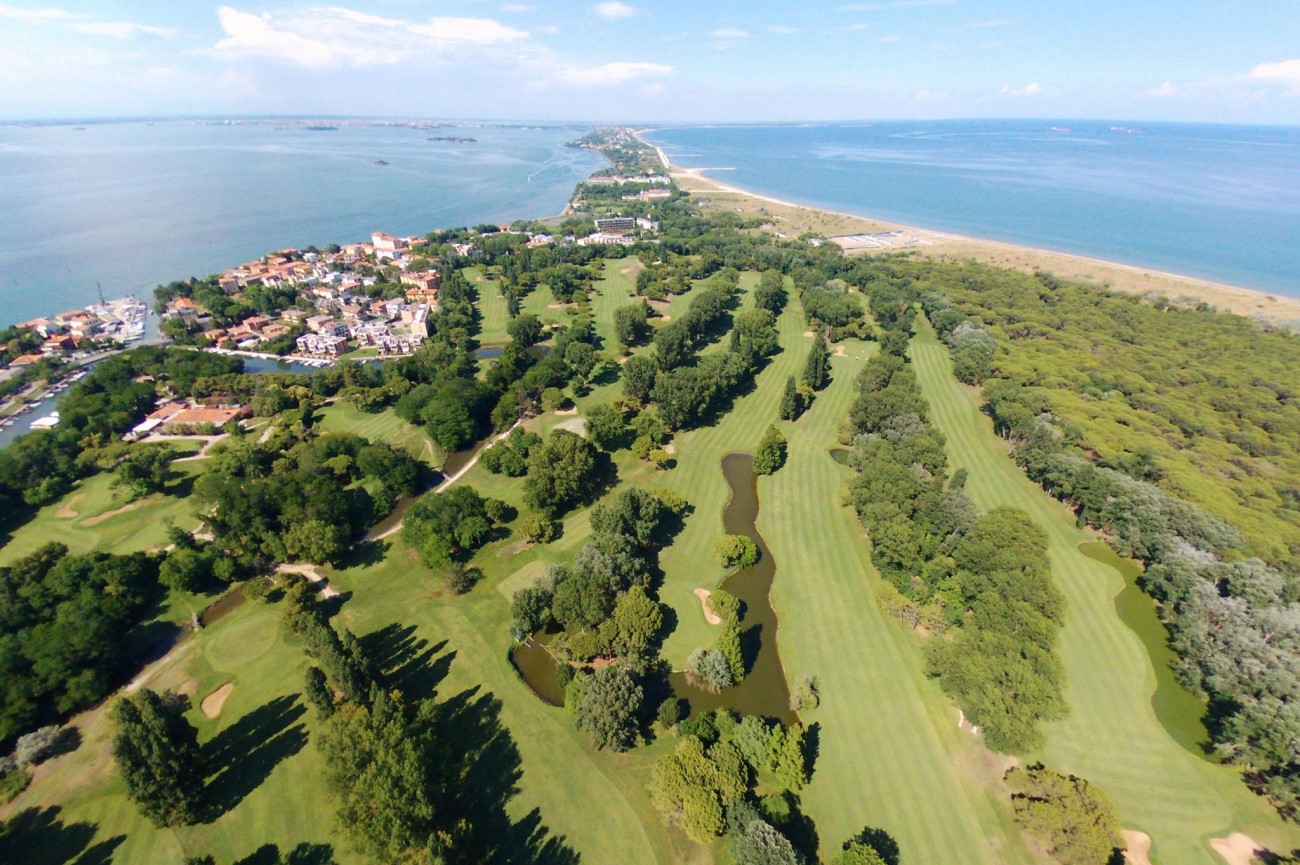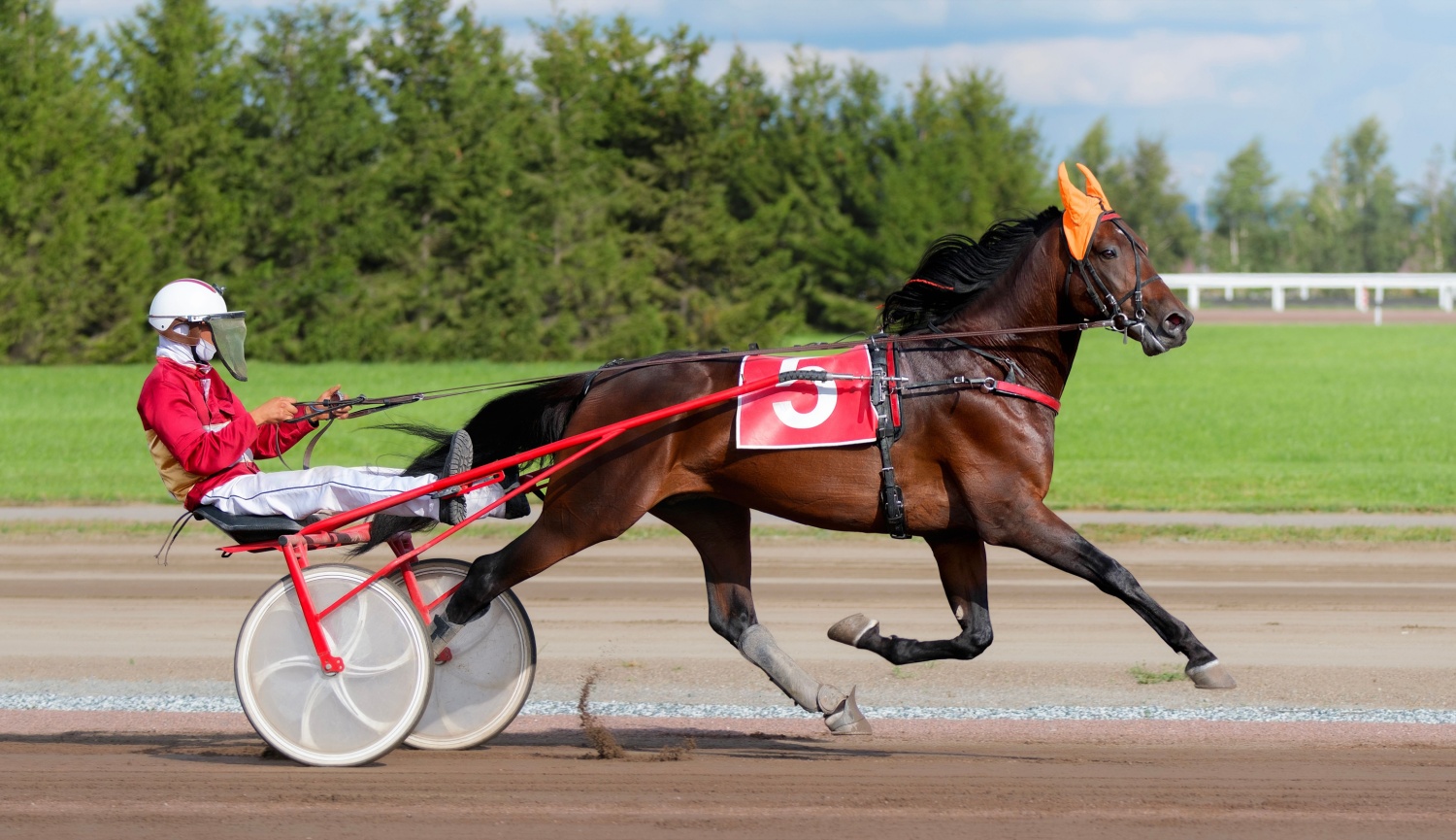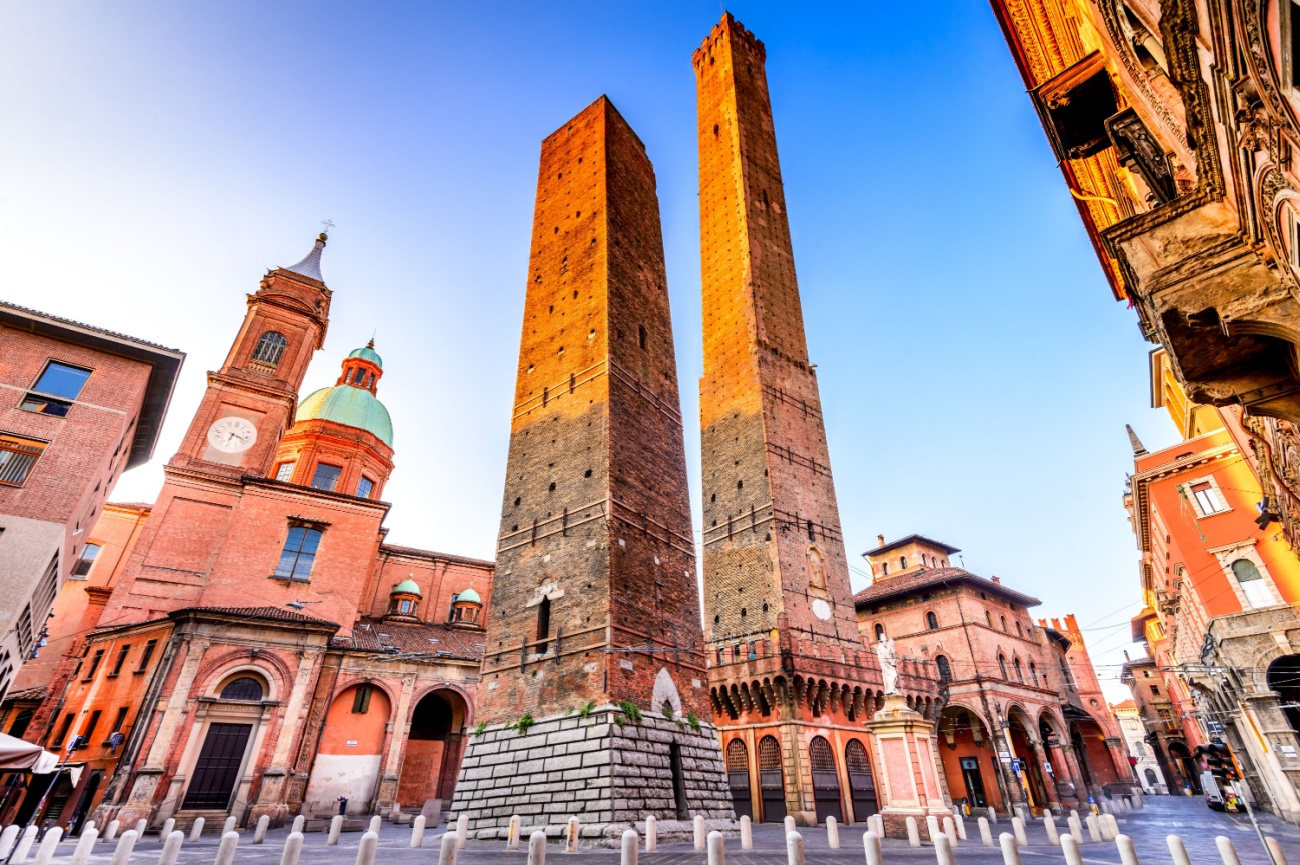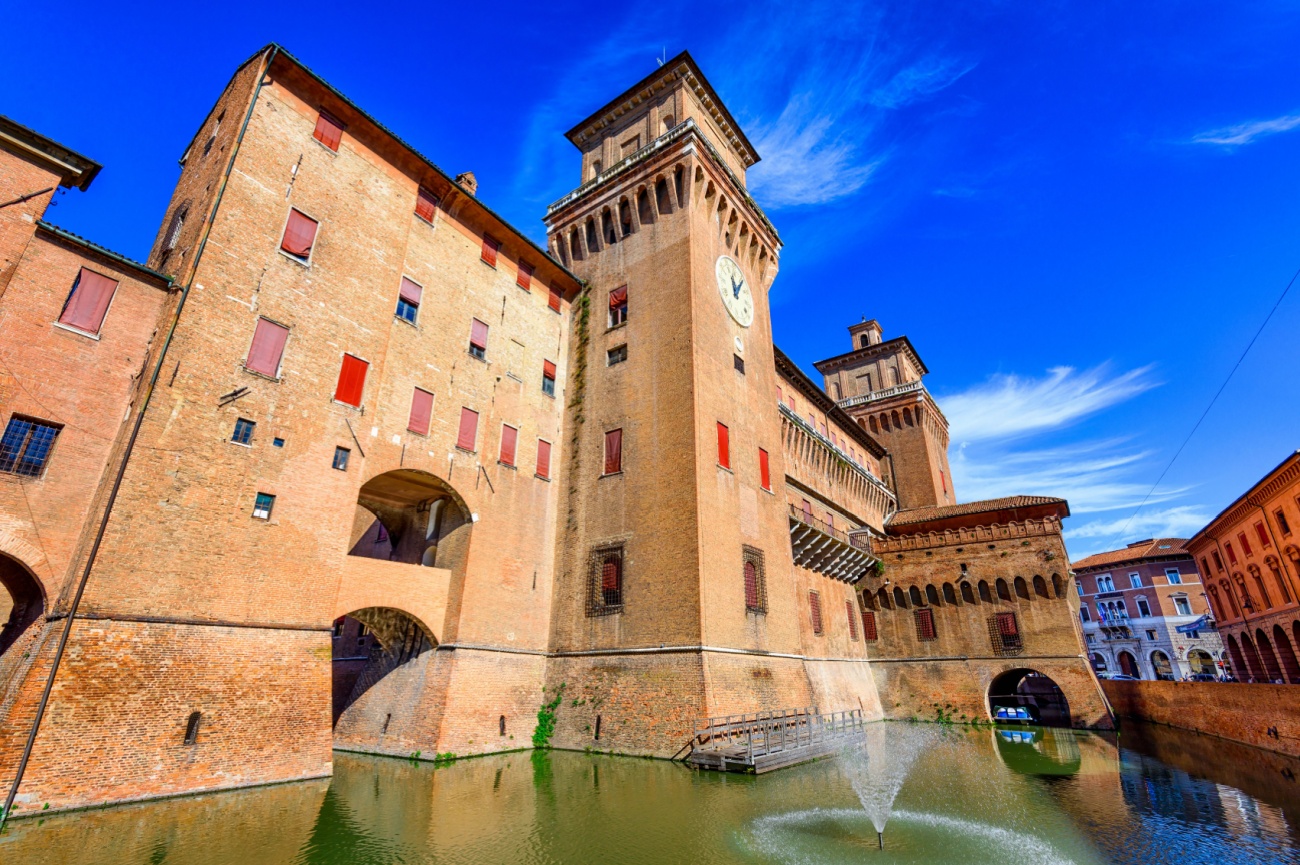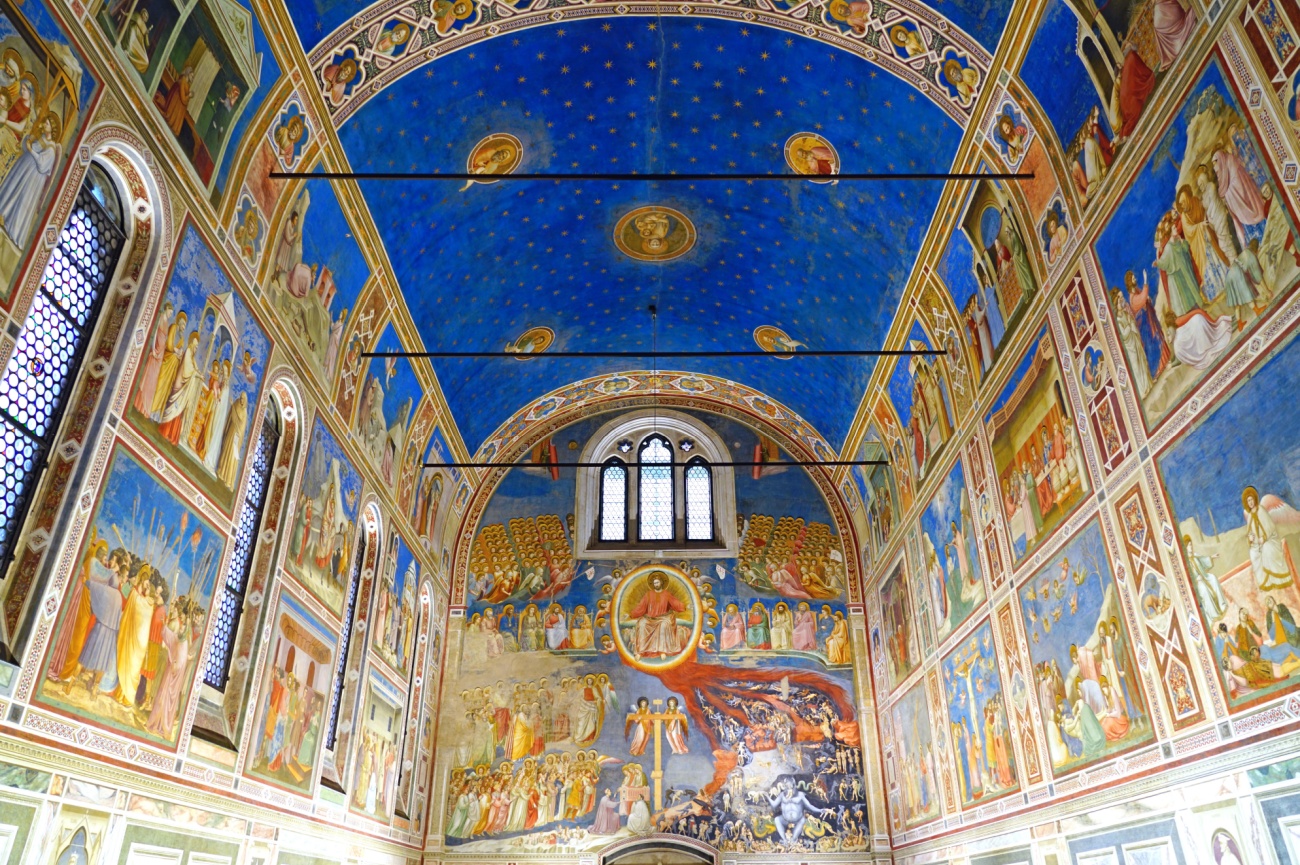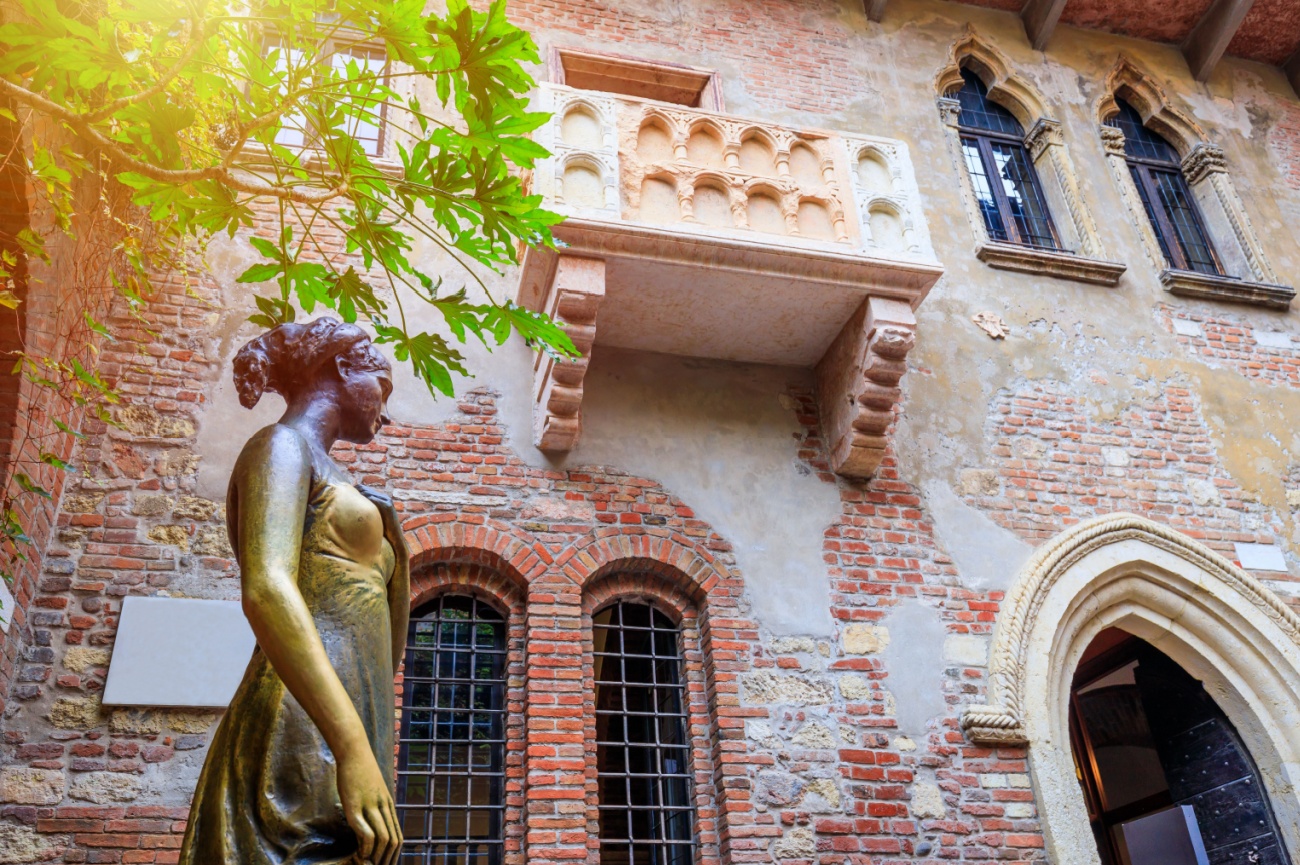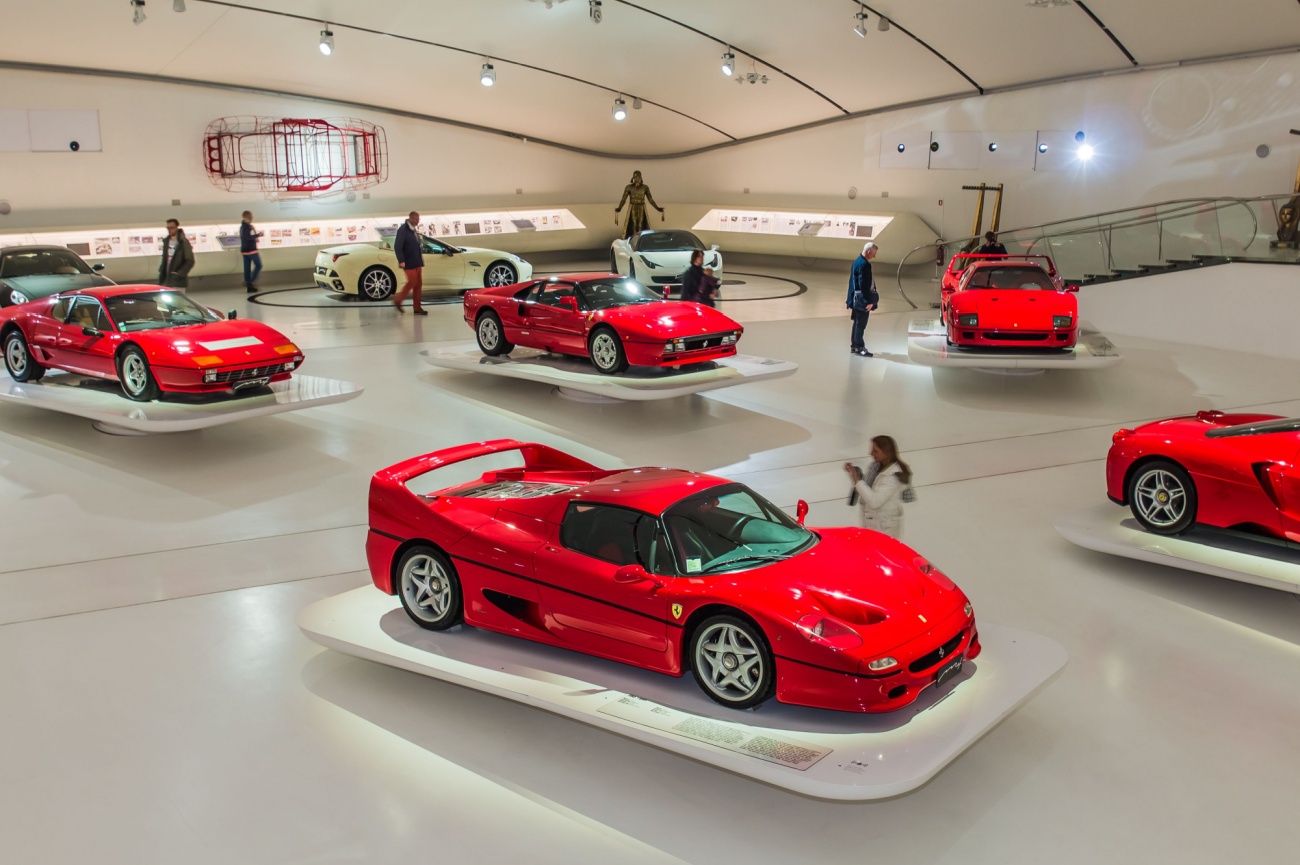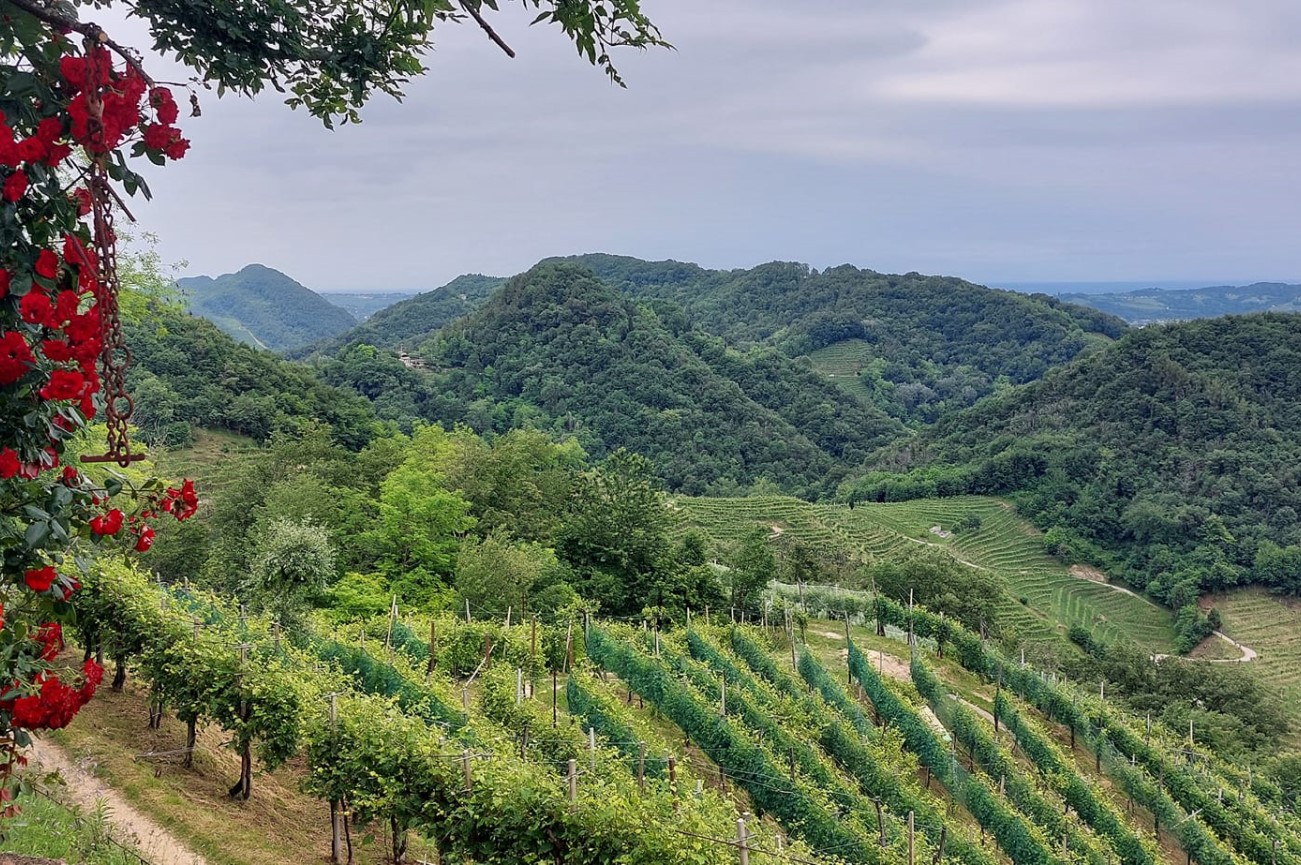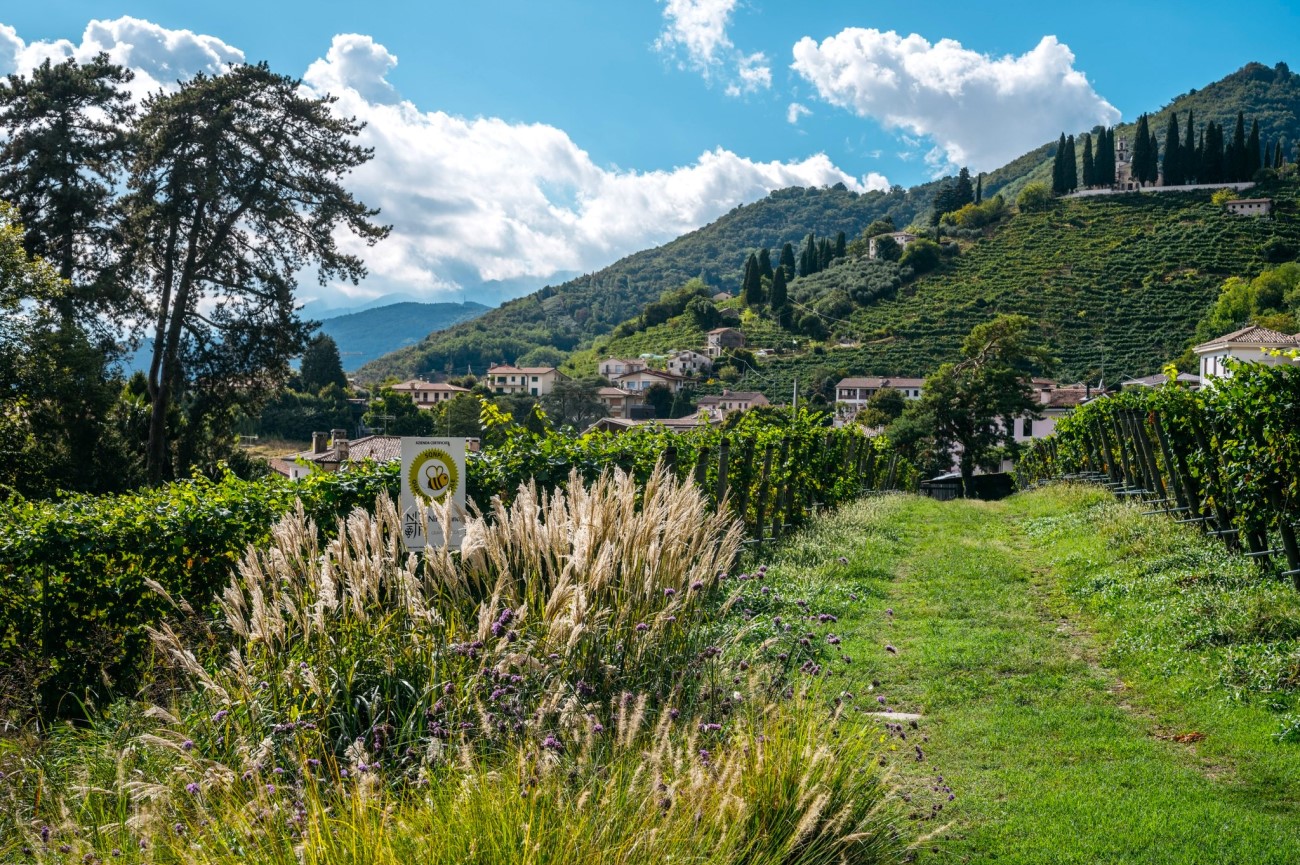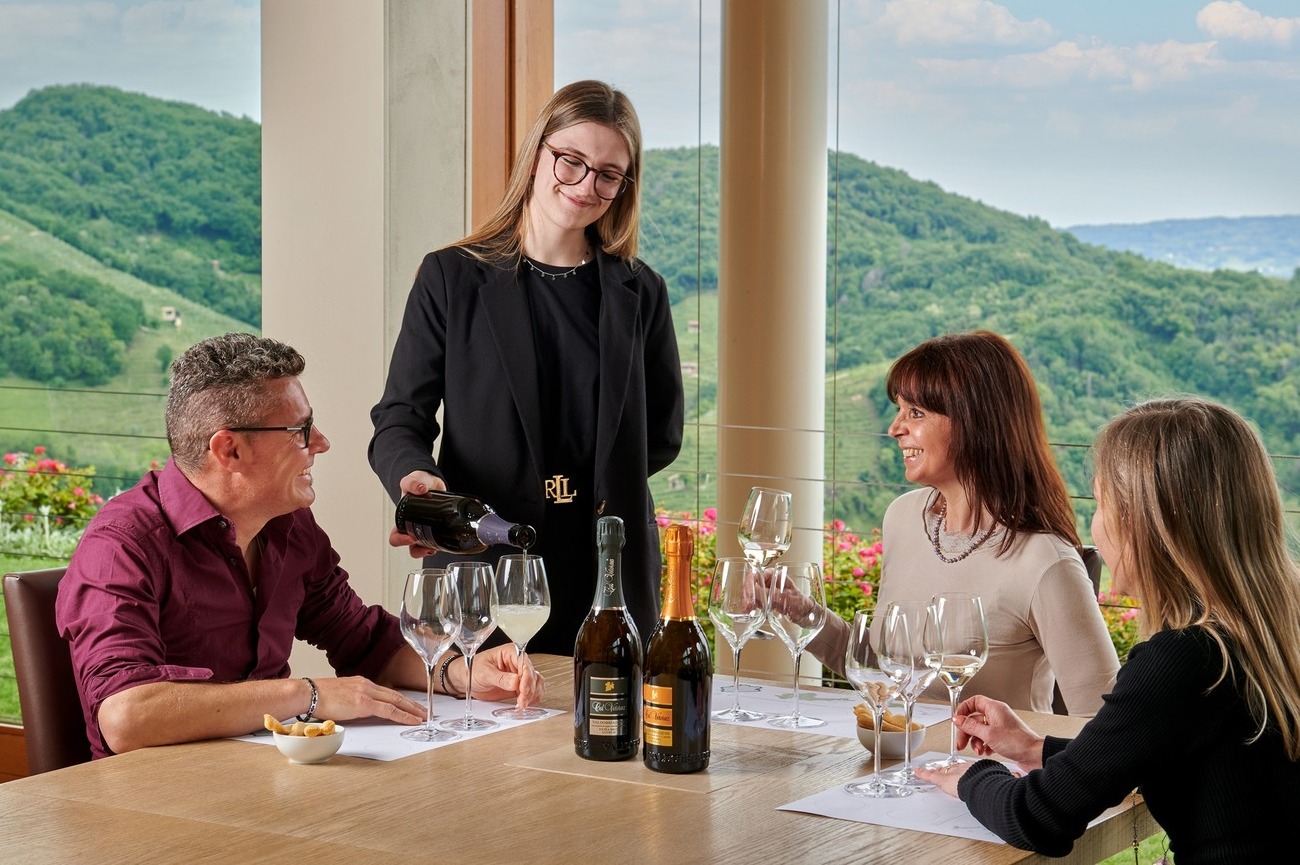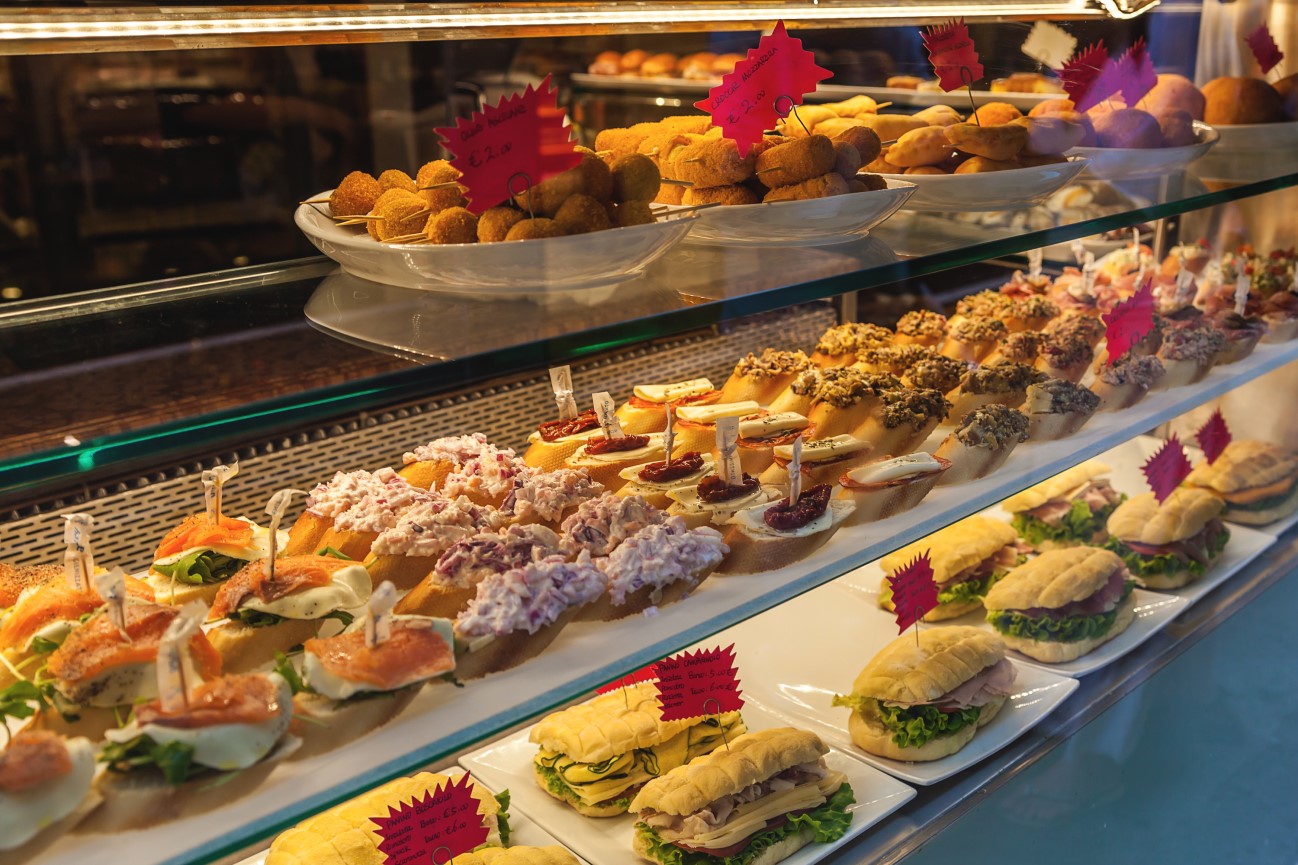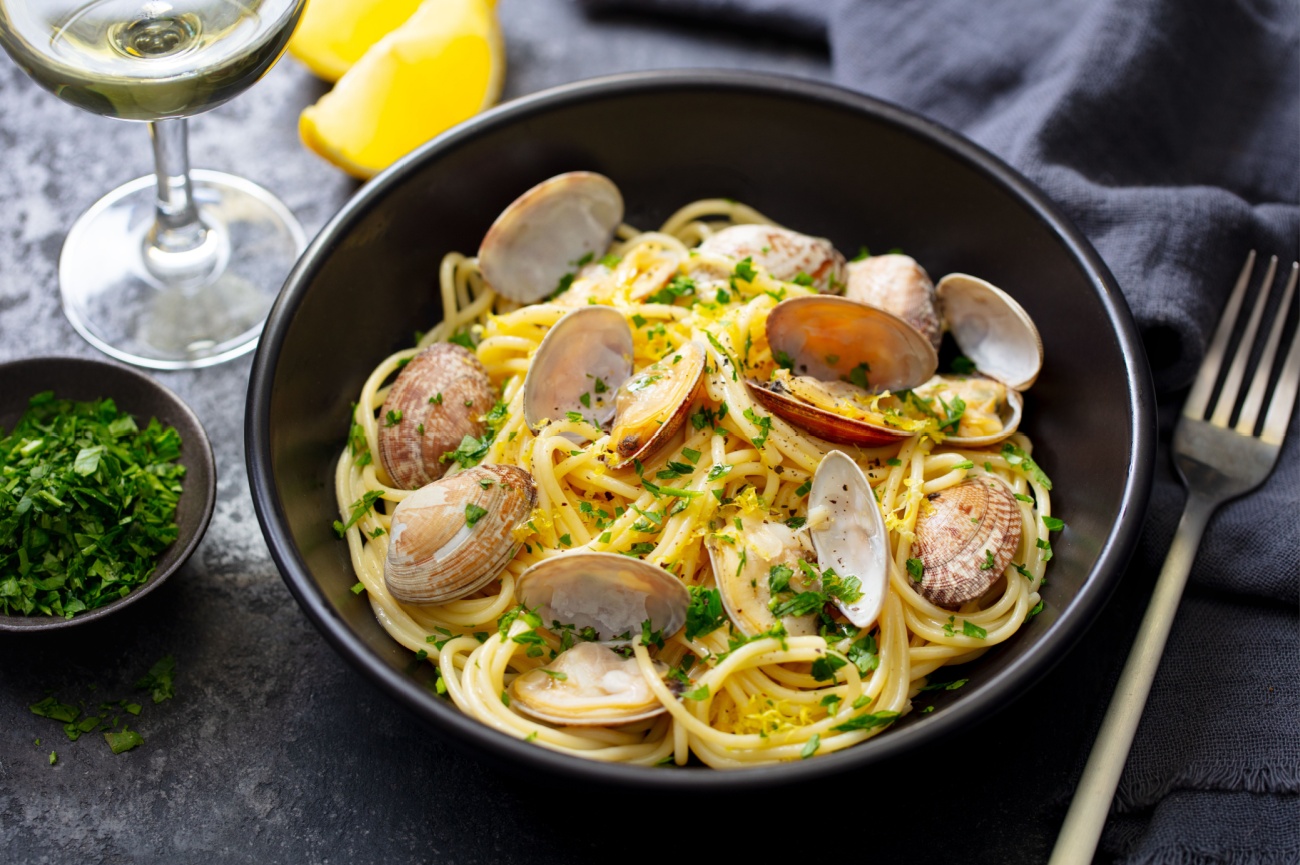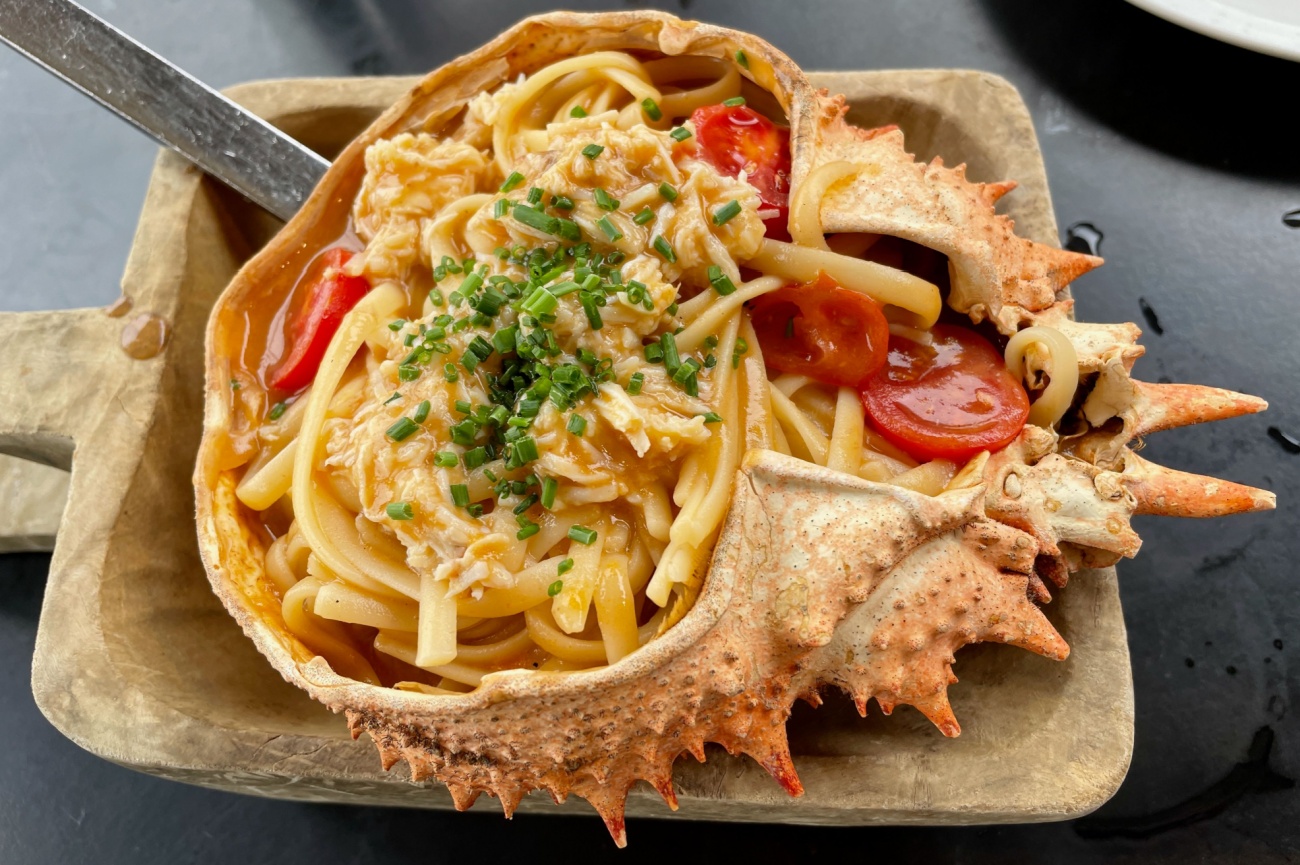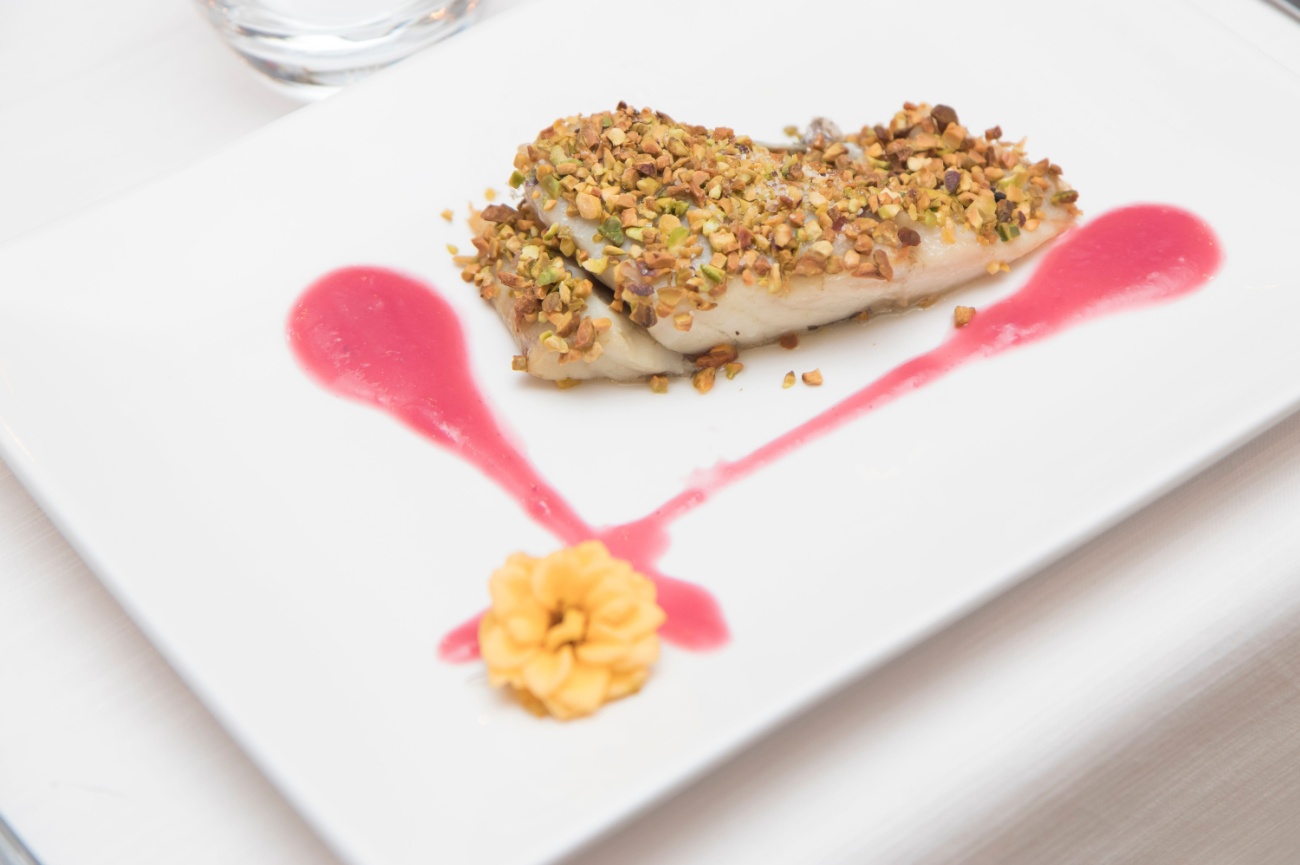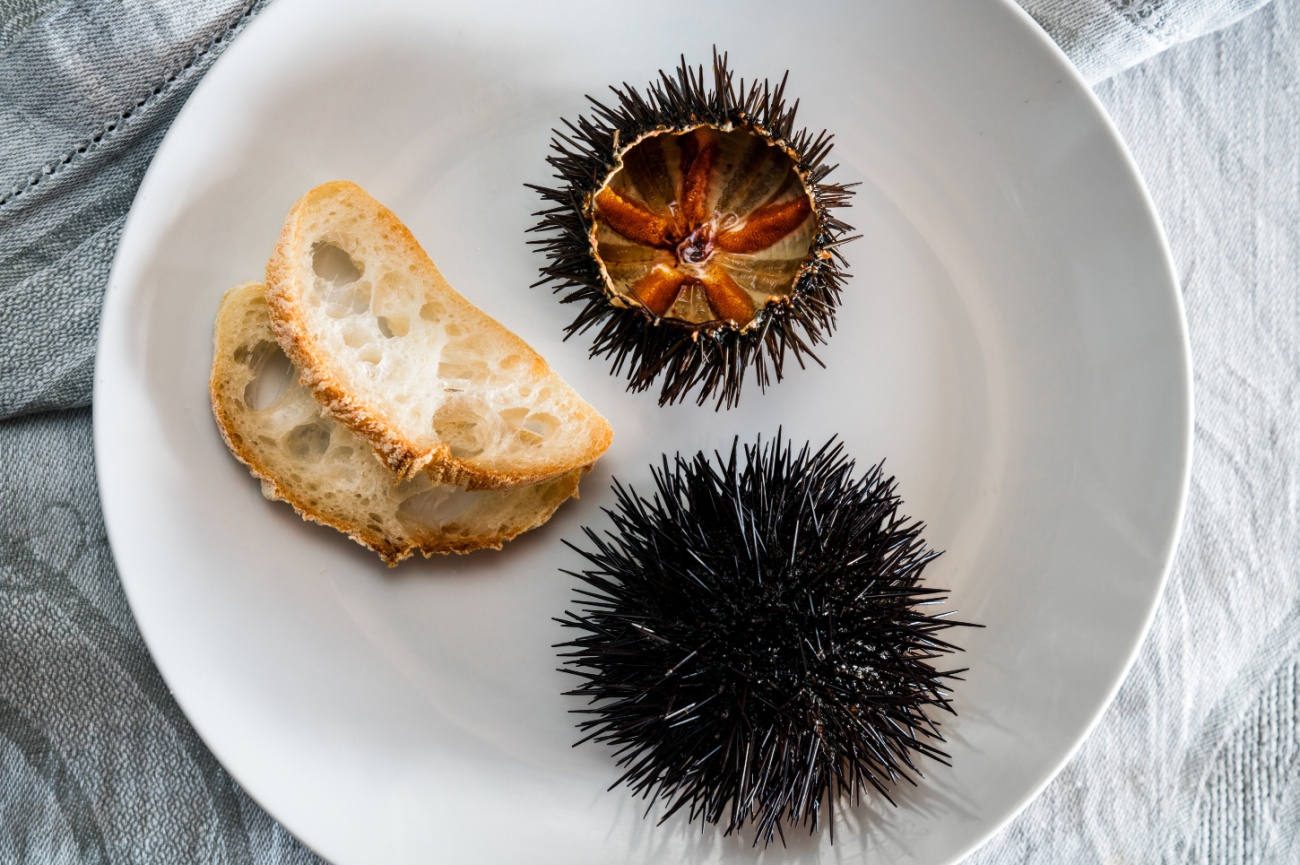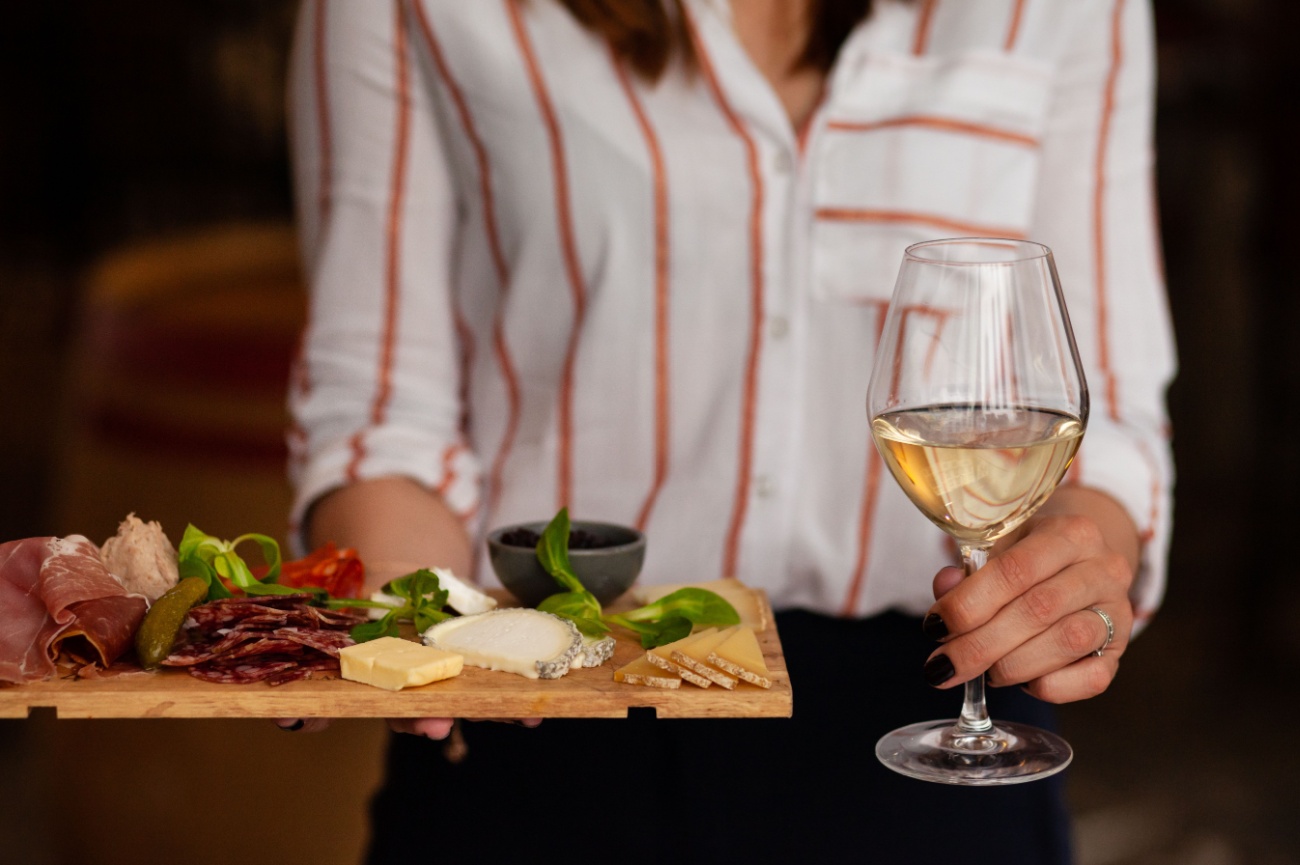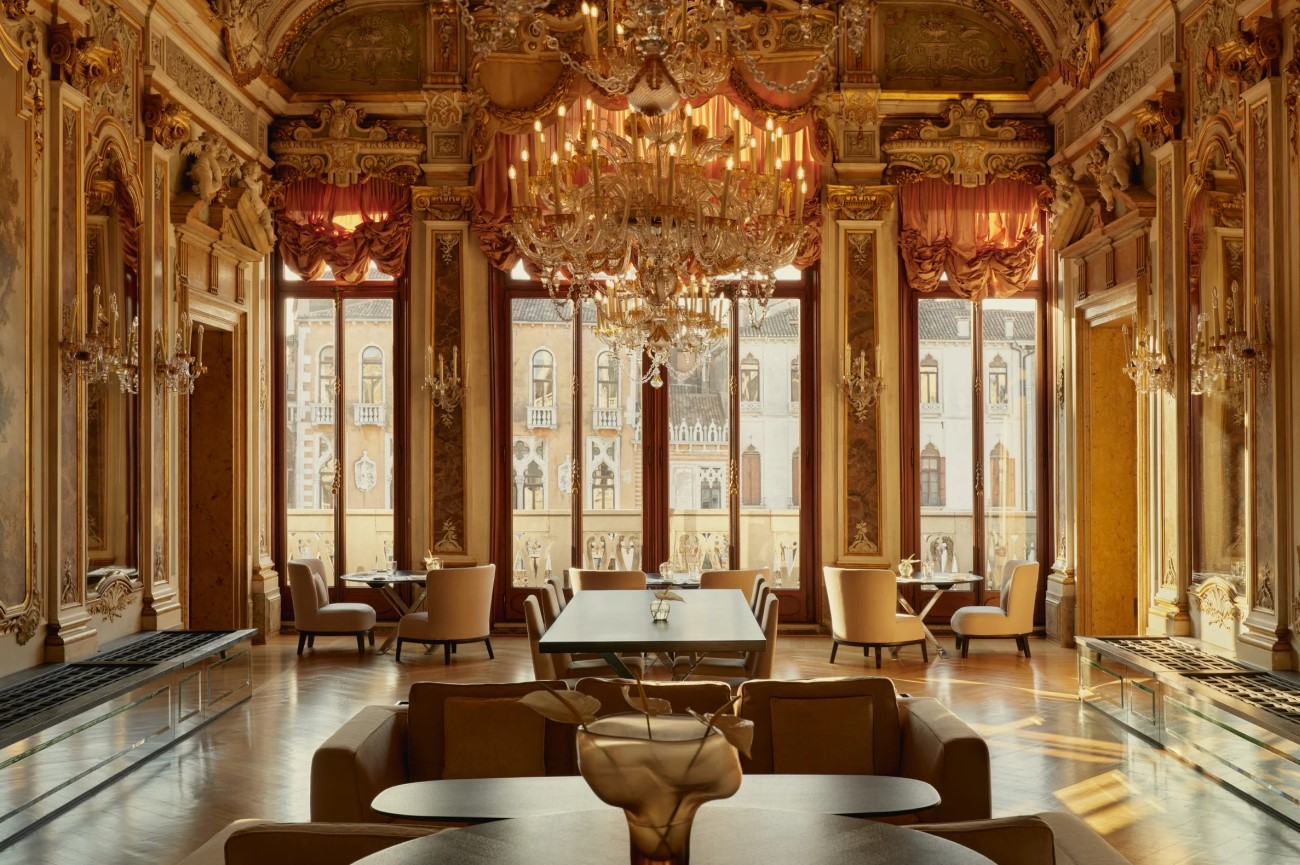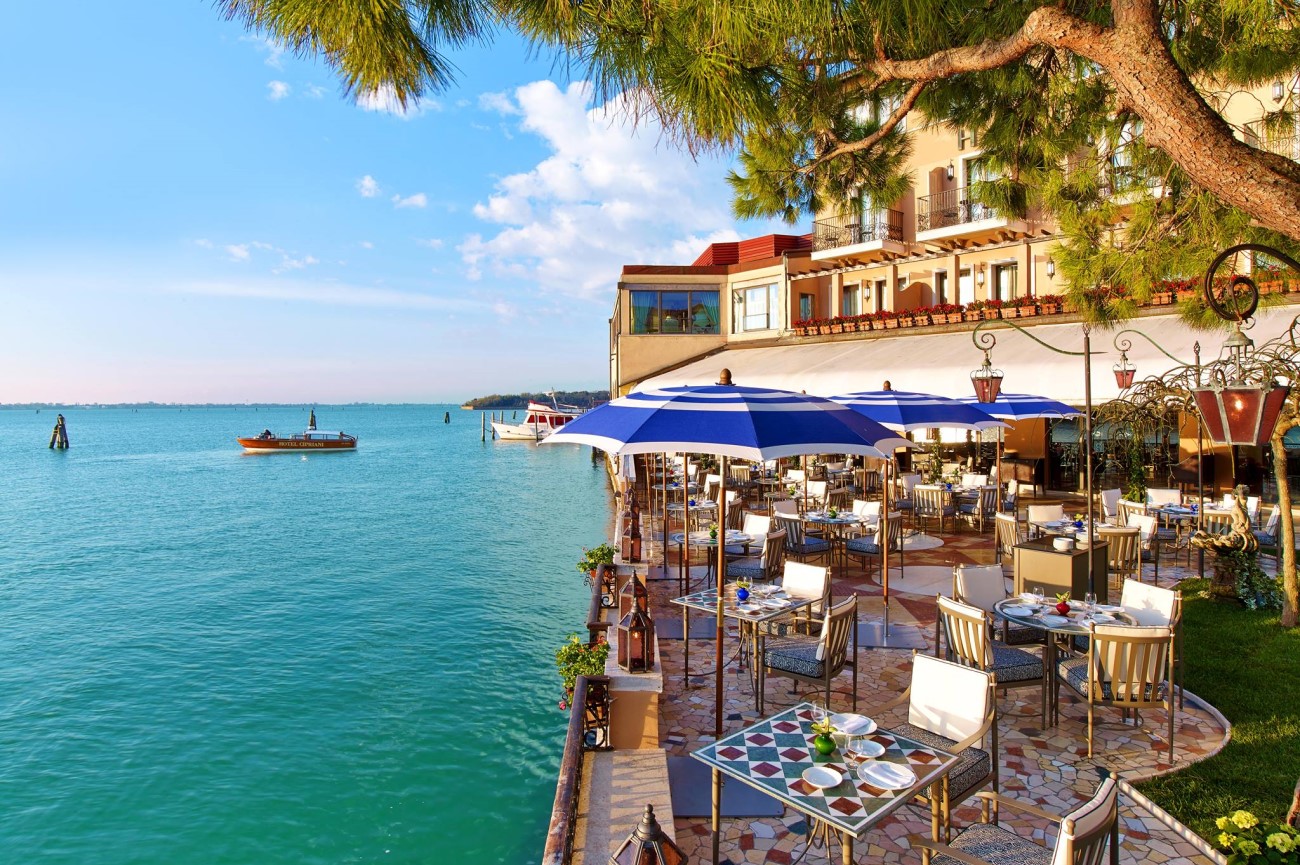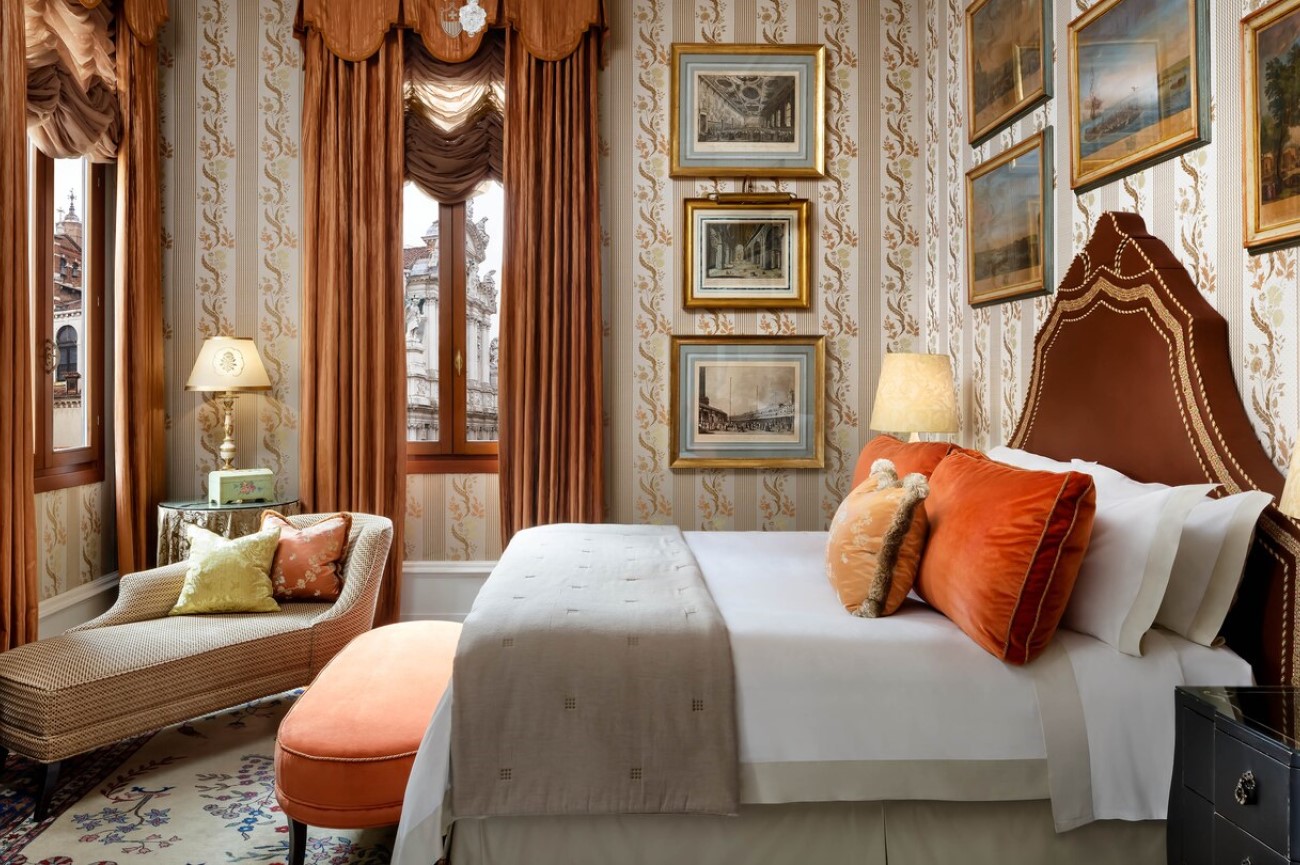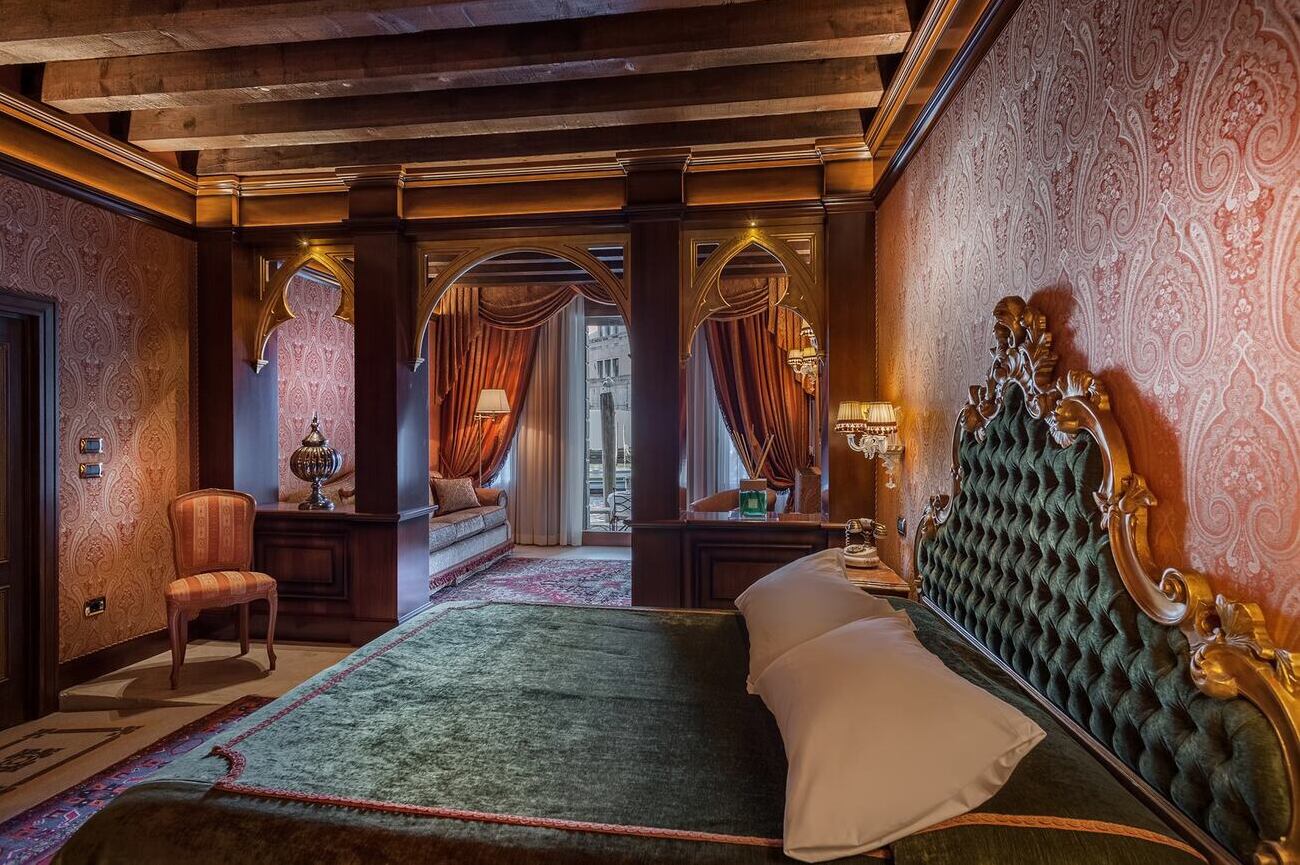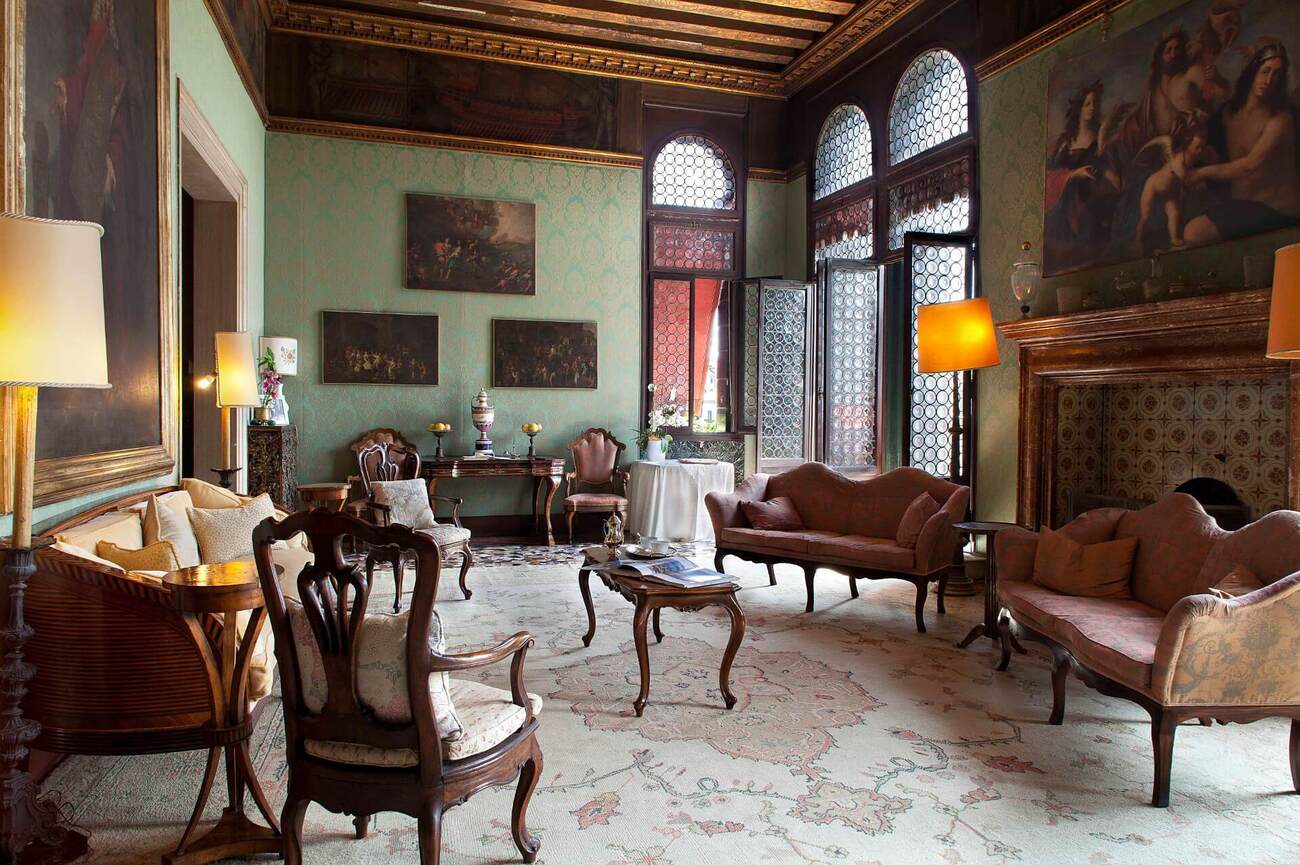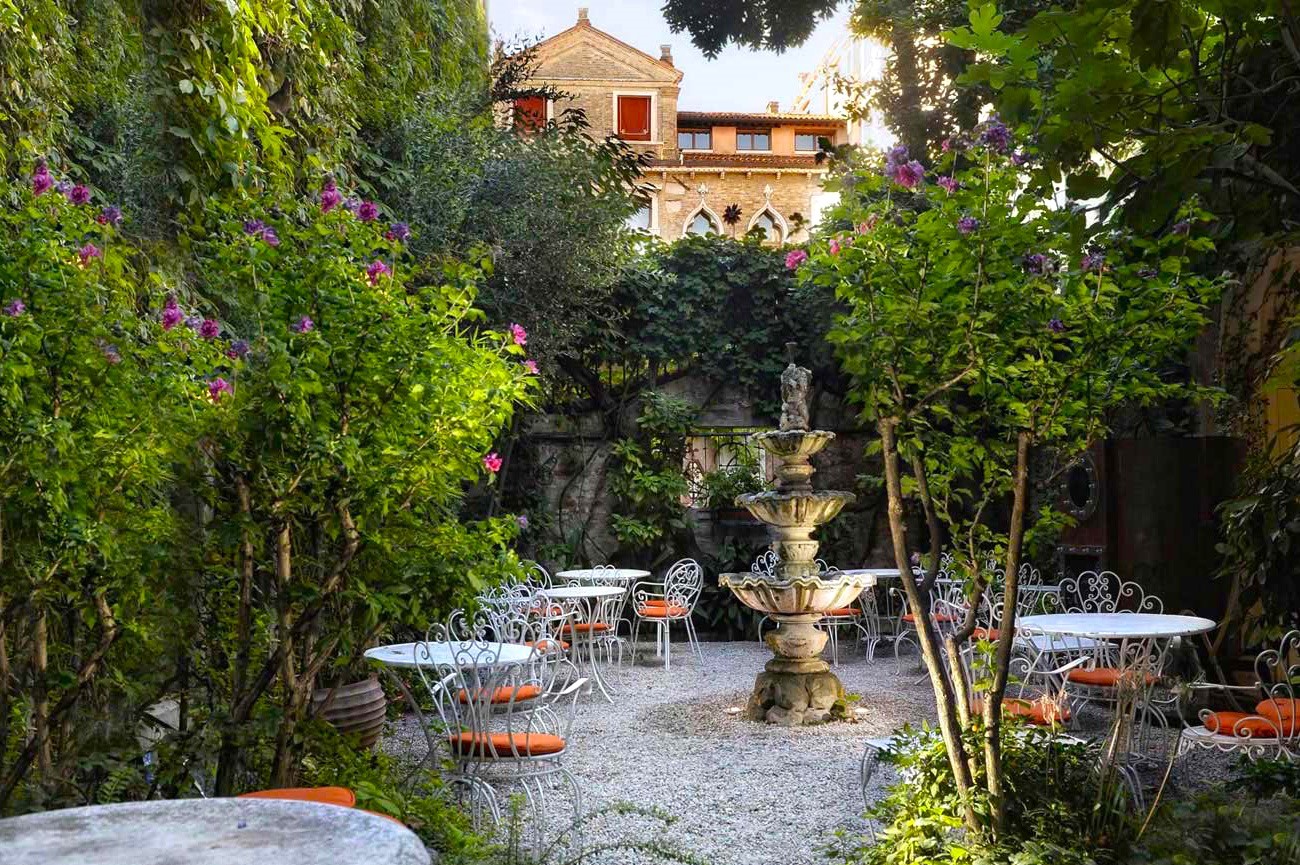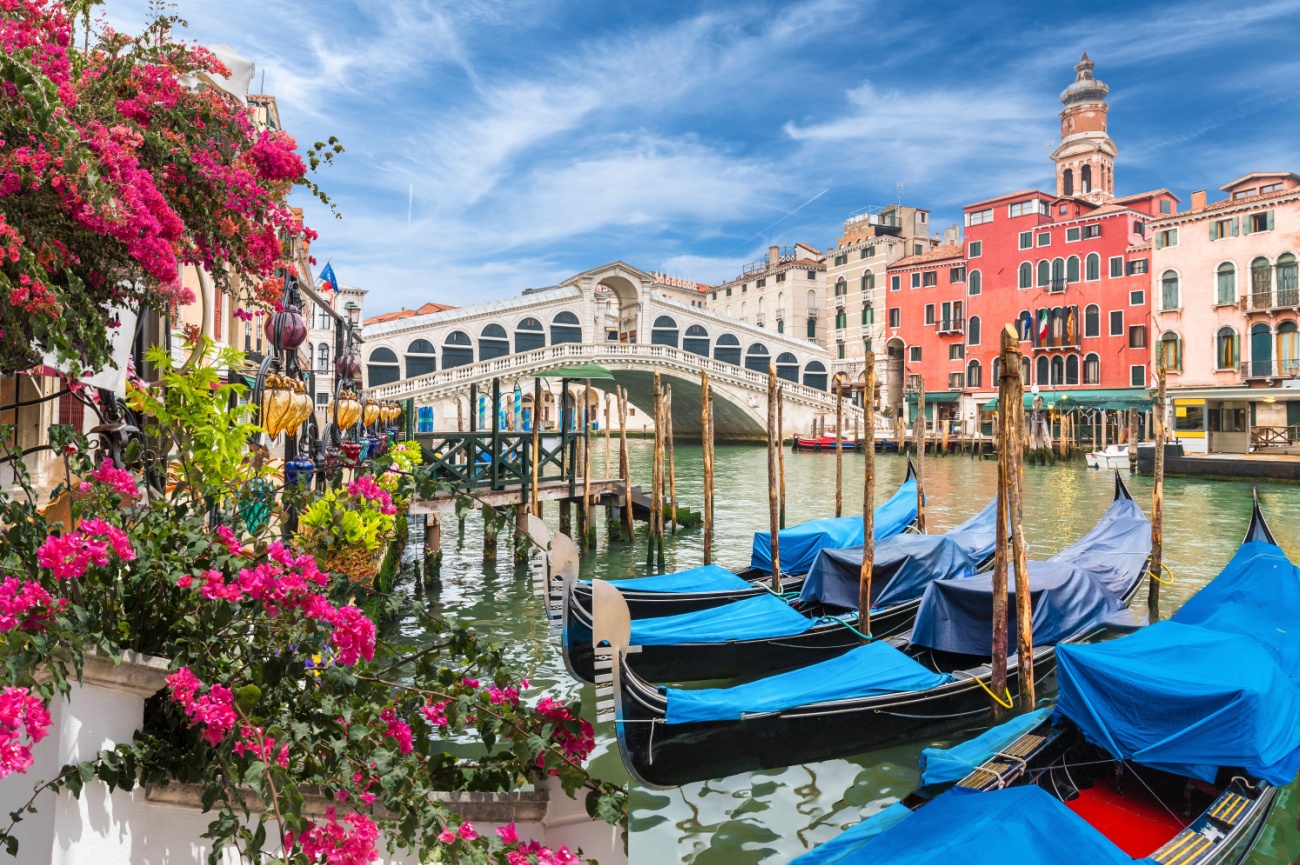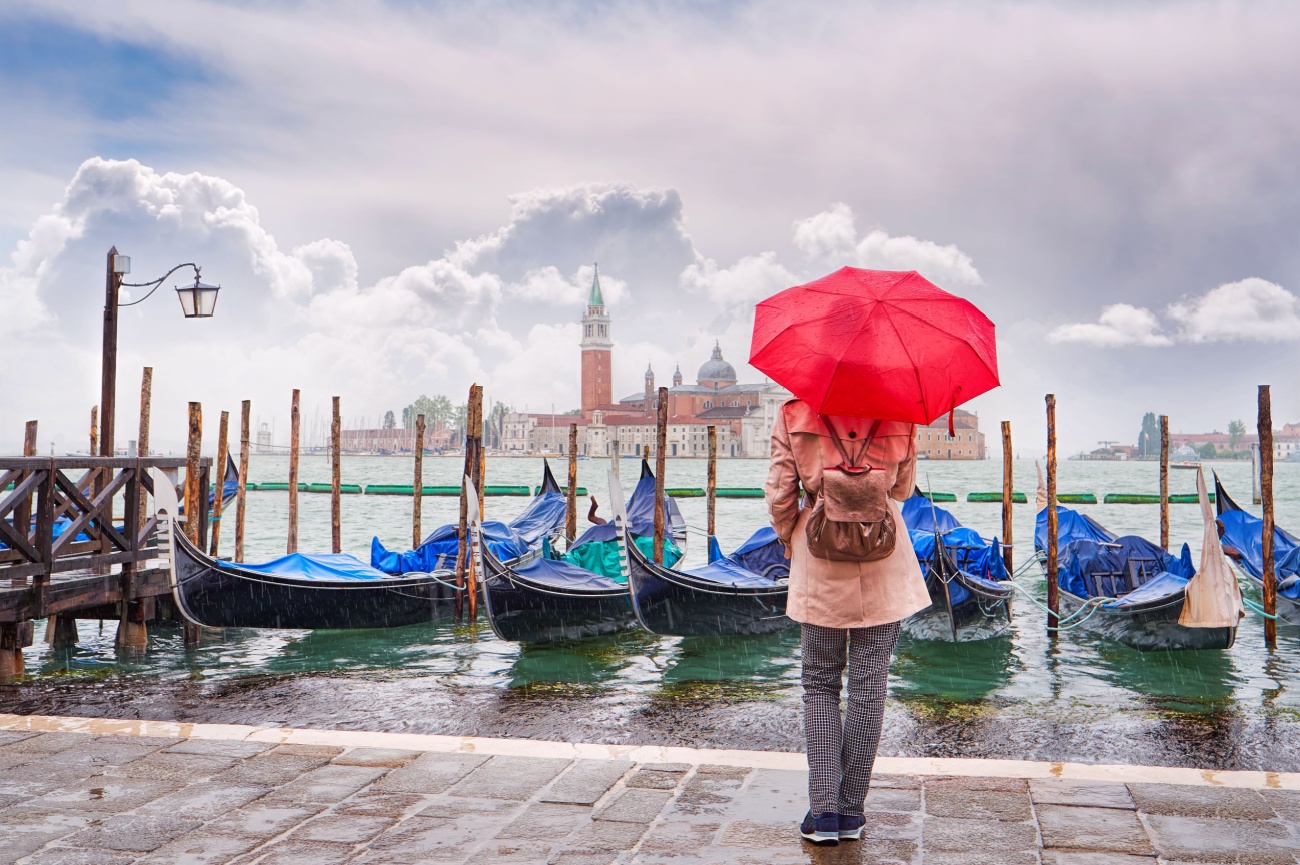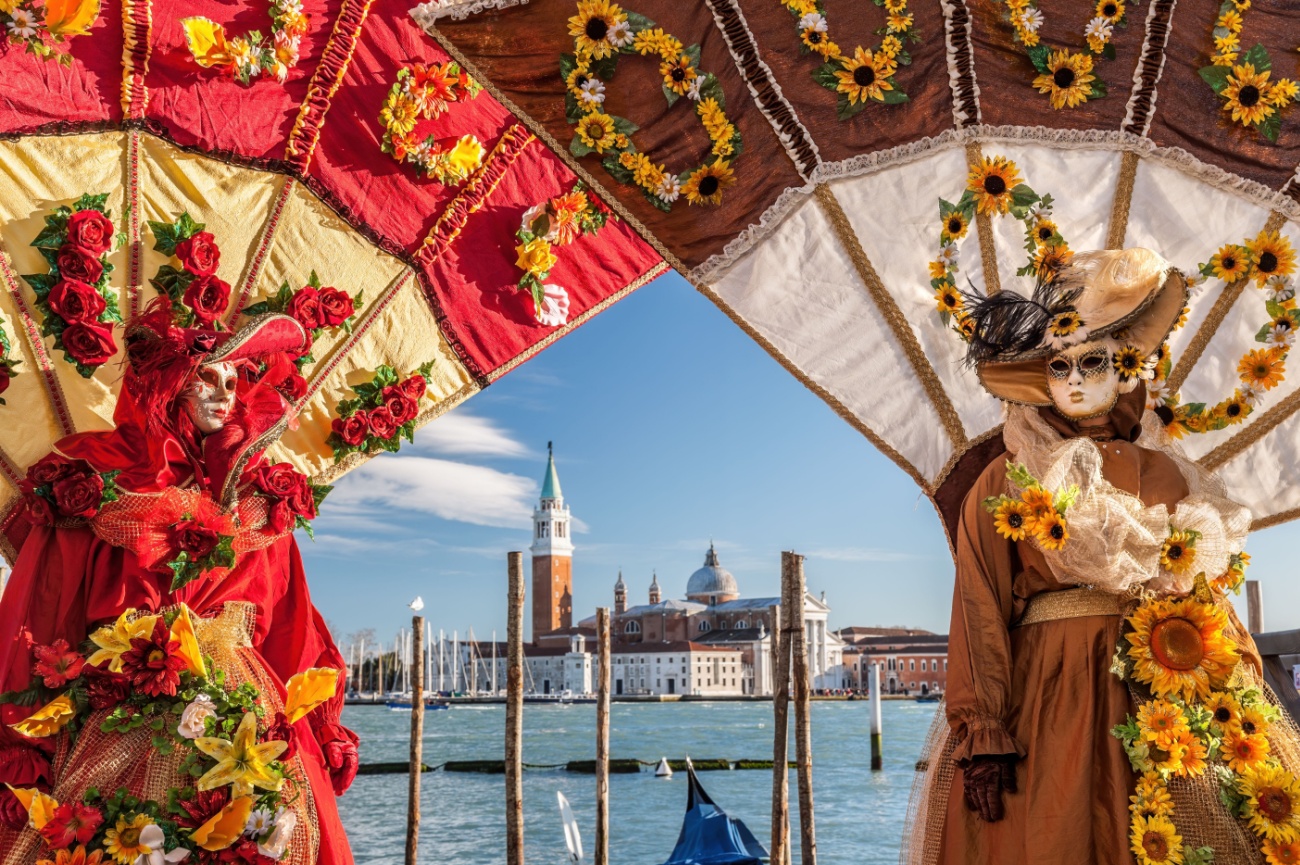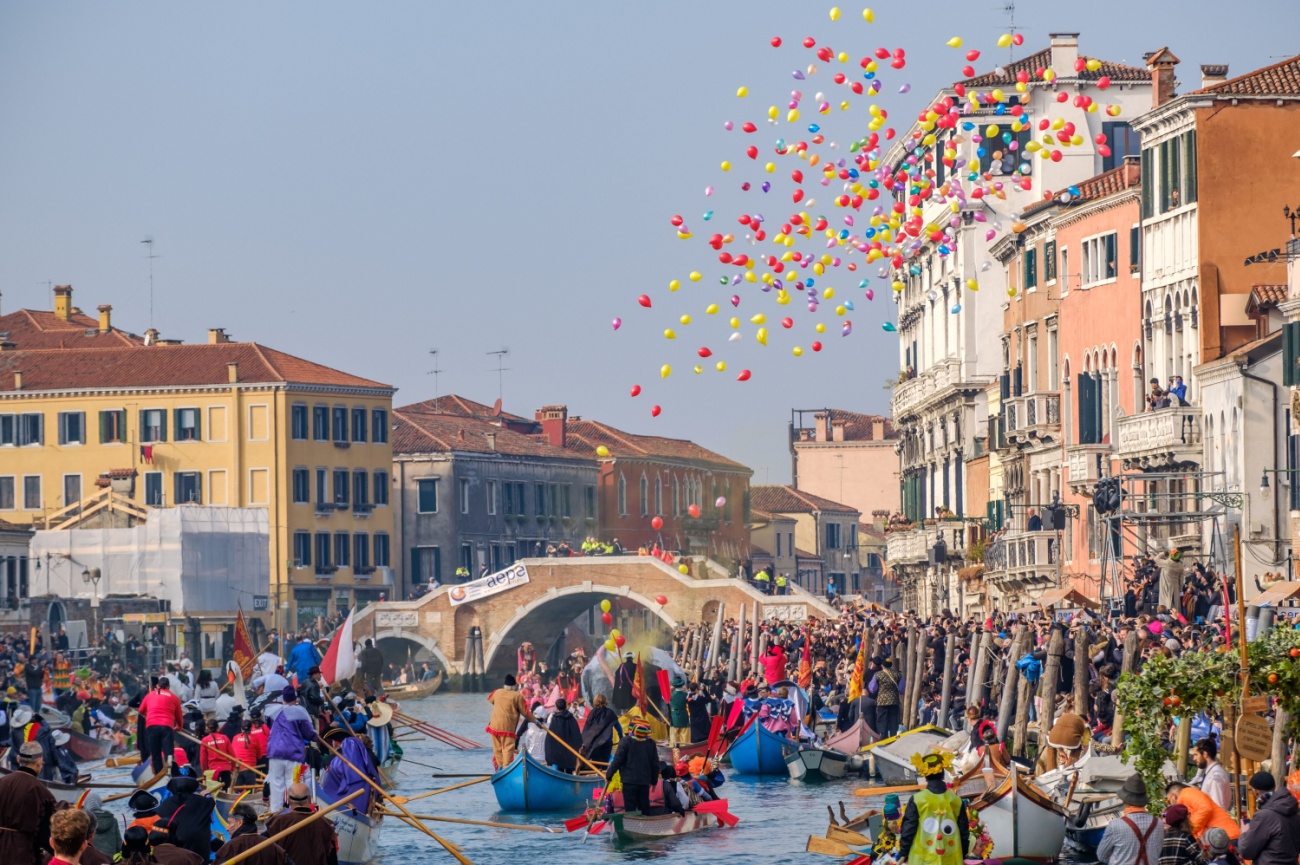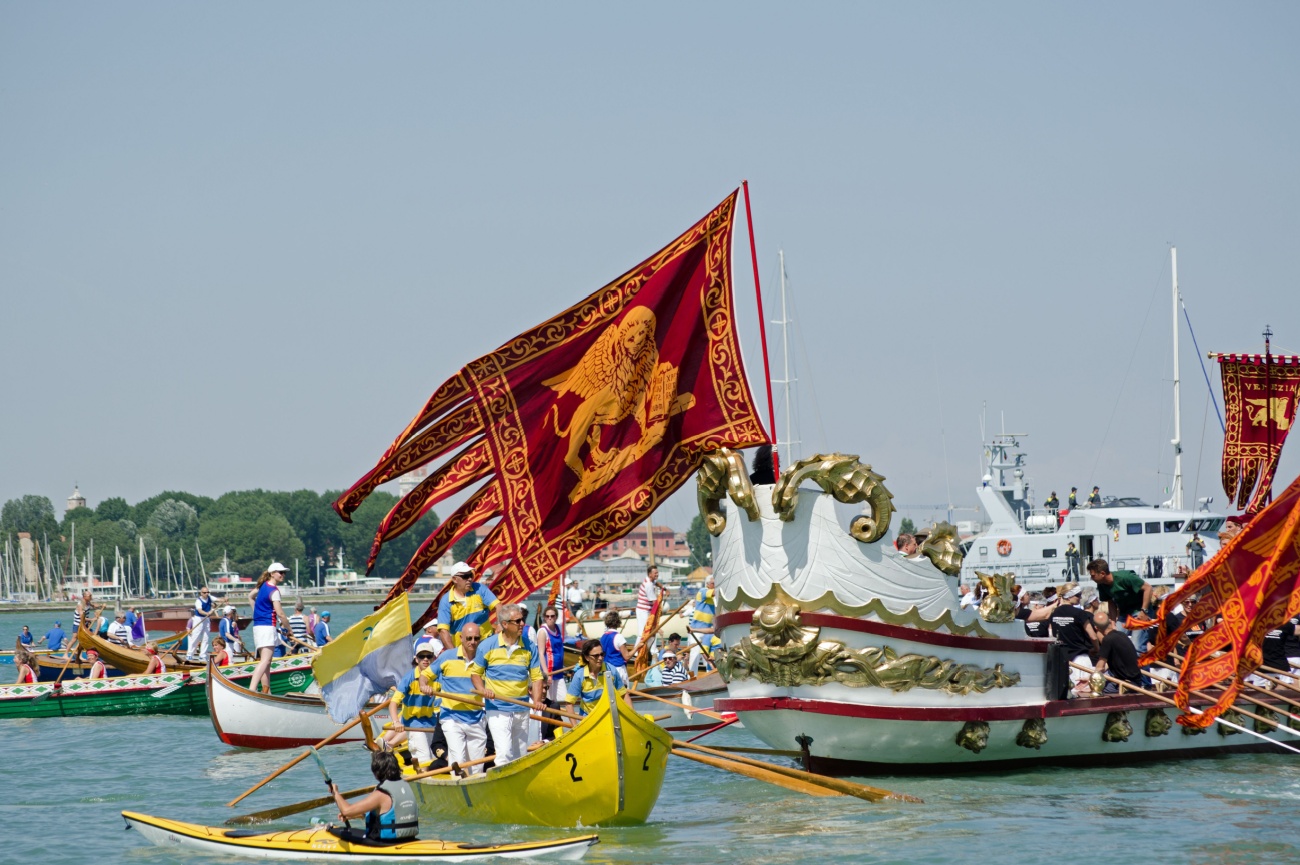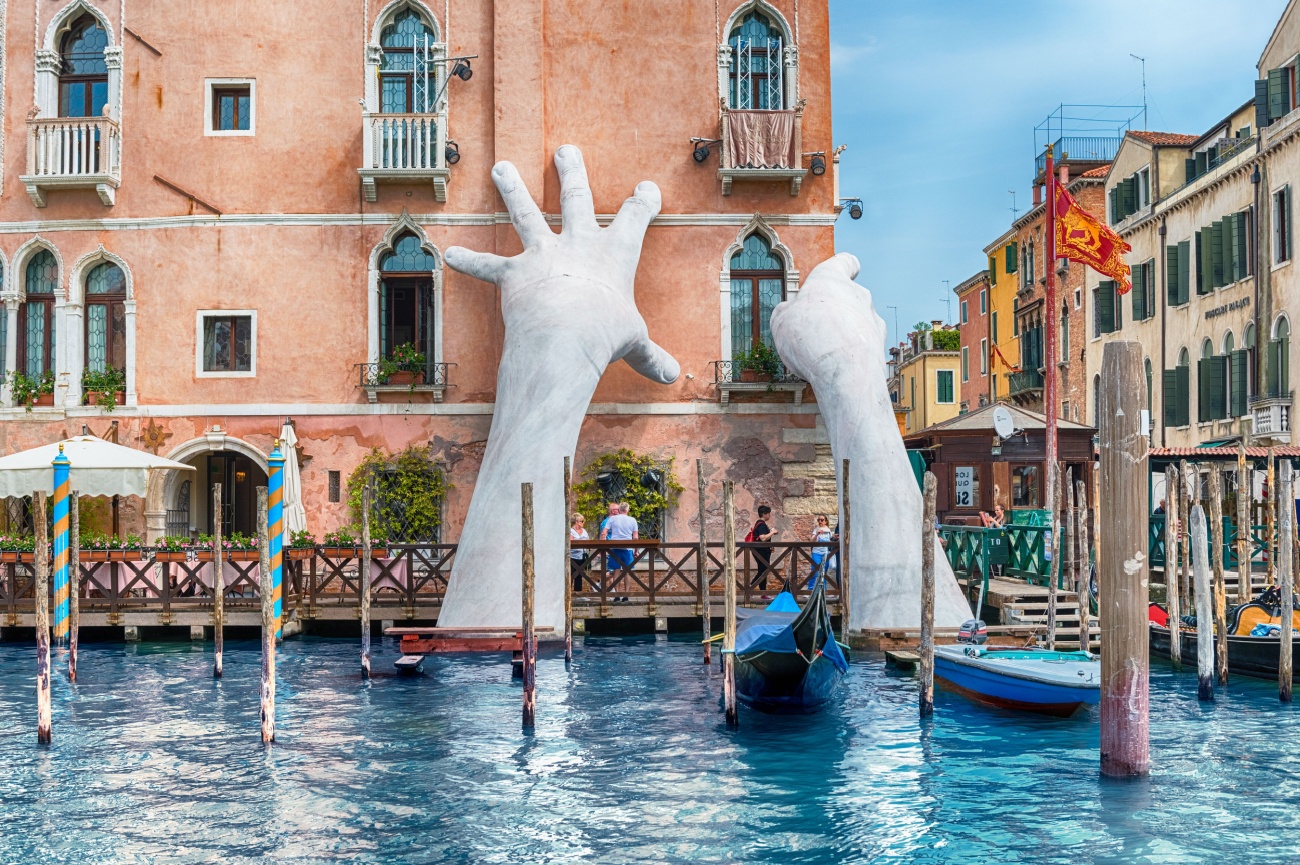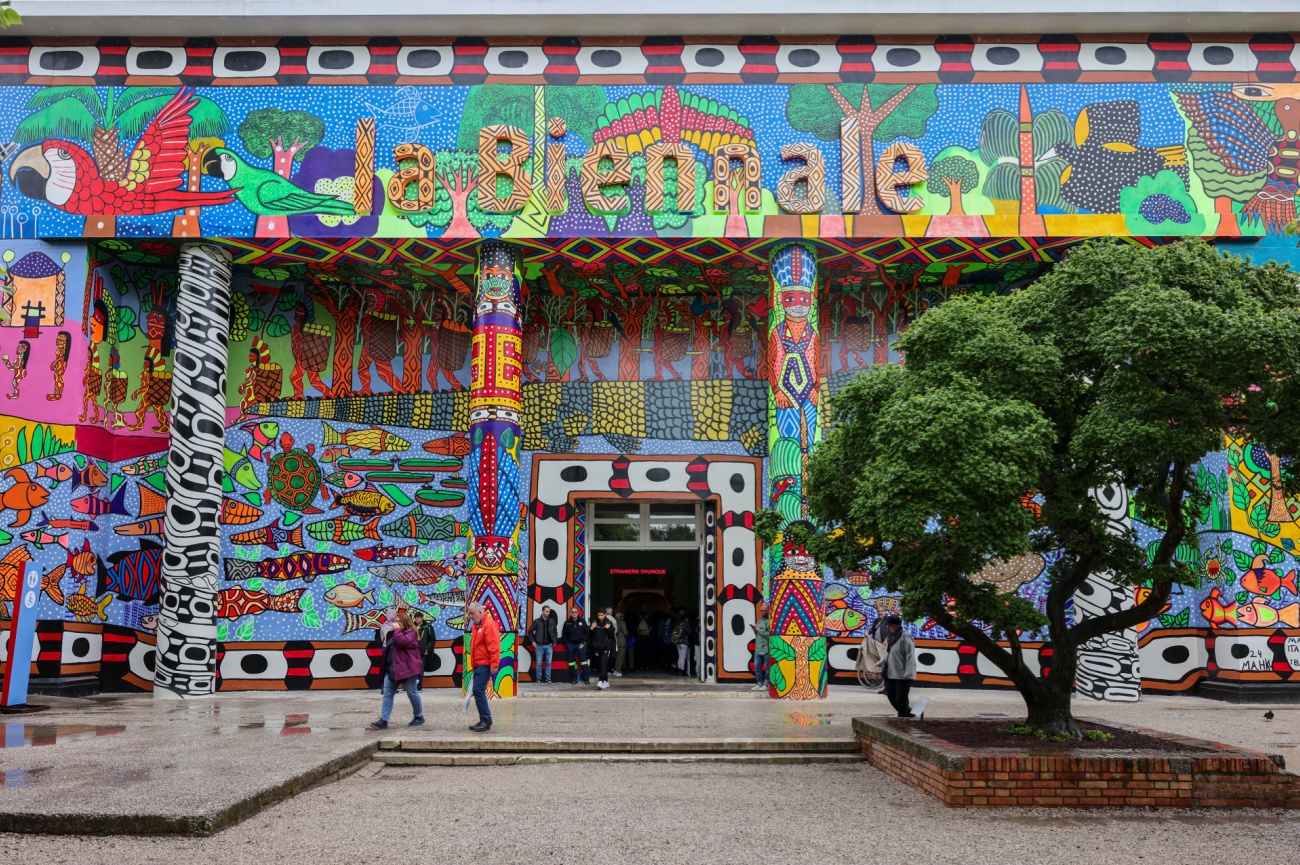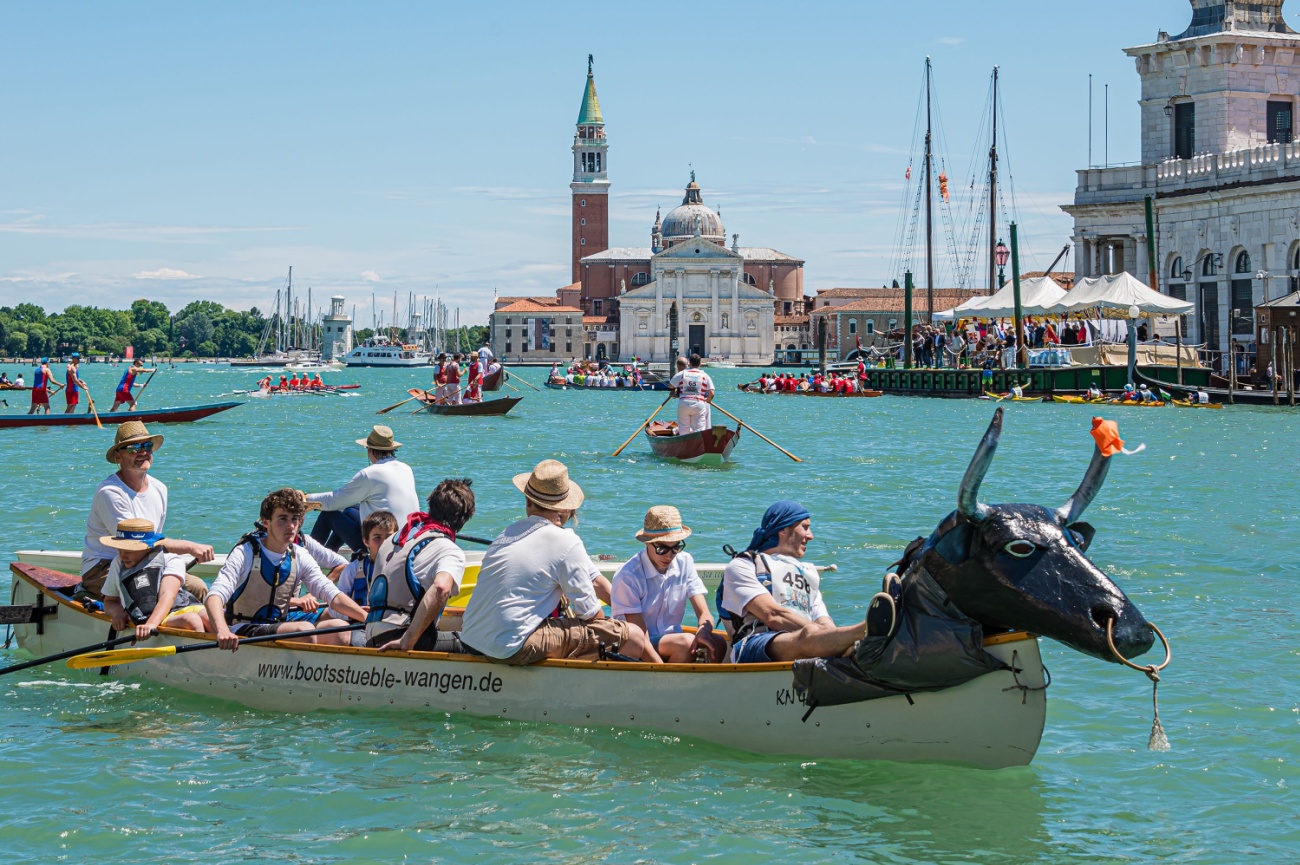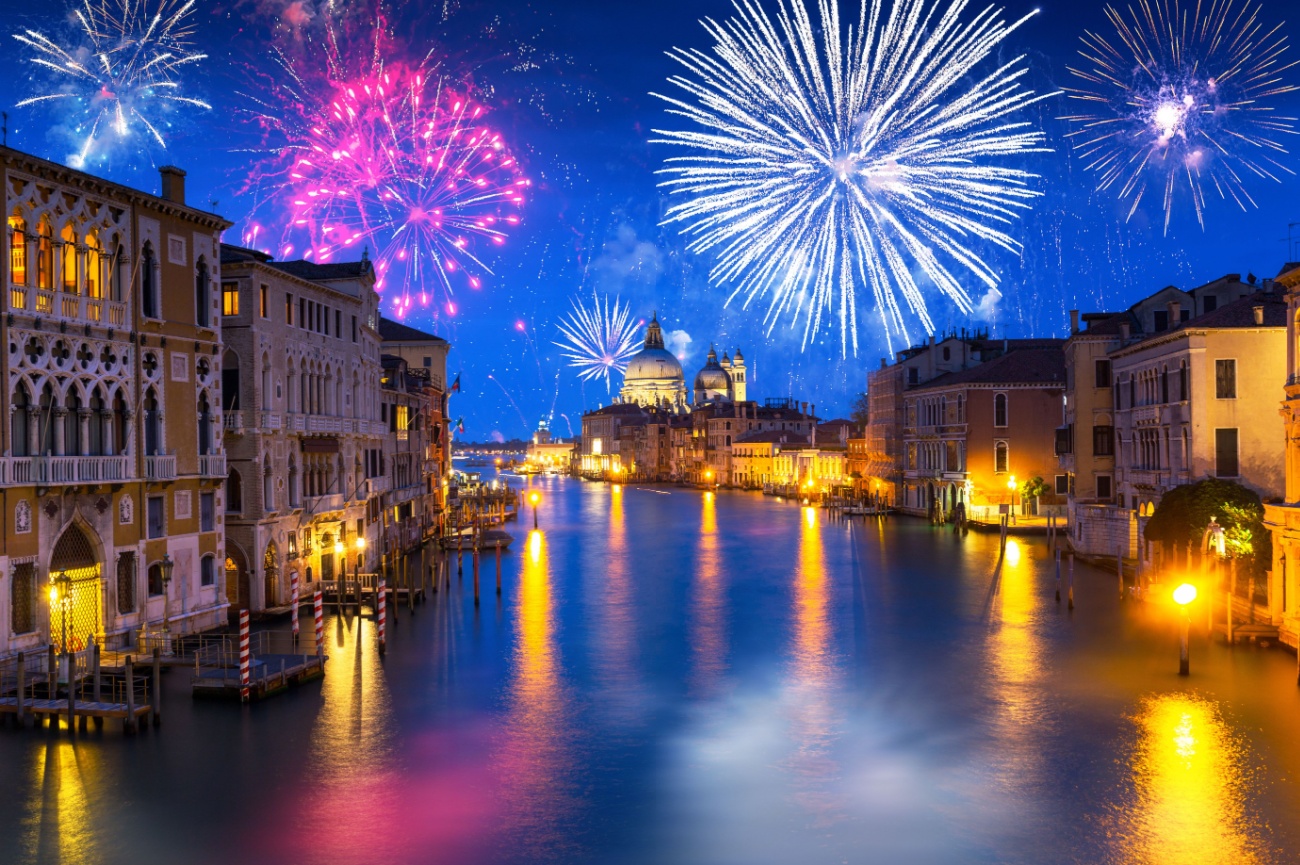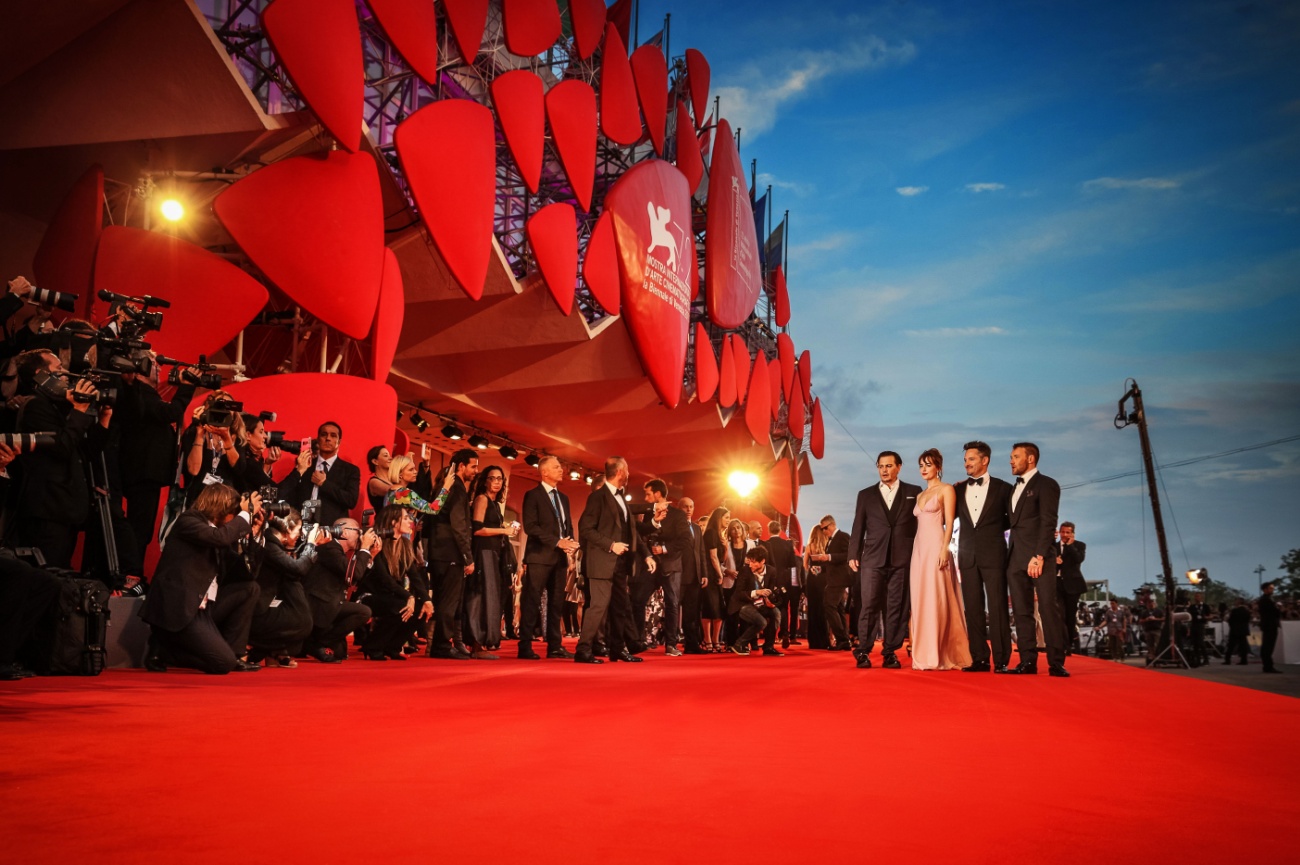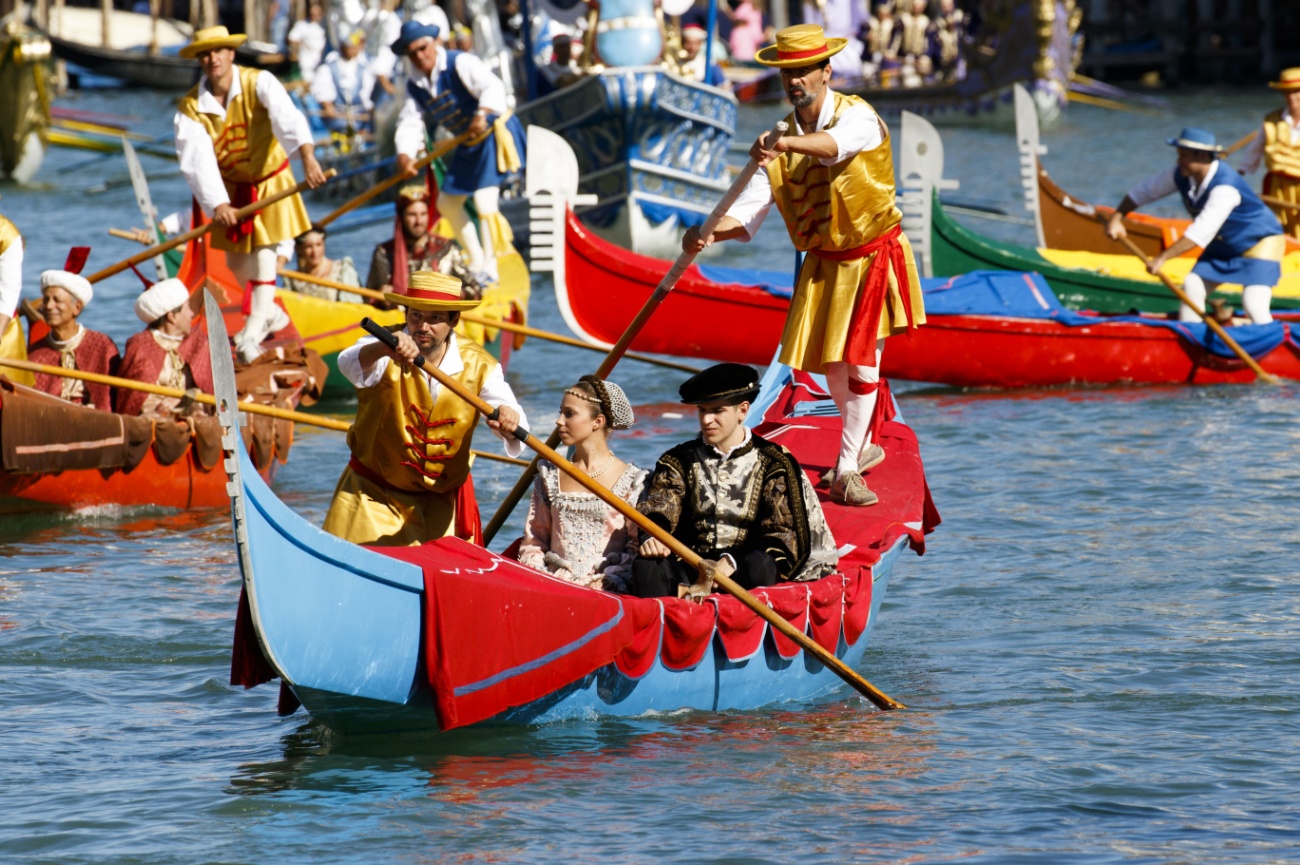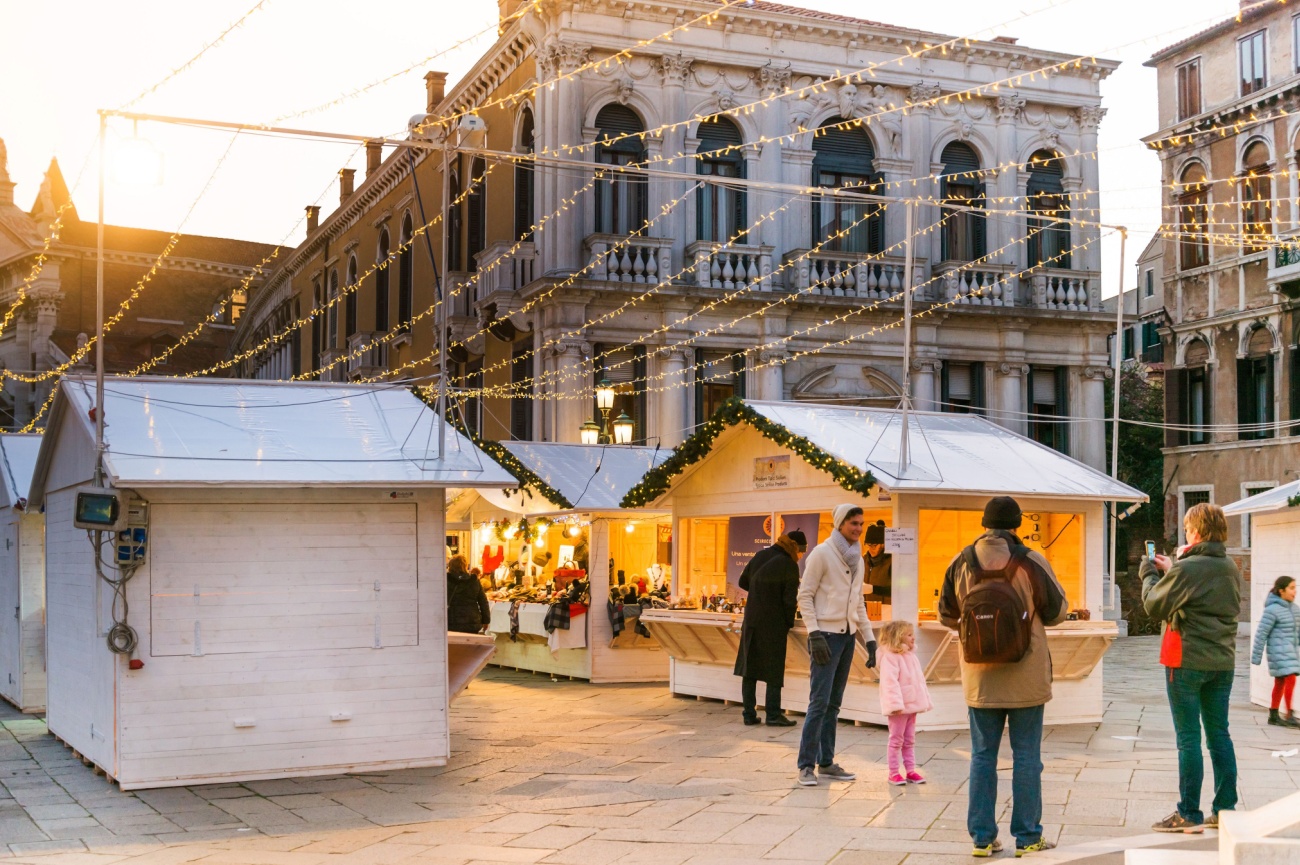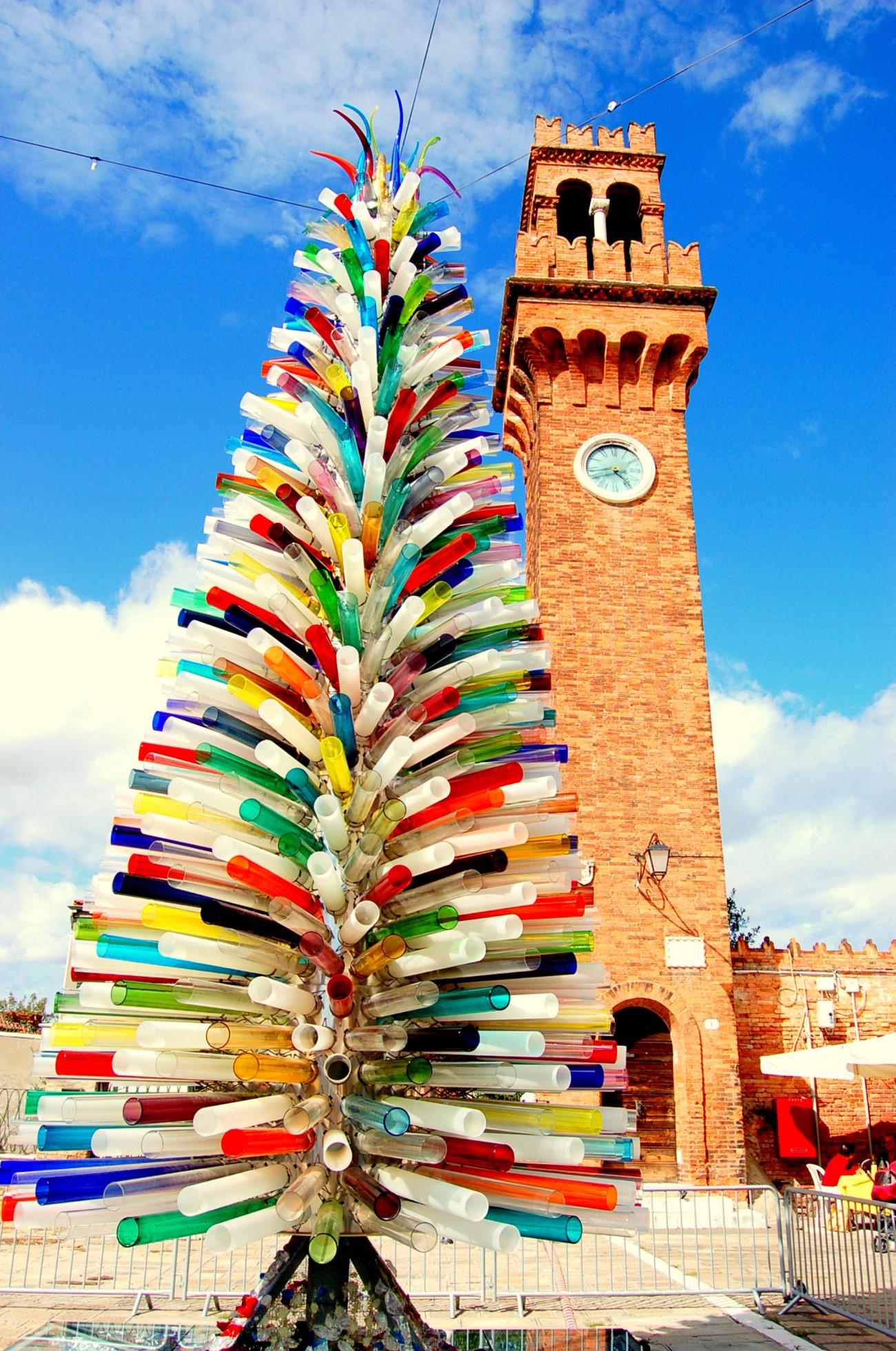Things to Do in Venice: 5-Day Itinerary
Venice, the City of Canals defies reason as it floats above the lagoon on ancient stilts. The streets are made of water and the Grand Canal is its Main Street. For 800 years, the maritime empire was the gateway to the East. This strategic location on international trade routes brought immense wealth to Venetian merchants who spent lavishly on building Venice into the illustrious city it is today.
Piazza San Marco is the grand entrance to the city welcoming travelers with lacy gothic buildings, elegant bistros, and legions of pigeons. You will understand why this square has been dubbed “the world’s most beautiful drawing room” as the facade of the Basilica of San Marco shimmers in the sun and the pink-marbled Doge's Palace stands as a symbol of Venetian power and wealth.
The most recognizable Venetian landmark, the Rialto Bridge is a short walk from the Rialto Mercato and canal-side Pescheria, where fisherman have sold their fresh catches for nearly 1,000 years. There is nothing more bewitching than wandering the serene side streets of La Serenissima only to discover a little osteria or skimming along the Grand Canal on a sunset gondola ride.
Nights in Venice are magical as music wafts and lights twinkle across the water. Old-world cafés bustle with energy and the silhouettes of gondola moorings reach for the moon. There is something incredibly romantic and mysterious about Venice after dark.
Use our 5-day itinerary to pack in the popular tourist attractions then slow down by exploring Venice’s quieter sestieris (neighborhoods) or winery hopping along the Prosecco Road. Allow yourself to get lost in Venice’s enchanting atmosphere.
Day 1 –
Piazza San Marco

Morning: Piazza San Marco
San Marco, the beating heart of the city, welcomes travelers with lacy gothic and baroque buildings. St. Mark’s Campanile, a watchtower built between the 9th and 15th centuries, collapsed in 1902. A replica of the tall, pointy bell tower was rebuilt in 1912 using many of its original bricks. Climb 323 steps to the top for stunning panoramic views over the city, lagoon, and islands.
Caffé Florian
Drink in 300 years of history at Venice’s iconic Baroque coffeehouse which happens to be the oldest café in Italy. Caffé Florian has been slinging their popular hot chocolate known as “Indian broth” since 1720. The gilded dining room and draped patio overlooking San Marco Square make for the most magnificent coffee break you could imagine. Settle in for a signature aperitif or a beautiful brunch and watch the world go by.
Palazzo Ducal
The Doge's Palace was built in 1340 in the Venetian Gothic style but modified over two centuries to include the pink patterned marble façade with its pointy arches and delicate sculptures. The palace served as the residence of the Doge of the Republic of Venice and the seat of the Venetian government. Tour the palace’s courtyards, piazzettas, and administrative chambers. The loggias are accessible from the chambers and offer gorgeous views of the basilica and lagoon. The Grand Council Hall boasts the world's largest canvas painting, Il Paradiso, measuring 9 x 22 meters. The eastern wall of the hall is consumed by a glorious depiction of the coronation of Mary in Heaven painted by hometown artist, Jacopo Robusti, also known as Tintoretto. The opulent private apartments of the Doge and the treasure trove of great art in the Museo dell ‘Opera underscore the immense wealth of the Venetian rulers.
Bridge of Sighs
A new prison built in 1600 was linked to the palace via the Bridge of Sighs. The covered bridge is not open-air and can only be accessed during a tour of the Palazzo Ducal. As its name suggests, prisoners would let out a “sigh” as they peered out the windows at Venice before being taken across the bridge to their cells. Lesser-known sites around Piazza San Marco include the Correr Museum which tells the fascinating history of the city of Venice through great Gothic art, sculpture, and decorative arts; Biblioteca Marciana holds an important collection of Venetian manuscripts and world maps; and the National Archaeological Museum of Venice exhibits ancient sculptures from Greek, Egyptian, and Assyrian-Babylonian periods.
Teatro La Fenice
Take a guided tour of Venice’s historic theater, which is a few minutes from Piazza San Marco. The opera house has been hosting performers since 1774 but was rebuilt in a gilded 19th-century style after several fires. The Royal Box is truly magnificent and if you can score tickets, this is one of the world's top destinations for opera and classical shows.
Afternoon: Basilica San Marco
Basilica San Marco, the world’s finest blend of Byzantine, Romanesque, and Gothic architecture, is an awe-inspiring sight when approached from the Grand Canal. Plan to spend a few hours in the glorious cathedral built in AD 828 to house the remains of Saint Mark which were stolen from Alexandria, Egypt by a few rascally Venetian merchants. The saint’s shrine is the featured attraction, but the glittering basilica is full of golden mosaics and marble inlay, prominent relics, medieval chapels, and other treasures looted from Constantinople during the Crusades. Highlights include the Pala d'Oro, a golden altar bedazzled with gems and pearls and the Quadriga of San Marco, a series of four bronze horse sculptures from the Hippodrome in Constantinople. The original horses are in the cathedral treasury, while reproductions rear up in triumph outside above the main archway. Also on the exterior, a 4th-century red stone statue of the Roman Empire’s Tetrarchs is attached to a corner of the basilica. Take a guided tour to put the cavernous cathedral into historical context.
Day 1 - Piazza San Marco, Venice Tour Map
Day
2 – Rialto and San Polo Districts

Morning: Rialto Bridge
Pilgrimage across the gleaming white Rialto Bridge for an iconic view of the Grand Canal. Rebuilt in 1588, the Rialto is a feat of Renaissance engineering and is one of four remaining bridges to span the Grand Canal. The recently restored bridge arches gracefully over the water between the San Marco and San Polo sestieris. The bridge is flanked by a gallery of shops on both sides of the staircases. For an even dreamier experience, visit at night when the bridge is illuminated.
Mercato Rialto
The Rialto Market, on the San Polo side of the canal, is a few zigzags of streets away from the Rialto Bridge. A lively fresh market has anchored Venice’s commercial center since the 11th century. A casual walk through the two-story arcaded building is a feast for the senses. Keep in mind that Saturday is the busiest day of the week. A different way to experience the Mercato is to sign up for a guided market shopping tour that includes a cooking class.
Pescheria
Local fishermen deliver seafood straight from the lagoon to the market along the Grand Canal. Fishmongers sell live wriggling octopus and other fishy delicacies at the Mercato del Pesce al Minuto, adjacent to the fresh market. The Pescheria and Mercato have everything you need to put together a grand picnic or a fabulous dinner spread if you have a kitchen.
Osteria Giorgione da Masa
For a unique meal in a traditional setting, check out the Osteria Giorgione da Masa near the Rialto bridge for authentic Japanese dishes with a Venetian twist. Try the smoked catch of the day straight from the Pescheria, sushi, scampi, or prawn dumplings.
Day 2, Morning - Venice Tour Map
Afternoon: Gondola Ride or Walkabout
- Walking Tour: Dive into the history of Venice with a guided walking tour. Several companies conduct fun, off-beat walking tours that allow you to see a different side of the city. A handful of reputable free walking tours use local guides who are paid in tips.
- Palazzo dei Camerlenghi: Built in 1488, the three-story, canal-facing palace next to the Rialto Bridge is one of the most iconic buildings in Venice. It once housed the treasurers and financial offices of the Venetian State.
- Fondaco dei Tedeschi: Directly across from the Camerlenghi is the medieval headquarters and residence of the German merchants. The free rooftop terrace offers beautiful views over the canal and city, which are particularly striking at sunset.
- Ponte delle Tette: Ponte delle Tette is a tiny bridge crossing the Rio di San Cassan canal off a side street in the San Polo sestieri. The bridge was an infamous spot for topless prostitutes to muster business during the 16th through 18th centuries.
Sunset Gondola Boat Ride
Ever wonder about the colorful striped mooring posts and clusters of wooden poles dotting the canals and lagoon? The dama and palines have both a practical purpose and decorative function. The wood poles known as bricoles are tied into clusters called damas to mark deeper navigable areas in the lagoon. The striped palines are moorings that were originally painted in the noble families’ colours and are used to tie up the gondolas, like a private parking place.
We recommend booking a gondola ride in advance, otherwise, you will have to pay cash but can negotiate the rate and length of tour. Evening rides are pricier, but it is enchanting to see Venice at a calmer pace during the golden hour.
Day 2, Afternoon - Venice Tour map
Day
3 – San Polo District

Morning: Basilica of Santa Maria Gloriosa dei Frari
Traghettos are a great way to get around Venice. They are cheaper gondola-like ferries where riders stand up during a short trip. Hop a traghetto to the oldest part of Venice in San Polo to visit the 13th-century Basilica of Santa Maria Gloriosa dei Frari, simply nicknamed, “The Frari”. As the largest church in Venice, the nave is cavernous and notable for its soaring gothic arches, grand tombs, and many chapels. The main attractions are Titian’s Assumption of the Virgin painted in 1518 and Bellini’s Frari Triptych, painted in 1488.
Tintoretto Scuolo Grande di San Rocco
Across the campo from The Frari is the 16th-century school and Church of San Rocco, where Tintoretto honed his craft for 20 years. More than 60 of Titian’s works are seen throughout the halls, chapels, and church. Also worth noting is the Grand Staircase, the treasury, and artworks by other masters who practiced here such as Titian and Tiepolo.
Partake in the Ombre e Cicchetti Hour
Do as the locals do and indulge in a pre-lunch “shadow of the afternoon” drink and tapas-style small bites. Wine bars throughout Venice serve toothpick treats like meatballs, Octopus polpo, and cod baccala with vino, Prosecco, or a spritz. Cantina Do Mori in San Polo is Venice’s oldest tavern. It has been celebrating the ombre hour since 1462 and was Casanova’s legendary haunt. The ombre tradition is usually a stand-up snack, so bottoms up - eat it and beat it.
Day 3, Morning - Venice Tour Map
Afternoon: Cannaregio Sestieri
Slow down with a visit to Venice’s residential, less touristy Sestieri stretching from the Grand Canal to the lagoon. Grab a quick vaporetto to this colorful gem of a neighborhood where the locals eat, drink, and play. It has a vibrant nightlife and spectacular views of the lagoon.
Strada Nuova
The main artery and one of the longest streets in Venice stretches from the Santa Lucia Train Station to the Campo Santi Apostoli and then on to the Rialto Bridge. The street changes names a few times but is lined with perfumeries, glass and art galleries, souvenir shops, and plenty of osterias. Strada Nuova is a touristy thoroughfare but step off the main drag to experience everyday Venetian life.
Teatro Italia Despar
If you're wandering around central Cannaregio, be sure to step into Teatro Italia Despar — the most beautiful supermarket in Venice. This restored Art Nouveau theatre is both a grocery store and a tourist attraction, where you can shop for provisions while admiring early 20th-century frescoes.
Church of Madonna dell’ Orto
One of the most important churches in Venice should not be missed while exploring Cannaregio. The art-filled 15th-century church is a veritable museum of high Renaissance and Baroque sculptures and paintings, including several by Tintoretto, who grew up nearby and is buried in the church choir.
Casa Tintoretto
Across the canal from the Church of Madonna dell’Orto stands Casa Tintoretto, the former home of the renowned Renaissance artist, Tintoretto.
Campo dei Mori
The square, known as Campo dei Mori, takes its name from the three intriguing sculptures of turbaned Moorish spice merchants who once lived in the area. The high-relief carvings are set into the old walls of the surrounding buildings near Tintoretto’s home.
Ghetto Vecchio
Cross over the Ponte de Gheto Novo, to wander through the first-ever Jewish ghetto. The Campo of the Ghetto Novo (new ghetto) is where the Venetian Jewish community were sequestered for nearly five centuries. The synagogue and adjacent museum, built just after WWII, exhibit artifacts and showcase Venice as a city of refuge. Grab a traditional Venetian Jewish cookie, an almond impade from Panicificio Volpe Giovanni, a tiny kosher bakery that also sells bread, cheese, and wine.
Calle Varisco
Calle Varisco, the narrowest street in Venice, is just a short walk from the Rialto Bridge. The 53 cm-wide passageway is definitely not the place to squeeze through after a hearty pasta dinner!
Ponte Chiodo
Ponte Chiodo, or the “Nail Bridge,” is one of only two bridges in Venice built using ancient techniques and is the last of its kind on the mainland. With no parapet, it’s simply a staircase arching across the canal — its twin can be found on the island of Torcello.
Day 3, Afternoon - Venice Tour Map
Day 4 – Murano, Burano & Torcello Islands

Morning: Murano
The glass capital of Italy is a 15-minute vaporetto lift across the lagoon. It is worth visiting if you are interested in learning about the island’s long tradition of exquisite glassmaking, shopping for colorful millefiori treasures, or taking a class. Sign up in advance for a glass-blowing workshop at the Murano Glass Company. They will ship home your handmade piece, so you do not have to carry it.
Afternoon: Burano and Torcello
Burnao and Torcello in the northern end of the lagoon are 45 minutes from the mainland but are only a few minutes apart making it easy to visit both in a short time.
The island of Burano is best known for the brightly colored houses painted by fishermen’s wives so their husbands could navigate home from the foggy sea. Burano also has a long tradition of lacemaking dating back to 1500, an industry that supposedly grew from women repairing fishing nets. Visit the Burano Lace Museum and shop for frilly tablecloths or napkins. Another point of interest is Burano’s 16th-century Campanile Storto di Burano, or the Leaning Tower of Burano.
Torcello is a wild and mystical island that is mostly a nature preserve. It is considered the birthplace of Venice as it was first settled around the 5th century AD. Visitors go to see the 9th-century Basilica di Santa Maria Assunta for its Venetian-Byzantine mosaics and the incredible views of nearby Burano from its bell tower.
The Ponte del Diavolo, the Devil’s Bridge built with no parapets, is the twin to the Ponte Chiodo in the Cannaregio sestieri. Torcello’s Provincial Museum exhibits archeological artifacts from the island’s early history and displays a stone seat known as Trono di Attila, Atilla’s throne, which most likely was a bishop’s seat.
Day 4 - Murano, Burano & Torcello Islands Tour Map
Day
5 – Castello Sestieri

Just east of the San Marco sestiere (district) lies Castello — the largest of Venice’s six historic districts and one of its most authentic and least touristy areas. Once the site of the city’s original Byzantine shipyard and Arsenale, Castello is now known for its leafy parks and Via Garibaldi, one of Venice’s few wide avenues. Every two years, it hosts the Venice Biennale, a prestigious international contemporary art exhibition held from April to November.
Morning: Basilica Santa Maria della Salute
The bright white church with its enormous cupola, the Basilica Santa Maria della Salute – known simply as “The Salute” – was designed in 1631 by the eminent architect Baldassare Longhena. This iconic Baroque basilica stands at the narrow tip of Punta della Dogana, directly across from the Palazzo Ducale. Built as an offering to God after the city’s deliverance from a devastating plague, its grand interior is adorned with masterpieces by Titian and, most notably, Tintoretto’s Marriage at Cana.
Pinacoteca Manfrediniana
Tucked beside the Basilica Santa Maria della Salute, the Pinacoteca Manfrediniana is a small, often-overlooked gallery housed in a former seminary. It holds a private collection of 13th- to 19th-century art, featuring works by Bellini, Canova, Cima da Conegliano, Guercino, and others. The quiet cloisters display sculptures and architectural fragments salvaged from long-lost Venetian churches.
Afternoon: Dorsodouro Sestieri
Take a leisurely gondola ride along the Grand Canal to admire the Renaissance palazzos in the Dorsodouro district before hopping off at the Peggy Guggenheim Collection.
- Palazzo Salviati: The namesake Salviati glass company built one of the newer palaces on the Grand Canal in 1903. The Art Deco mosaics were added to the façade in 1924.
- Palazzo Barbaro Wolkoff: The tall, weirdly asymmetrical brick building with pointy gothic arches between Ca' Dario and Casa Salviati was built in the 15th century as a civic building. It was purchased in 1883 by Russian painter Alexander Wolkoff.
- Palazzo Dario: Next to the Palazzo Barbaro Wolkoff is the Palazzo Dario, built in 1487. It is a great example of early Renaissance architecture with its round stained glass-shaped windows. Local tradition says it is cursed and brings bad luck to its owners.
- Peggy Guggenheim Collection: The Peggy Guggenheim Collection is an art museum in the Palazzo Venier dei Leoni, her former home on the Grand Canal. The eponymous collection of 20th-century works is one of the most visited attractions in Venice. The small museum is filled with Dalis, Kandinskys, Pollocks, and other greats of modern art.
- Campo Santa Margherita: The historic square located near the university is home to unpretentious bars, cafes, and eateries. The sober exterior of the Gothic Church of Santa Maria dei Carmini opens to a richly ornamented sanctuary. The church, first built in 1125 and updated through the 17th century, is full of grand frescoes, an intricate arcade, and impressive paintings by Lorenzo Lotto and Cima da Conegliano.
Day 5 - Venice Tour Map
Other Things to See in Venice
- Basilica dei Santi Giovanni e Paolo: The Basilica dei Santi Giovanni e Paolo, known in as San Zanipolo, is a church in the Castello sestieri. It is one of the largest churches in the city and is the burial place for centuries of Venetian doges and other important Venetians.
- Libreria Acqua Alta: The quirky bookstore carries new, used, and rare books and has a famous staircase made of encyclopedias. Because of Venice’s seasonal flooding, the books are displayed in creative ways to elevate them above the water line, like stacked ceiling-high on shelves and piled in gondolas and bathtubs. The bookstore’s friendly neighborhood cats wander freely through the space. The store is only accessible by foot.
- Market Food and Wine Tour: Eat, drink, and sightsee along the side streets and canals with several well-established food tours. Take a cicchetti and spritz tour, a street food tour, or a Rialto Market shopping tour that includes a cooking class.
- Mask-making Workshop: Take an educational hands-on class at one of the many mask shops where you will learn the ancient techniques of creating papier-mâché masks, the traditions of Carnival, and paint and decorate your own masterpiece.
- Palazzo Grassi: The Pinault collection of contemporary art is exhibited in the magnificent Palazzo Grazzi’s 18th-century rooms. You can’t miss the revered building’s classical white façade prominently positioned on the Grand Canal, between the Palazzo Moro Lin and the campo San Samuele. The Grassi, built in 1748, was the last Patrician palace to be built on the Grand Canal as a customs building.
- Venice Lido: Escape the summer heat by hopping a vaporetto to the closest beach, which happens to be an 11-kilometre barrier island protecting Venice from the Adriatic Sea. Upon arrival at the Lido, exit the docks and follow via Santa Maria Elisabetta which crosses the island to the beaches. Turn your day trip into an overnight visit by. Staying at one of the many waterfront hotels or resorts.
- Gallerie dell’Accademia: Located on the south bank of the Grand Canal near the Accademia Bridge, this renowned museum houses the world’s largest collection of Venetian art from the 14th to the 18th century. Masterpieces by Bellini, Carpaccio, Veronese, Tintoretto and Titian are displayed in the former Scuola della Carità. The museum offers a fascinating journey through the development of Venetian painting, including the famous Vitruvian Man by Leonardo da Vinci, which is occasionally on view.
- Ca’ d’Oro (Galleria Giorgio Franchetti): One of the most beautiful palaces on the Grand Canal, Ca’ d’Oro, or the "Golden House," is a masterpiece of Venetian Gothic architecture. Built in the 15th century, the palazzo now houses the Galleria Giorgio Franchetti, a fine art museum featuring paintings, sculptures, tapestries, and bronzes collected by its namesake. Highlights include works by Titian, Mantegna and Van Dyck, all displayed in elegant rooms overlooking the water.
- Ca’ Pesaro – Galleria Internazionale d’Arte Moderna: Overlooking the Grand Canal in the Santa Croce district, this Baroque palace is home to Venice’s modern art museum. The collection includes works by Klimt, Chagall, Kandinsky, and Picasso, along with important Italian modernists. The building itself is a striking example of 17th-century design by architect Baldassare Longhena, and the upper floors host the Museum of Oriental Art.
- Torre dell’Orologio: Towering above the entrance to the Mercerie from Piazza San Marco, the Renaissance clock tower is one of Venice’s most recognisable landmarks. Built between 1496 and 1499, it features a richly decorated façade with a winged lion of St. Mark, astronomical clock, and two bronze Moors who strike the hours. Guided tours allow visitors to climb the tower and explore its intricate mechanisms and historical rooms.
- Scala Contarini del Bovolo: Just a few minutes’ walk from Campo Manin, Scala Contarini del Bovolo is a small but striking Renaissance staircase known for its distinctive spiral design. Built in the late 15th century, the external staircase wraps around a cylindrical tower and leads to a belvedere with panoramic views over the rooftops of Venice.
- Museo di Palazzo Grimani: Hidden away near Campo Santa Maria Formosa, this elegant Renaissance palace offers a peaceful retreat from the busier museums. Once home to the Grimani family, it now showcases classical Roman sculptures, frescoes, and archaeological finds. The architectural design, influenced by Roman antiquity, is unique in Venice, and the reconstructed Tribuna room is particularly impressive.
- Palazzo Mocenigo: Located in the Santa Croce district, Palazzo Mocenigo was once the home of a noble Venetian family and now houses the Museum of Textiles, Costume, and Perfume. The museum explores the evolution of fashion in Venice from the 17th to the 18th century, with original garments, accessories, and displays on historical perfume-making.
- Musica A Palazzo: For an intimate cultural evening, Musica A Palazzo offers chamber opera performances inside a 15th-century palace overlooking the Grand Canal. Rather than a traditional stage, each act unfolds in a different room of the historic Palazzo Barbarigo Minotto, creating a truly immersive experience. The repertoire includes classics such as La Traviata and The Barber of Seville, performed up close in candlelit surroundings.
Things to Do with Kids in Venice
- Glass-blowing Workshop on Murano: Take a beginner glass-blowing workshop on Murano to learn the basics of glass making and create a blown artwork, that can be shipped to your home.
- Natural History Museum of Venice (Giancarlo Ligabue): Housed in the imposing Fondaco dei Turchi on the Grand Canal, this family-friendly museum presents natural wonders in an engaging, interactive way. Highlights include dinosaur skeletons, a whale room, and thousands of zoological and botanical specimens.
- Museo Leonardo da Vinci: This small but engaging museum, located near Campo San Rocco, explores the genius of Leonardo through interactive exhibits and working models based on his inventions. Visitors can test mechanical devices, explore his anatomical studies, and learn about his groundbreaking engineering and artistic achievements. Ideal for families and anyone with an interest in science and creativity.
- Creature di Gomma – Venice Vintage Toys: Tucked away in the Santa Croce district, this quirky little museum is a treasure trove of vintage rubber toys and collectables. With everything from classic cartoon characters to nostalgic figurines from the 1950s to the 1980s, it’s a delight for children and adults alike. The colourful displays offer a playful glimpse into the toy-making history of Italy and beyond.
- Museo Navale (Naval Museum): Just a short walk from the Arsenale, the Naval Museum offers a fascinating look at Venice’s maritime past. Spread across several floors, it features beautifully detailed model ships, navigational instruments, and naval artefacts. A separate pavilion is dedicated to the historic Arsenale, once the beating heart of Venice’s naval power.
- Gelateria Nico: Located along the sunny Zattere promenade, Gelateria Nico has been serving some of Venice’s best gelato since 1935. It's especially famous for its gianduiotto—a decadent hazelnut chocolate bar served in a cup and topped with fresh whipped cream. With views over the Giudecca Canal, it's the perfect place for a mid-afternoon treat or a relaxed waterfront stroll.
- Caribe Bay (Aqualandia): Just 50 minutes from Venice in Jesolo, Caribe Bay is a Caribbean- themed water park packed with slides, wave pools, and play zones. Voted one of Italy’s top water parks, it offers something for all ages—from gentle paddling pools for toddlers to adrenaline-filled rides for thrill-seekers. It’s a fantastic day out for families looking to escape the city heat.
- Butterfly Arc & Esapolis (near Padua): A short journey from Venice, this nature-focused attraction is split into two parts: Butterfly Arc, a lush tropical greenhouse filled with hundreds of live butterflies, and Esapolis, an interactive insect museum with spiders, ants, and other fascinating creatures. Educational and entertaining, it’s ideal for younger visitors with a curiosity for the natural world.
Where to Play Golf Near Venice
- Circolo Golf Venezia, Lido di Venezia: A round of golf on the windswept beachy tip of the Lido barrier island offers a reprieve from the crowds of Venice. With views of the lagoon and the Adriatic Sea, the casual 18-hole, par 72 course can be challenging with its narrow tree-lined fairways and links-like wind. The golf club has an on-site restaurant, and its most interesting holes pass along the Fortress of San Nicolo.
Racecourses near Venice
Horse racing has long been part of northern Italy’s sporting tradition, and several historic tracks lie within easy reach of Venice by train. One of the oldest and most atmospheric is the Ippodromo di Breda in Padua, less than an hour from Venice, which hosts trotting races in a leafy setting just outside the city centre. A little further afield, the Ippodromo Comunale in Ferrara offers a classic racecourse experience in a Renaissance town surrounded by medieval walls. Races are typically held from spring through autumn, with weekend events drawing both locals and enthusiasts from across the region.
Those willing to travel a bit further will find excellent facilities at the Ippodromo La Ghirlandina in Modena and the Ippodromo di Arcoveggio in Bologna. Both venues are accessible within two hours by direct train from Venice. Arcoveggio is particularly well known for its trotting circuit and regular race calendar, while Modena’s track has a loyal following and a schedule that includes both races and equestrian events. Whether you're a dedicated follower of the sport or just fancy an afternoon at the races, these tracks offer a lively, authentic slice of Italian sporting life.
Day Trips from Venice
- Bologna: The capital of the Emilia-Romagna region is about an hour and a half from Venice by direct train. Bologna is known for its tremendous number of cultural institutions, historical sites, and fantastic food, and as home to Europe’s oldest university founded in 1088. Many sections of the more than 62 kilometers of porticoes throughout Bologna are a UNESCO World Heritage Site. The Piazza Maggiore is the heart of the city and is lined with porticos, cafés, and medieval and Renaissance buildings. Begin your visit to the enormous 14th-century Basilica of San Petronio. Other points of interest around the piazza are City Hall, the Fountain of Neptune, and the other palazzos and churches. Bologna is home to Italy’s other leaning tower, Torre Garisenda, which is currently under renovation to reinforce its tilt, but you can climb nearly 500 steps to the top of its neighboring Asinelli Tower for spectacular views over the city. Bologna is the birthplace of the meaty Ragu alla Bolognese, and is famous for tortellini in Brodo, meaty mortadella and Prosciutto. A good way to get an overview of Bologna’s vast culinary traditions is to take a walking food tour.The Museo Ferruccio Lamborghini, on the outskirts of Bologna, is an automobile museum that tells Lamborghini’s captivating history through displays of early cars, recent super sports cars, his personal car collection, and a driving simulator.
- Ferrara: Another incredible UNESCO World Heritage Site with a glorious history is only one hour away by train. During the Renaissance, Ferrara became known as a center for intellectual and artistic freedom. It is notable as the first modern town, embodying the Renaissance vision of “ideal city planning.” The growth of Ferrara is closely linked to the powerful Este family. Many of Ferrara’s attractions are grand symbols of the Este power, such as the impressive, moated Castello Estense, with its sumptuous private chambers. Their Renaissance Diamanti Palace is uniquely clad in white and pink diamond-patterned marble and is home to the National Picture Gallery. Artists such as Piero della Francesca, Mantegna, and Michelangelo worked within the Este Court whose practice of art collection became a model for the Medici family and Popes.The Romanesque Ferrara Cathedral with its striking three-story facade anchors the medieval core of the city. Ferrara is a very bike-friendly city. If you have time, take a ride around the 9 km of uninterrupted trails around the city walls, which are some of the most important defensive systems in Medieval history.Ferrara boasts a culinary tradition dating back to the Middle Ages, with one of the traditional dishes of cappellacci di zucca originating during the Este era. The hat-shaped pasta is stuffed with a slightly sweet and savory pumpkin or squash filling and can be found on menus throughout the city.
- Padua: Padua claims to be the oldest city in northern Italy and is 30 minutes by train from Venice. According to a tradition Padua was founded in 1183 BC by the Trojan prince Antenor, who is believed to have led the people of Eneti from Anatolia into Northern Italy’s Veneto region. Don’t miss a visit to the Scrovegni Chapel for its famous frescoes painted by Giotto in 1303. His visionary techniques of exploring perspective served as a transition from Medieval to Renaissance art. The chapel, also known as the Arena Chapel, is a UNESCO World Heritage Site. The vast 13th-century Basilica of St. Anthony, with its Byzantine-style domes and extraordinary artworks, contains the namesake saint’s tomb. The arcaded streets of Padua's old town are lined with cafés frequented by students at the University of Padua, founded in1222.
- Verona: 90-minute direct train has a charming medieval old town built in the curve of the meandering Adige River. It’s famous as the setting of Shakespeare’s "Romeo and Juliet." A 14th-century home with a tiny balcony is said be “Juliet’s House." Verona, known as “Little Rome,” is rich with Roman antiquities, including a huge 1st-century Roman amphitheater. The Castelvecchio Museum, located within a medieval castle built in the mid-1300s by the Scala family, exhibits medieval and Renaissance art, armor, and Gothic altarpieces.
- Modena: Journey two hours by train to the supercar capital of the world. Modena is a mecca for fancy Italian car lovers and worth the trip to visit the Enzo Ferrari Museum has exhibits on the life and work of the car designer, in his childhood home, plus iconic models in a futuristic building. In the 18th-century Museum Palace is the Estense Gallery, with works by Tintoretto and Correggio, plus a bust by Bernini.
Wineries near Venice
The Veneto region has a favorable climate allowing the growth of a wide variety of grapes. The area is known for its red Valpolicella, including Amarone, sweet white Soave, and sparkling Prosecco. Plan a day trip along the Prosecco Road. It’s easy to take a train to Conegliano, the gateway to Prosecco, and hire a driver from there. The Prosecco trail is as long and winding, as it is scenic. Sign up for a guided tour to let someone else do the driving.
For one-stop drinking with mountain views, head to Bar Alpino in the town of Valdobbiadene which serves a great variety of Proseccos by the glass, local cheese, polpettes, and prosciutto at a reasonable price point.
Prosecco Wineries
- Marchiori Wines: The incredible family-owned vineyard offers tastings and an education in Prosecco. Set among the rolling hills of the Veneto region, Marchiori combines generations of winemaking expertise with a warm, welcoming atmosphere. Visitors can tour the vineyards, learn about the traditional Charmat method used to produce their sparkling wines, and enjoy guided tastings paired with local delicacies.
- Nino Franco: Purveyor of elegant sparkling wines from vineyards on a sprawling family estate. Located in the heart of Valdobbiadene, Nino Franco is one of the oldest and most respected Prosecco producers in the region. Visitors can explore the estate, sample a range of sparkling wines—including the acclaimed Rustico and Grave di Stecca labels.
- Col Vetoraz: A vineyard perched on a magnificent hillside with a beautiful Prosecco-tasting room. Located in the heart of Valdobbiadene, Col Vetoraz offers sweeping views over the UNESCO-listed Prosecco hills. Visitors can sample a range of DOCG Proseccos, including the prestigious Cartizze, while learning about the estate’s commitment to traditional methods and sustainable practices.
Must-Try Dishes in Venice
You simply can't visit Venice without indulging in a cicchetti crawl. These traditional Venetian small bites — pronounced “chick-ket-tee” — are the perfect pairing with a glass (or three) of spritz or prosecco. Served across the city in cosy bacari (wine bars), enotecas (wine shops/bars), cantinas (cellars or rustic taverns), cicchetterias (bars specialising in cicchetti), and osterias (traditional inns or eateries), cicchetti range from marinated anchovies and meatballs to creamy baccalà (salt cod spread) and grilled vegetables on crusty bread. Think of it as Venice’s answer to tapas – informal, flavourful, and meant to be shared.
For an authentic cicchetti experience, seek out local favourites like Osteria Ai 4 Feri Storti, Al Timon, Bacarando in Corte dell’Orso, or the much-loved Ca’ d’Oro Alla Vedova. Cantine del Vino già Schiavi is a classic stop along the Dorsoduro canal, while Osteria Al Squero (located opposite the old gondola workshop) is perfect for a snack with a view. Don’t miss La Zucca (meaning "The Pumpkin") for a more refined take, or Osteria La Lanterna (“The Lantern”), a neighbourhood gem where the cicchetti are as warm as the welcome.
Where to Eat in Venice
Fine dining
- Osteria Alle Testiere: Persistence might be needed to reserve a table at this small osteria, but it is worth planning for the exceptional traditional Mediterranean and Venetian seafood dishes and fresh vegetables grown in their own gardens. The menu changes daily based on the fresh haul from the Pescheria.
- Al Covo: Since 1987 Al Covo has been creating refined Venetian classics and the chef’s use of the best local ingredients is legendary. The restaurant is convivial but upscale, with tables for dining al fresco. You can’t go wrong with any raw seafood starters, fresh Adriatic seafood, and traditional polenta or artichokes and white garlic sauce. The sumptuous desserts are made in-house.
Casual Dining
- Osteria Alla Frasca: Located in a quiet corner of the Cannaregio sestieri, this rustic little restaurant serves traditional Italian food with friendly service. Far from the San Marco crowds, this little eatery is nestled under a wisteria-covered pergola. The location is charming, and the food is delicious.
- Bacarretto Bistrot il Siciliano: The small, casual bistro a little off the beaten path near the Rialto Market serves authentic Sicilian cuisine. This hidden gem is a family-run operation serving up southern Italian seafood dishes and classic pasta with a side of welcoming hospitality.
- La Bottiglia: Create your own panino or choose from pre-set charcuterie boards at this authentic Venetian wine and panini bar known for its freshly made focaccia and great cocktails. Enjoy an aperitivo in the lively atmosphere, The perfect place to stop for an aperitivo and a wide range of wines at a reasonable price.
Where to Stay in Venice
- Aman Venice: Housed in a 16th-century palazzo overlooking the Grand Canal, Aman Venice is one of the city’s most luxurious hotels. Behind its modest façade lie frescoed ceilings, silk wall coverings, and chandeliers made from Murano glass. The hotel has just a few lavish suites, a private garden, and refined dining spaces. George Clooney chose the Aman Venice for his wedding in 2014, and it continues to attract guests seeking discretion, grandeur, and old-world charm.
- Hotel Cipriani, A Belmond Hotel 5*: One of the most celebrated Venetian hotels is somewhat removed from the touristy part of Venice. It is located on an island providing mesmerizing views of the lagoon and Doge’s Palace from glamorous modern rooms. The hotel provides private boat service to the mainland and has an Olympic-sized pool, spa, and Michelin-starred restaurant.
- Gritti Palace 5*: One of the best Venetian hotels, located on the Grand Canal with views of Santa Maria delle Salute, has 82 sumptuous suites in what was once a private residence of Doge Andrea Gritti. The rooms are fit for a king with gilded furniture, sumptuous drapes, and marble bathrooms. Amenities include a luxurious spa, and restaurant with canal-side dining, and a rooftop lounge with extraordinary views.
- Hotel Danieli, Venice 5*: A historic icon set on the Riva degli Schiavoni, just steps from St. Mark’s Square. This legendary palazzo blends Gothic grandeur with refined modern comfort, offering spectacular views over the Venetian lagoon. Lavish interiors, antique furnishings, and soaring ceilings reflect centuries of opulence. Guests can enjoy cocktails on the panoramic rooftop terrace or dine at the acclaimed Terrazza Danieli, where Venetian flavours meet fine dining.
- Al Ponte Antico 4*: If you want a romantic stay in a relatively quiet part of the historic center, Al Ponte Antico is an attractive choice. The luxurious rooms and suites at the palatial hotel offer postcard-perfect views of the Rialto Bridge. The restaurant and bar have loads of character. Reserve the cozy, private terrace for a truly intimate dinner.
- Palazzetto Pisani Grand Canal 4*: The elegant boutique hotel across from the Guggenheim Museum is made up of two palazzos with rooms overlooking the Grand Canal. The palaces are connected by a narrow calle. The Palazzo Foscolo suites featuring contemporary design overlook the Grand Canal or inner court while Palazzetto Pisani’s rooms are more traditional Old-World Venetian décor.
- Hotel Flora 3*: The 17th-century palazzo is an intimate charming boutique hotel on a quiet street with a secluded lush courtyard. The location is a few minutes’ walk from Piazza San Marco and is a great value for its primo location.
Best Time to Visit
Venice has dry summers and cool, wet winters. May and September are the best times to visit for the temperate weather and relatively speaking, a smaller number of tourists. Crowds descend upon Venice from June through August so prepare to walk elbow-to-elbow on the sidewalks. October and January are the least desirable months as they are the rainiest.
Festivals in Venice
- February – Venice Carnival is the city’s most famous festival, dating back to the 12th century. It fills Venice with colour, music, and tradition. Locals and visitors dress in elaborate masks and costumes, wandering through candlelit streets and over canal bridges. Masquerade balls take place in historic palaces, and gondola parades glide silently through the mist. The festival includes the Flight of the Angel in St. Mark’s Square, live performances, and artisan workshops. Traditional treats like frittelle (fried dough balls with cream or raisins) and galani (crisp, sugar-dusted pastry ribbons) are sold in every bakery. It’s Venice at its best!
- May – Festa della Sensa: A historic Venetian celebration that dates back to the year 1000, Festa della Sensa commemorates Venice’s relationship with the sea. It marks the “Marriage of the Sea,” a symbolic ritual in which the mayor of Venice sails out into the lagoon and drops a gold ring into the water to reaffirm the city’s connection to the sea. The event includes a traditional water parade with decorated boats, rowing competitions, and a small fair at the Church of San Nicolò on the Lido. It’s a lesser-known festival that offers a glimpse into Venice’s maritime power and ancient traditions.
- Summertime – Biennale: One of the world’s most prestigious contemporary art exhibitions, the Venice Biennale has been held every two years since 1895. It takes place across multiple venues, including the historic Giardini and the vast Arsenale, featuring national pavilions and curated exhibitions from leading international artists. The city becomes an open-air gallery, with installations, sculptures, and performances spilling into churches, palaces, and hidden courtyards. The Biennale attracts artists, collectors, curators, and art lovers from around the world.
- June – Vogalonga: A colourful and non-competitive rowing event held each year on the Grand Canal and across the Venetian lagoon. Founded in 1974 as a protest against motorboat traffic, Vogalonga celebrates Venice’s rowing heritage and promotes the preservation of traditional boats. Thousands of participants from around the world take part, navigating a 30-kilometre route in kayaks, gondolas, dragon boats, and vintage rowing boats. The race begins in front of St. Mark’s Basilica and winds through the city’s canals, islands, and open water. It’s one of Venice’s most visually striking festival.
- July – Festa del Redentore: Held on the third Sunday of July, this centuries-old festival commemorates the end of the devastating plague of 1576, which claimed the lives of thousands, including the famous painter Titian. The centrepiece is a temporary bridge of barges that connects the Zattere to the Church of the Redentore on Giudecca Island, built as a religious tribute. Locals decorate their boats with lanterns and enjoy dinner on the water before a spectacular fireworks display lights up the Venetian skyline.
- August – Venice Film Festival: Held on the Lido since 1932, the Venice Film Festival is the oldest film festival in the world and one of the most prestigious. It attracts international stars, acclaimed directors, and industry professionals for ten days of red-carpet premieres, award ceremonies, and exclusive screenings. Films are shown at the Palazzo del Cinema and other venues across the city, with the coveted Golden Lion awarded to the best film.
- September – Regata Storica: Venice’s most important rowing event, held on the Grand Canal on the first Sunday of September. The Regata Storica begins with a vibrant water parade featuring traditional 16th-century boats, rowers in period costume, and the iconic Bucintoro, once the official vessel of the Doge. This is followed by a series of high-speed races in various boat classes, including the sleek gondolini. Locals line the canals to cheer on their neighbourhood teams, and decorated grandstands are set up near the Rialto Bridge.
- December – Christmas Market: Venice takes on a quiet, magical charm in winter. A small Christmas market is set up near the Peggy Guggenheim Museum in Dorsoduro, offering local crafts, seasonal treats, and handmade gifts. One of the highlights is the towering Murano glass Christmas tree in Campo Santo Stefano on Murano Island, a striking piece of art made entirely from the island’s famous glass.
- Whether you're visiting for a romantic escape, a family holiday, or a cultural journey, Revigorate can tailor the perfect itinerary for you — including luxury hotels, private tours, and seamless day trips. Let us make your Venice adventure effortless.
